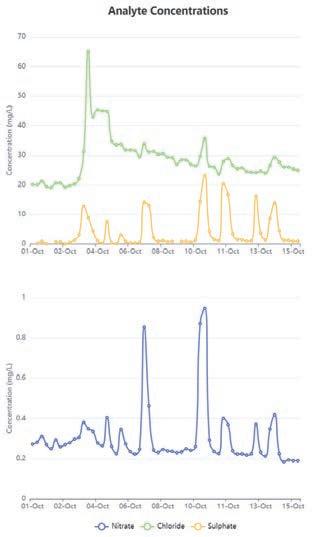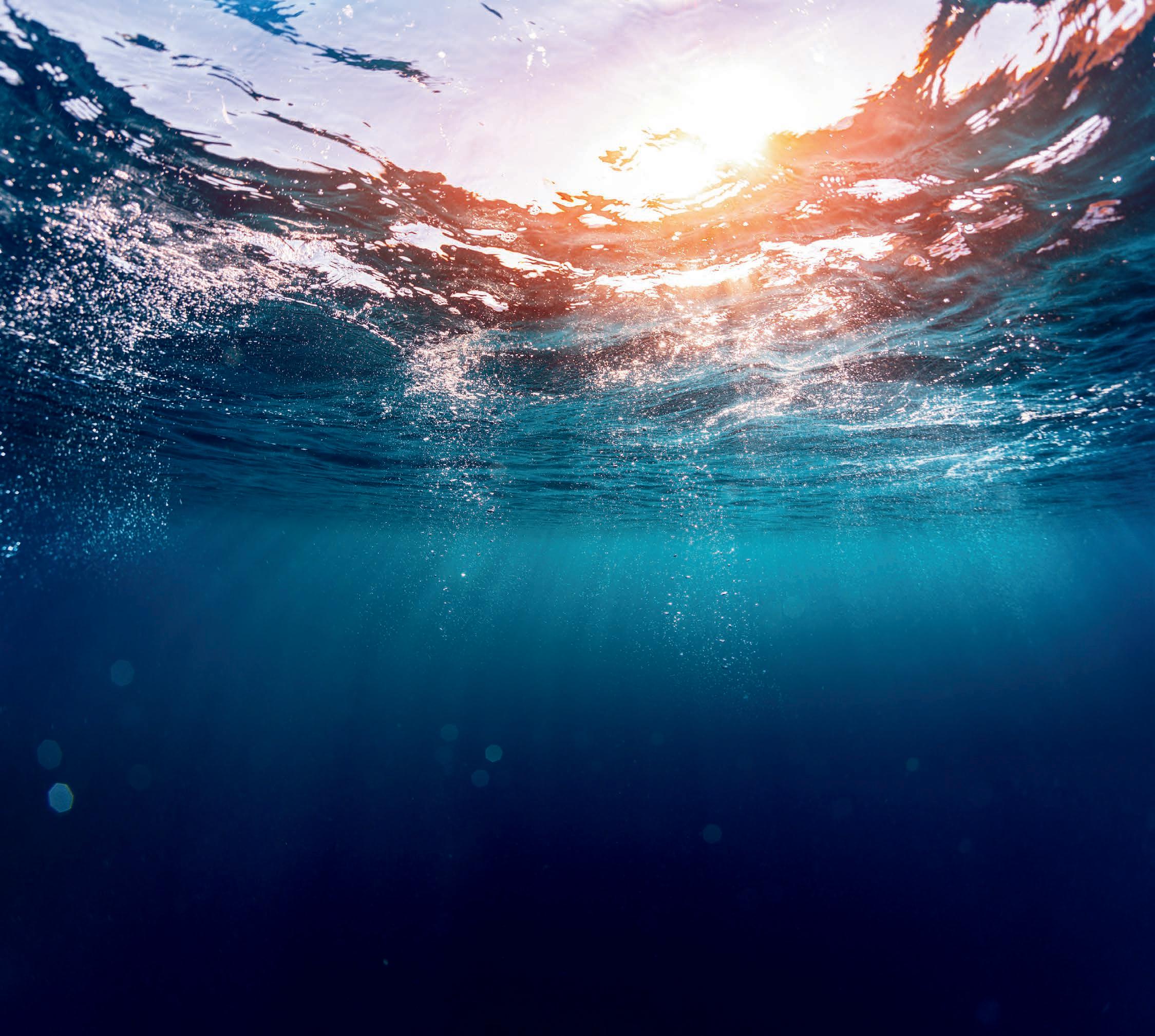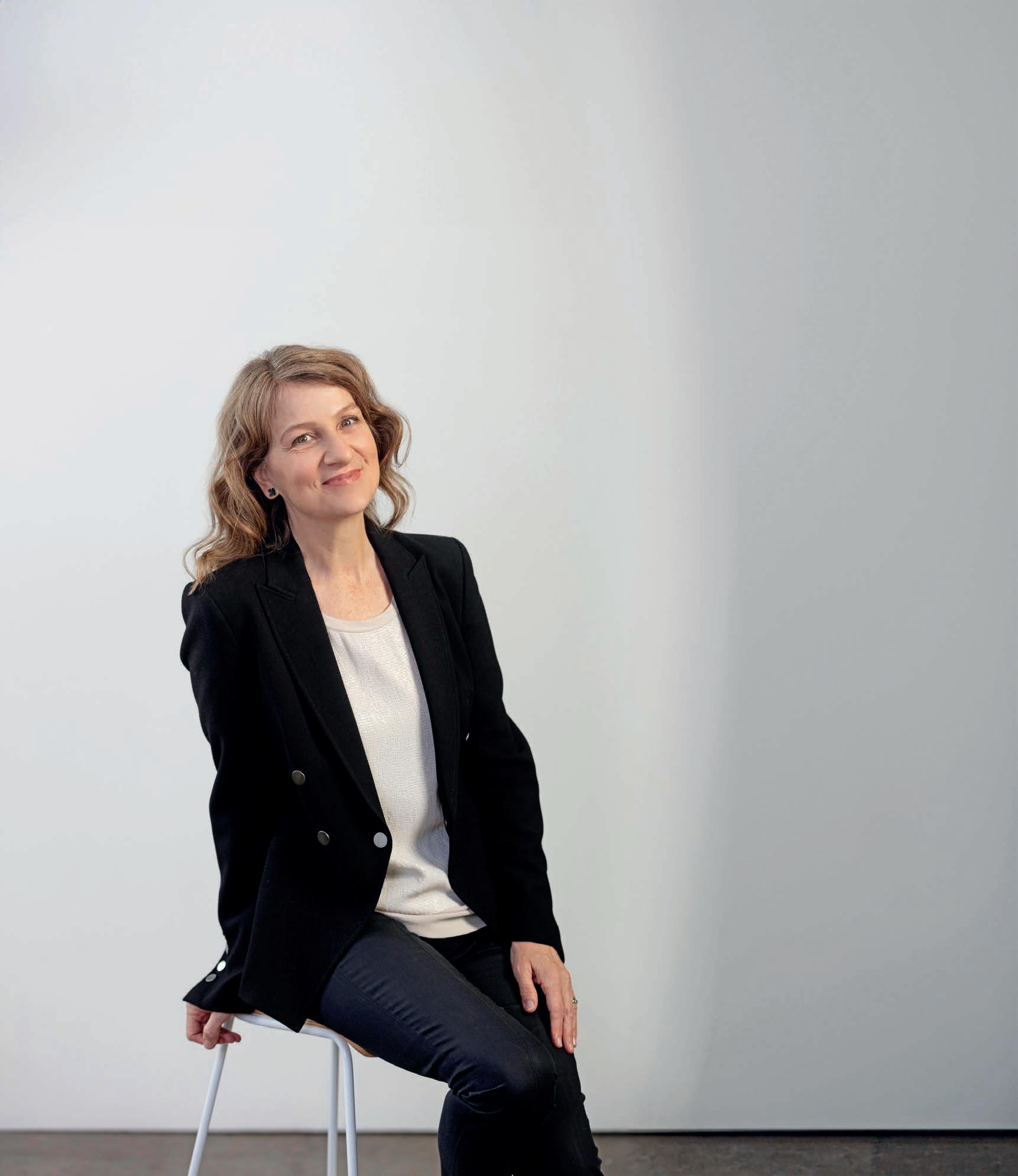








We’re Creating the Future of Water for people and communities, for generations to come


The new chair of South East Water, Lynn Warneke, is charting an innovative course for the












We’re Creating the Future of Water for people and communities, for generations to come


The new chair of South East Water, Lynn Warneke, is charting an innovative course for the



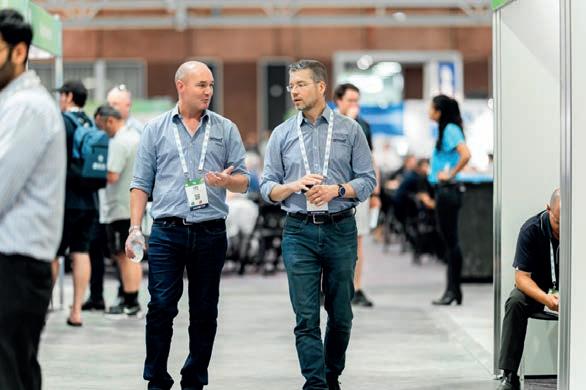
Coagulation process
with an awardwinning Iranian Australian.
Testing for tomorrow –how proper water testing procedures are adapting to change.
The
could influence the future of the Australian and global wastewater industries.
Keeping
moving with the right equipment.
Do
have the proper process for
wastewater management? This company can help.
Enhancing the efficiency of
applications with the right equipment
Streamlining the rehabilitation of water mains
WE ARE NOW approaching two years of Inside Water. As the inaugural editor of this publication, I’ve had the opportunity to meet a range of people and learn an incredible amount about the industry.
We all know that water demands our constant attention, as it is the foundation, if not the bedrock, of every aspect of life. In this issue, we look at some of the issues affecting the water and wastewater industries.
All water utilities across the country and around the world are led by extraordinary people. One of the newest appointments is Lynn Warneke, who is now chair of South East Water. We spoke to Warneke about her vision for the future, emphasising the importance of collaboration and embracing cutting-edge technologies like the Internet of Things (IoT). Her insights are a must-read for anyone navigating the ever-evolving water landscape.
The role of IoT in the water and wastewater industries is continuing to expand. It is revolutionising water management, from real-time leak detection to optimising infrastructure performance. Forward-thinking companies like Dataright and Iota are leveraging the power of big data to streamline operations and ensure a reliable water supply.
It goes beyond that, though. Australia has been hit by multiple extreme weather events, and those events impact communities across the country. Having the systems in place for robust emergency management is critical. Inside Water spoke to water utilities and technology providers to see what they are doing to prepare, plan, and recover. It’s paramount reading for utilities and water managers across the country, as these weather events are only going to become more common and have bigger impacts
on communities and infrastructure. If preparing for an emergency is not enough, providing safe and clean water for everyone is a cornerstone of society. There is a range of companies providing cutting-edge technological solutions for ensuring that water quality is monitored in near real-time. It empowers water utilities and local councils to deliver safe and clean drinking water to their communities.
We also welcome the Water Industry Operations Association and WaterAid Australia in offering editorials that talk about what they are doing. These organisations play an enormous role in the water and wastewater industries, not just in Australia but at a global scale.
Of equal importance is the role of education in the development of workplace culture. There are numerous opportunities for water utilities to become leaders in the field when it comes to providing opportunities for their teams to move up and make a difference for their local community, as well as society as a whole.
We also have some unique products for our readers to review. Cuttingedge technology can be key to improving sustainability outcomes or increasing productivity. One never knows how a new product can improve operational outcomes.
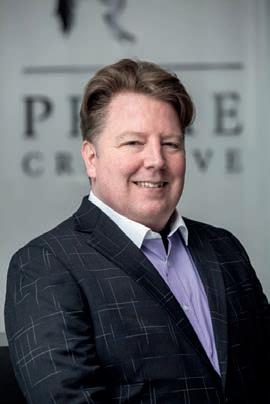
Let the flow of knowledge begin!
Chief Executive Officer John Murphy john.murphy@primecreative.com.au
Chief Operating Officer
Christine Clancy christine.clancy@primecreative.com.au
Publisher Sarah Baker sarah.baker@primecreative.com.au
Managing Editor Mike Wheeler mike.wheeler@primecreative.com.au
Editor Chris Edwards chris.edwards@primecreative.com.au
Design Daz Woolley/Tom Anderson
Head of Design Blake Storey blake.storey@primecreative.com.au
Design Production Manager Michelle Weston michelle.weston@primecreative.com.au
Brand Manager Marina Milisavljevic marina.milisavljevic@primecreative.com.au p: +61 411 833 795
Client Success Manager Glenn Delaney glenn.delaney@primecreative.com.au
Head Office
Prime Creative Pty Ltd 379 Docklands Drive, Docklands, Victoria 3008 p: +61 3 9690 8766 enquiries@primecreative.com.au www.insidewater.com.au
Subscriptions
+61 3 9690 8766
subscriptions@primecreative.com.au
Inside Water is available by subscription from the publisher. The rights of refusal are reserved by the publisher
Cover image
South East Water
Articles
All articles submitted for publication become the property of the publisher. The Editor reserves the right to adjust any article to conform with the magazine format.
Copyright
Inside Water is owned by Prime Creative Media and published by John Murphy. All material in Inside Water is copyright and no part may be reproduced or copied in any form or by any means (graphic, electronic or mechanical including information and retrieval systems) without written permission of the publisher. The Editor welcomes contributions but reserves the right to accept or reject any material. While every effort has been made to ensure the accuracy of information, Prime Creative Media will not accept responsibility for errors or omissions or for any consequences arising from reliance on information published. The opinions expressed in Inside Water are not necessarily the opinions of, or endorsed by the publisher unless otherwise stated.



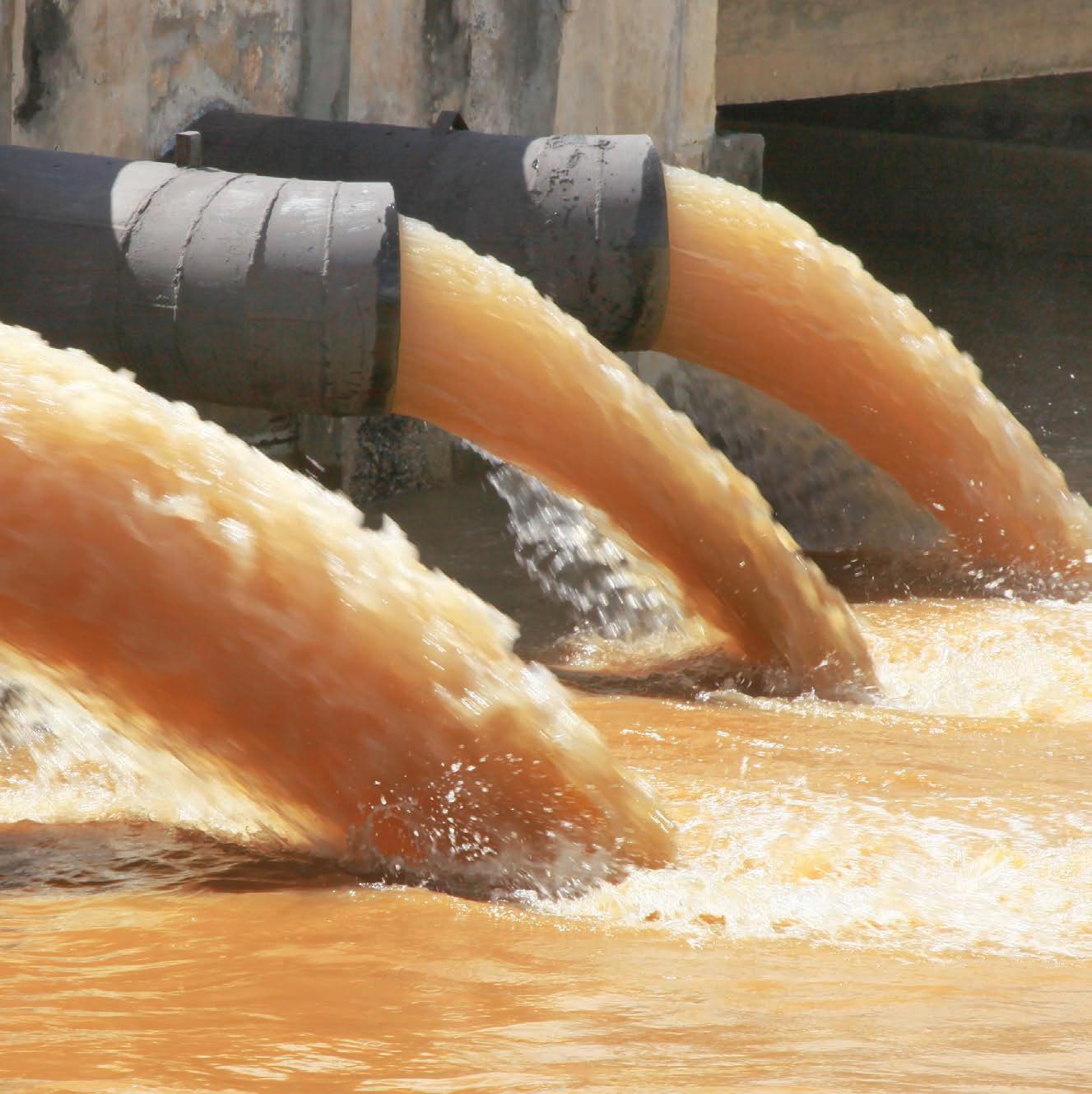
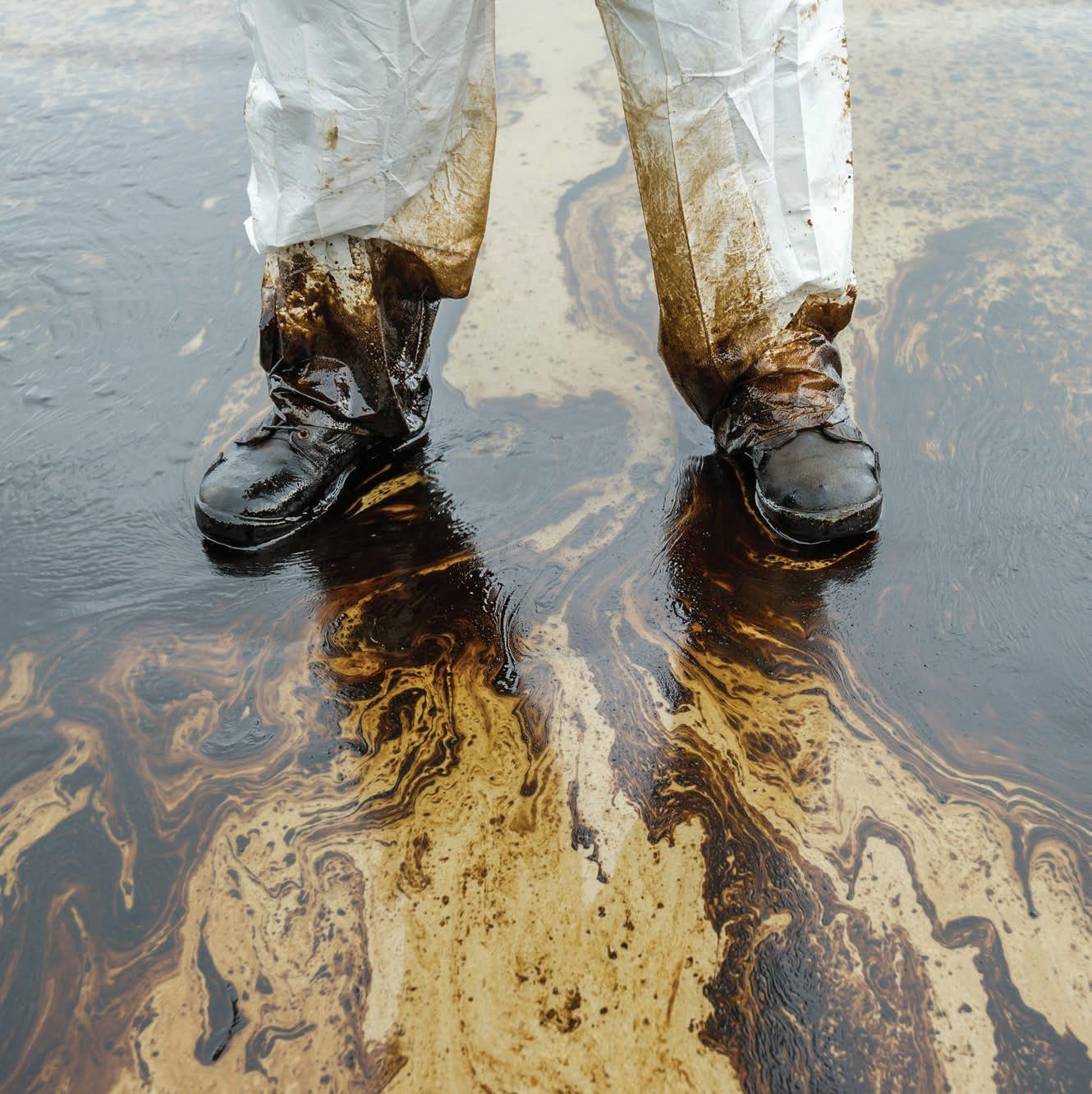



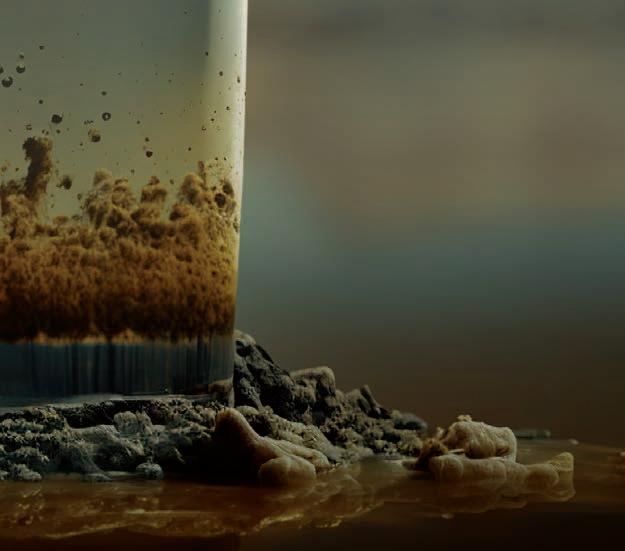
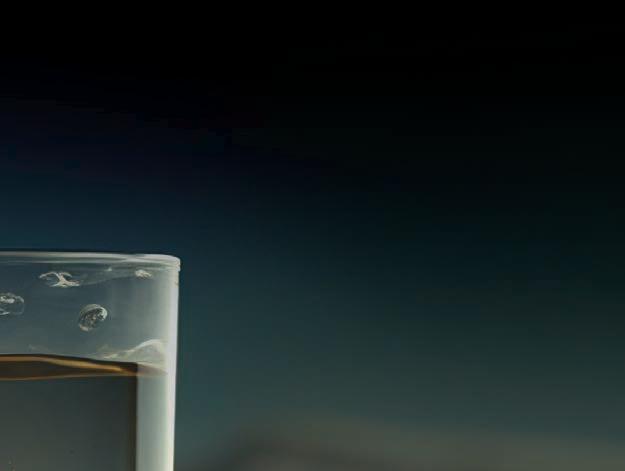




The challenge of managing water resources and advancing clean energy production has become paramount in the business world today. At Hydroflux, our commitment to rethinking is ingrained in our DNA because we recognise that each challenge is unique. Whether you’re a local municipality, a global manufacturer, or anything in between, we’re driving sustainable change – now. Specialising in water, wastewater, renewable energy, climate resilience and environmental protection, Hydroflux provides a vast range of certified carbon-neutral products and services to help solve some of your most complex challenges.
With tailored solutions, ongoing support and a commitment to measurable results, Hydroflux is rethinking what’s possible to build a better future.
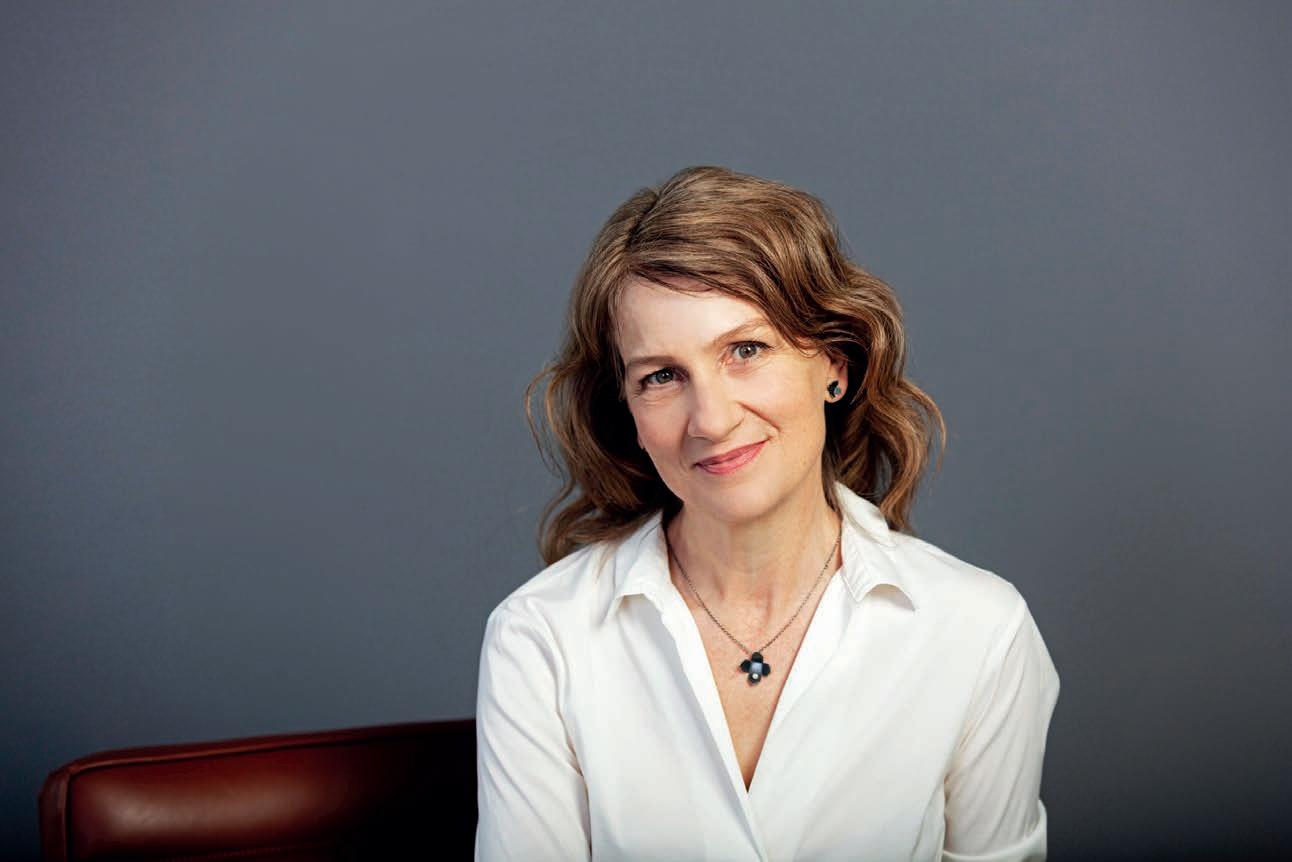
With the change of guard at South East Water, Lynn Warneke has stepped up her new portfolio career path. Her background in digital transformation and emerging technologies will continue to see South East Water as a pinnacle of innovation.
“I’VE JUST FINISHED a Master’s of Law, focusing on technologies, corporate, and climate law,” said South East Water Chair Lynn Warneke. “I’ve been getting very involved and passionate about digital innovation as part of a low-carbon future, and the Victorian water sector is doing a lot of work in leading action on climate change, adaptation and mitigation.”
That’s just one reason why Warneke found herself in the water industry.
South East Water has long been a paragon of innovation and digital technological leadership. She wanted to be part of the next sustainable and technological delivery phase.
“One of the things I appreciate about the Victorian water sector is that it continues to be an ESG leader,” she said. “This is not just in the digital space, but also when it comes to Traditional Owner engagement.”
At its simplest, the most fundamental benefit the water industry can provide people is life. It’s been proved that humans can only live for about three days without water.
“It’s essential for human life and our flora and fauna,” Warneke said. “Beyond that, it’s essential to the economy, for example, in agriculture and food production. Then, we need to look at the Australian way of life, which has a significant focus on recreational and sporting pursuits. It’s all about water in various ways, and that’s why South East Water’s purpose to deliver healthy water for life for customers, community and environment is critical.”
She understands that ensuring South East Water’s customers’ safe, healthy, and sustainable way of life comes from developing forward-thinking water solutions for everyone. At the same time, having
Lynn Warneke is the Chair of South East Water.Images: South East Water
that water at a reasonable price for its customers is fundamental.
During a cost-of-living crisis, every utility has to lead in supporting thousands of customers dealing with a myriad of issues. Like every Australian water utility, South East Water works to make its customers’ experience better every time.
“A huge part of what South East Water is doing when it comes to affordable water pricing is coming through our digital transformation journey,” Warneke said. “Our evolution into a digital utility is key to ensuring greater efficiency and effectiveness in the network.
Our work in that space, through investments in digital metering and the Internet of Things (IoT), will give us unprecedented visibility into our network.”
By shifting to a new digitallyenabled operating model, Warneke believes that data-driven insights will allow South East Water to optimise pre-emptive and reactive maintenance programs. That comes with additional benefits for its customers.
“This shift will provide our customers with unprecedented visibility into their household water use, as well as our business customers,” she said. “At this stage, we have notified about 14,200 customers of leaks. That represents about 15.6 per cent of all our customers with digital meters. That has saved 1.25 billion litres of water that otherwise would have been lost. To give people an idea of the benefit in dollar terms, our customers have saved $5.2 million on their water bills.”
Those numbers represent tangible outcomes from the digital metering program. It’s also just a taste of what South East Water can do to help its customers save drinking water and money. This is before the work is done on predictive, preventative, and reactive maintenance programs.
Iota and benefits to all
Part of South East Water’s drive comes from its wholly-owned subsidiary, Iota. Its job is to take
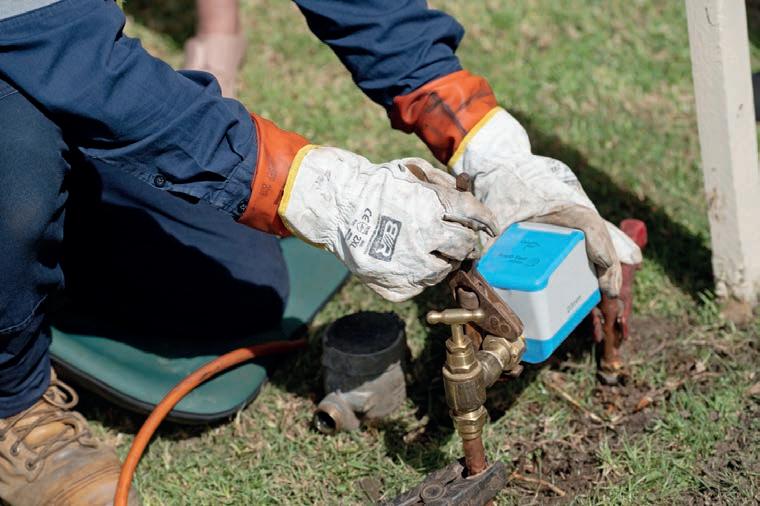
the research and development generated within South East Water and find ways to scale it up to commercial levels.
“Iota has developed a comprehensive set of products, services, platforms, and offerings that leverage IoT, technology, and telemetry across the water network,” said Warneke. “If we look at it from a platform perspective, Iota and South East Water offer a range of product offerings, with the digital water meter being central to them. The Lentic platform can provide a single pane of glass to assess water use.”
Footprint is similar in that it can offer commercial customers, such as shopping centres, granular data about how water is used across their properties.
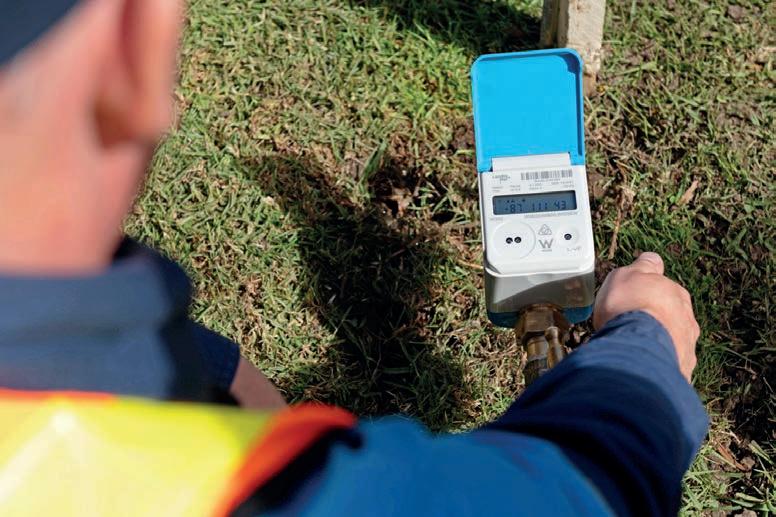
Part of that granular data then involves communicating issues with residential and commercial customers. Customer, community and stakeholder engagement is vital for water utilities, and South East Water is doing its best with proactive, ongoing engagement.
“The digital metering program of South East Water and Iota’s services and products means that domestic and business customers can gain greater visibility into their water use,” she said. “It’s not just about engaging with customers to tell them how they can reduce their water use; it’s about optimising our digital channels to engage effectively with our diverse customer cohort and provide them with timely and actionable information.”
Any water utility worldwide faces the challenge of actively engaging with various communities. This includes not only those from multicultural communities but also those who consider different socioeconomic factors.
“It remains essential for South East Water to feed customer needs into how we think about our service design,” Warneke said. “One of the formal ways we do this is through the Customer and Community Advisory Council. The Council meets four times a year and has industry and community members representing our diverse customer base and community. Industries and fields include agriculture, behaviour change, customer advocacy, environment, local government, multicultural affairs, plumbing, building technology and youth.

The water sector has traditionally been male-dominated. However, the Australian water industry is a leader in increasing diversity across management teams. According to Warneke, the change is already underway.
“The Victorian Government and Department of Energy, Environment and Climate Action (DEECA) are to be congratulated for their gender diversity efforts,” she said. “With female chairs now slightly outnumbering male chairs among Victorian water utilities and more broadly 50:50 gender representation amongst directors, there is now more work to be done when it comes to cultural and other forms of diversity. I know this is a key focus for DEECA and the water corporations.”
There’s also a focus on data plans and actions at the management level and throughout the organisational structure for all water corporations in Victoria. Warneke pointed to the discussion at a recent Chairs Forum organised by VicWater.
“As we know, what you don’t measure, you can’t manage,” said Warneke. “VicWater is doing a lot of reporting and data gathering on diversity in the sector. As I said, the
change is already underway. South East Water remains committed to inclusion and diversity in working and doing business with the many communities within our service area.”
Labour shortages are challenging Every industry worldwide is dealing with staff shortages. The water sector is not immune to this, so having the right partnership in place is vital for water utilities.
“We are fortunate to have solid relationships with our commercial suppliers and partners,” Warneke said. “They form a critical part of our strategic direction.”
Warneke brought an extensive technology executive background to South East Water. She is already well-versed in understanding an organisation’s existing challenges while also considering the digital skills that will be required in the future.
“For our future transformation, we will need expertise in data science, artificial intelligence (AI), robotics, sensors, IoT and cybersecurity, as just a few examples,” she said. “Australia is already facing a significant skill shortage in many of these areas. I’m an active member of the Australian Computer Society (ACS), who are
projecting an annual work gap of 200,000 people by 2030 within the digital skills space, especially in relation to AI and generative AI.”
For Warneke and the rest of the water industry, understanding these potential staff shortages means a shift in recruitment and workforce upskilling strategies.
“How can we reflect the great sector that is water and attract talent across the board?” Warneke asked. “It’s a focus for all the water corporations across Australia.”
Looking into the future of a water utility can be challenging. Warneke has grasped it with both hands.
“Our price submission to the Essential Services Commission (ESC) indicates where we want to go,” she said. “It was two years of work and involved about a quarter of our workforce. We consulted over 8600 customers. That dives back into the importance of codesign and customer consultation. Altogether, the price submission represents what we call our ‘Fiveyear Customer Commitment.”
While it includes changes in charges to its customers, the price submission laid out the services

South East Water will provide, along with the support and projects it commits to delivering to its customers and communities.
“It is an essential document designed to set us up for success,” Warneke said. “We will have to spend a lot of time meeting those commitments. However, we are also looking at the challenges of climate change while meeting our obligations under the Water Act and the Ministerial Statement of Obligations.”
Warneke believes that South East Water will remain a pinnacle of
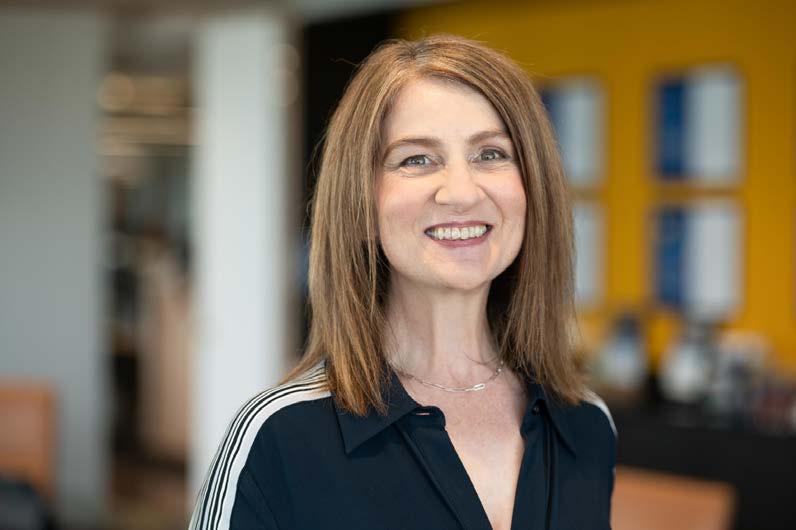
“Iota is working with Toowoomba Regional Council to roll out a significant digital utility project. South East Water’s research and development capability will remain a core driver of our innovation.

Lynn Warneke has extensive knowledge of technologies, corporate law, and climate law.
as possible save water and deliver beneficial environmental impacts beyond our borders.”
For more information, visit southeastwater.com.au and iotaservices.com.au

• A complete drive solution, available in 20 sizes
• Modular design for flexible layout & mounting
• Withstands harsh operating conditions & handles big loads
• High torque density, up to 1, 300, 000 Nm
• Effective in a wide range of working temperatures
www.bonfiglioli.com/australia/en
www.bonfiglioli.com/new-zealand/en
When the Queensland branch of the Australian Water Association (AWA) awarded its Young Water Professional of the Year, Amber Craig from the Murray–Darling Basin Authority (MDBA) was the recipient.
AMBER CRAIG IS a hydroclimate analyst and senior project officer with the Murray–Darling Basin Authority, working at the scienceto-policy interface. She further contributes to the water sector through First Nations reconciliation efforts and promotes diversity and inclusion through her leadership.
“My career in the water industry started with an earth sciences background,” Craig said. “I’m a geologist by training. As part of my Master’s, I did coursework in a range of subjects focusing on sedimentary geology, which was my specialty, and that led me to hydrogeology, meaning groundwater.”
Craig started at a consulting firm in Brisbane in 2019 before moving to the Murray–Darling Basin Authority in 2020.
“I’m really grateful that I found the water industry,” she said. “It aligns with many of my values and goals, and I am grateful I found the industry so early on in my career.”
One of the things that attracted Craig to the MDBA is the opportunity to make a difference. She reflected on the droughts between 2017 and 2019. During this period, almost all of New South Wales was declared to be in drought by the middle of 2018, and other parts of the country were also experiencing drought conditions.
“It was a big catalyst for me to join the Authority,” said Craig. “Because of my interest in groundwater, I was particularly devastated seeing Chennai and Cape Town going to
Day Zero of groundwater, meaning when they would not have any groundwater left. Closer to home, I saw the media showcasing the drought impacting the MurrayDarling Basin. I wanted to continue in the water industry, where I could utilise my training through my work and make a difference.”
She believed her movement to work in the MDBA had allowed her to make a difference in climate change. As Craig put it, it’s where the rubber hits the road when it comes to climate change and its impacts on people and the planet.
“I was excited to join the MDBA because it was a great opportunity to work at that highest level of influence,” Craig said. By working to set national-level policy, I can
Amber Craig has been working at the Murray–Darling Basin Authority.
Image: Amber Craig

Amber Craig (centre) receiving her 2023 Queensland Young Water Professional of the Year prize.
Image: Australian Water Association
see that it’s really a foundation of bringing people together and bringing the States together for the good of the Basin. We can consider different perspectives and priorities and bring in the best available science to make informed decisions. It’s this collective mission that resonated with me.”
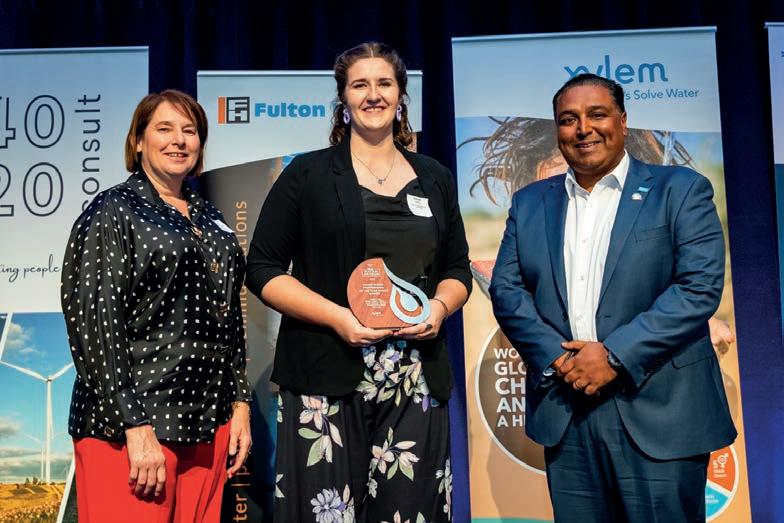
Craig is employed in the Applied Science branch, which aims to bring the best available science into the sustainable water limits theme of the upcoming Basin Plan Review. However, it’s not just the science that encouraged her to continue working within the Authority.
“It’s the people, and the Authority’s community element,” she said. “I work with many intelligent and passionate people who bring together different ideas and skills. We need to have that to find innovative solutions to such complex problems.”
Craig relishes the opportunity to delve into the science and apply those solutions to a problem that makes a big difference.
“In some regards, I’m a knowledge broker between researchers and scientists, and policy and decisionmakers,” she said. “It’s important to ensure they are talking to each other and have the best available information.”
The challenges
Governments of every stripe and scientists across the country have long recognised that managing the Murray–Darling River Basin is a challenge.
However, it’s not just one challenge. There is a multitude of issues, with different stakeholders pushing and pulling in different directions to achieve their unique goals.
“It’s challenging to consider all the issues facing the Murray–Darling Basin,” Craig said. “However, I think it’s a worthwhile challenge. One challenge is the broad network of communities and landscapes across the Basin. It’s an incredible patchwork of communities with different perspectives, priorities, and experiences. Even environmentally, there are different characteristics and climate drivers, from the northern
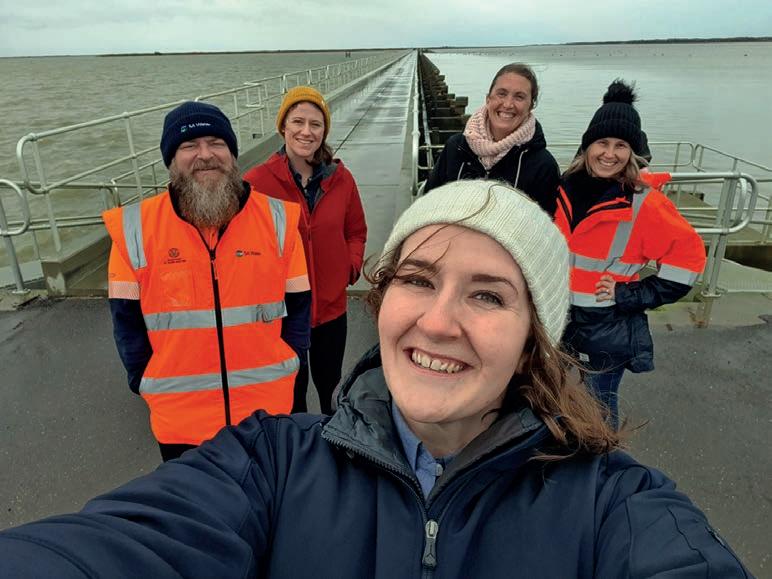
Australia.”
Factoring all these things together and being able to come together for an informed decision to get the best outcome is a tricky space to work in.
Craig understands this challenge.
“I believe that much of the lowhanging fruit has already been picked,” she said. “It’s the high-value, hard work that we have to do now.
Getting out on the ground to have conversations with community members and being embedded in the environment reminds me why I do what I do.”
Working with First Nations groups
Craig has taken on additional responsibility outside her scientific research by expanding her cultural knowledge. She has spent time supporting the Authority’s Reconciliation Action Plan.
“Furthering my own cultural knowledge and reconciliation journey is something I have enjoyed from working for the MDBA,” she said. “It’s been among some of the most rewarding parts of my career and life. I’m so grateful for my experiences in this field.”
Craig has worked with First Nations staff members, as well as with nations on Country.
“The First Nations people I have worked with have been so generous with what they share and the insights
they provide,” she said. “I have been with the agency for four years, I have furthered my cultural knowledge and understanding in that time. My understanding and respect for Country and the connection First Nations people have to Country and culture has grown. It really drives me to do what I do.”
Climate adaptation
By working with a range of communities, including First Nations and irrigators, Craig has developed a unique perspective on taking both a macro and micro approach to climate adaptation across the Basin.
“When we go out and talk to communities, they talk about the changes they are already seeing in their local area,” she said. “They tell us about the changes in the environment and the climate. We can see them adapt their ways of working or land utilisation.”
Craig pointed out that changes may impact First Nations people, as some ceremonies are tied to changes in the environment, seasons, and weather.
“At the macro level, the Murray–Darling Basin Authority has many teams concentrating on climate adaptation from a policy perspective,” said Craig. “I consider myself very fortunate to be at that policy-science interface.”
Part of her work on climate adaptation involves supporting

the Murray–Darling Water and Environment Research Program (MD-WERP). This four-year, $20 million Australian Government initiative aims to strengthen scientific knowledge of the Murray–Darling Basin by generating new knowledge, innovation, and tools.
“I’m a coordinator for the climate adaptation theme,” Craig said. “In our stream, we are addressing the science within climate adaptation to bring to the Basin Plan Review. Some information from MD-WERP is already publicly available. More will be coming out in the next 18 months or so as we conclude the program. While I am not completing the research myself, I get to be an integral part of that whole process.”
The Murray–Darling Basin is a system facing profound future challenges in adapting to a hotter, drier climate. The theme aims to better understand how climate change will impact the Murray–Darling Basin, identify options to adapt to change, and evaluate potential outcomes for Basin values. The research will identify adaptation options and assess their efficacy across economic, environmental, social, and First Nations values. The
research outcomes aim to support policy decisions and reduce the risk of more harmful than helpful outcomes.
It’s been several months since Craig won the Queensland branch of the Australian Water Association’s Young Water Professional of the Year prize. She was Queensland’s representative at the national finals.
“To be a state winner and national finalist has left me both stunned and humbled,” Craig said. “I feel so grateful to be in that position. I am inspired to be nominated with many incredible young water professionals from across the country. I’m excited to meet them all at OzWater in Melbourne at the end of April.”
This is one of many awards Craig has won. Previously, she won the Chief Executive Award – Professional Staff Excellence – Team. It’s an internal award for ‘outstanding, collaborative work delivered by the River Modernisation Team’ for delivering the BarmahMillewa Feasibility Study on time and within budget ($3 million), with notable community engagement
Conducting sand samples on the Murray River.
Image: Amber Craig
success considering the sensitive nature of the work.
“I also won a few awards while studying at the University of Melbourne,” she said. “These included the P.W. Crohn Scholarship, and the P.J. Adams Research Award associated with my post graduate research. I am grateful to have received those awards, as they recognised the hard work I have put into my research and career.”
In Craig’s eyes, she wants to continue working in this space and leave the world better than she found it.
“I want to minimise the negative impact that climate change will potentially have on many people and the environment,” she said. “I want to be able to walk away and be proud of the legacy that I leave. That extends to the workspaces I am in; I want to leave them in a better space and place than when I found them. If I can achieve even a small part of this, it would be a massive achievement in my career.”
For more information, visit www.mdba.gov.au

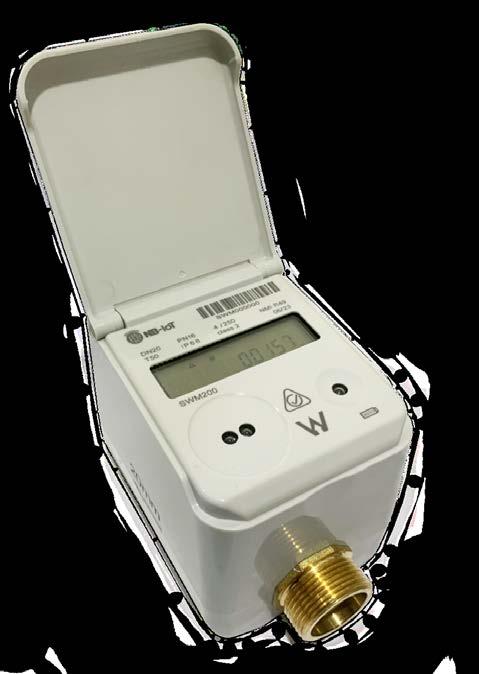


MOVING OVERSEAS TO continue
There are many researchers across Australia working in the water and wastewater industry. One is Hiua Daraei, an Iranian-Australian who is a National Finalist in the Student Water Prize. is that research outcomes include having beneficial impacts to relevant industries and communities.”
cutting-edge research remains a priority for thousands of young people worldwide. That’s particularly the case in the water and wastewater industry, where people from around the globe have come to Australian universities to study. This includes Hiua Daraei. Originally from Iran, he moved to Adelaide to complete his Ph.D. and is now a research fellow at the Cities Research Institute, Griffith University on the Gold Coast.
“After completing my Master’s degree in Iran, I had an opportunity to serve as a university lecturer instead of completing about two years of military service,” Daraei said. “It was an excellent opportunity for me, and I worked in the Department of Environmental Health Engineering at the Kurdistan University of Medical Sciences.”
Daraei’s background is primarily in analytical chemistry and chemometrics, which made him a good fit within the Department. It also helped fulfil his potential as a researcher in the water and wastewater industries.
“In Iran, our research team worked predominantly on wastewater treatment processes,” he said. “The primary focus of our research was on development of novel modified nanomaterials, membranes and electrodic processes to efficiently remove pollutants. Our research mostly focused on proof-ofconcept studies as opposed to industry-based applications that would have measurable impacts on communities. However, for me personally, a key part that I value
to Australia
Coming to Australia was based on achieving new knowledge and skills that he considered essential in his career development. Daraei had long sought to have a beneficial impact on the water and wastewater industries and society in general. In his earlier research work in Iran, achieving that was not so clear, as his university-based research was conducted independently from direct industry involvement and input. Greater efforts have been made in recent years to address this and overcome the separation in university research work and industry involvement in Iran.
“In Australia, there are great opportunities to work with industries, including the water industry,” said Daraei. “I obtained a scholarship to undertake a Ph.D. program at the University of South Australia as part of an Australian Research Council’s Linkage Project. This Ph.D. program was undertaken under the principal supervision of Professor John Van Leeuwen.”
In Iran, many drinking water distribution systems are old, suffer from significant water leakage, and consequently the distributed waters can be of lower quality than expected at the customer tap. For Daraei, the opportunity to come to Australia to continue his research, both academically and importantly, with industrial partners being directly involved, have provided personal
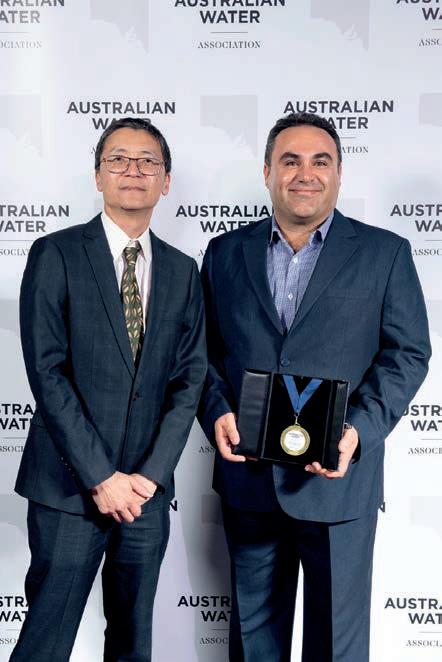
What is he studying?
Professor Christopher Chow
As part of his research, he worked to advance conventional water treatment processing. The original method was developed in Egypt more than 3500 years ago and established as conventional process in modern water treatment plants during the early 19th century. However, there is still ample room for research and advancement, particularly in its process control and automation.
“The established and routinely applied process control part of this technology is a little old-fashioned,” Daraei said. “It often involves timeconsuming and labour-intensive testing to determine optimum processing. That is particularly the case when running jar tests.
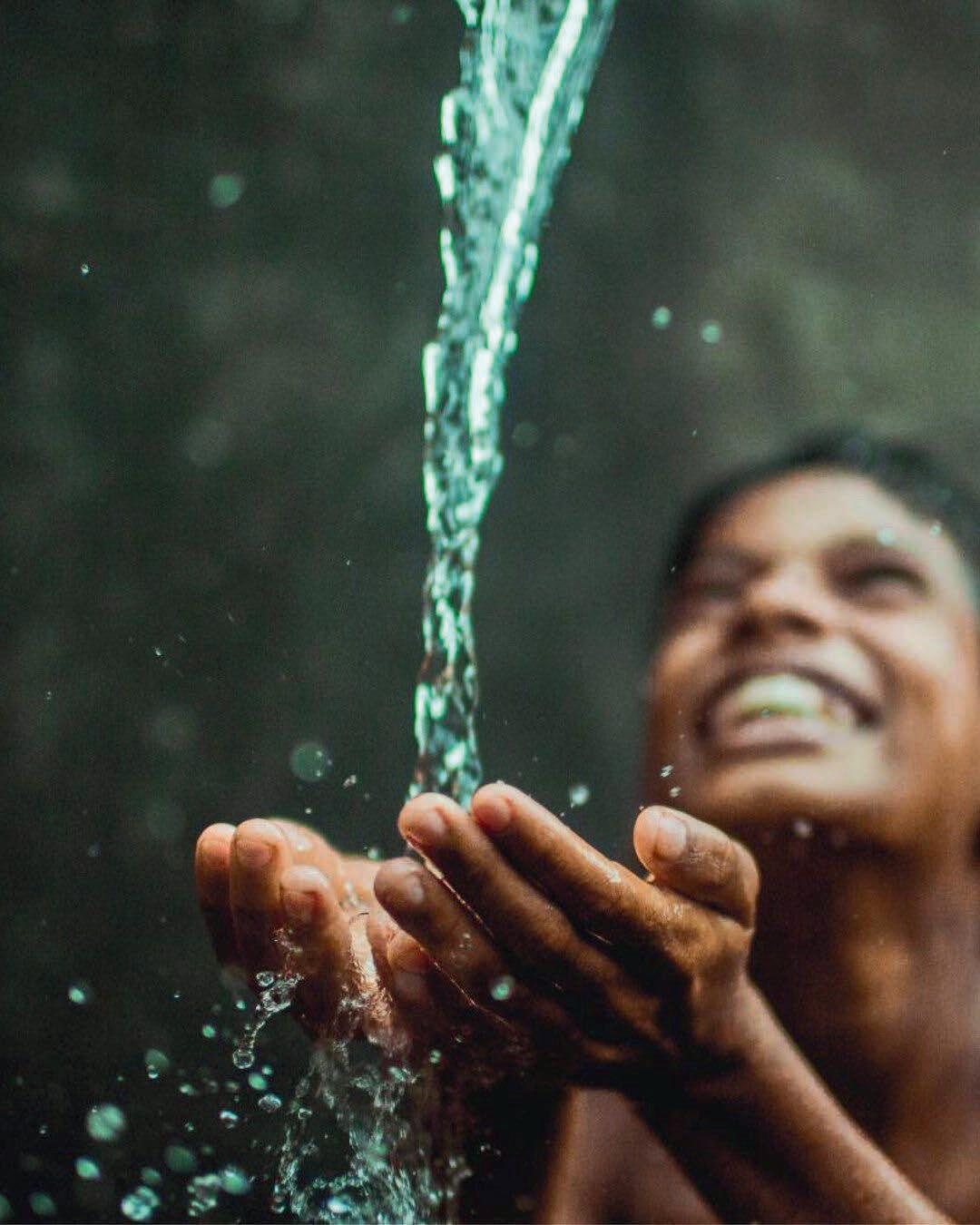
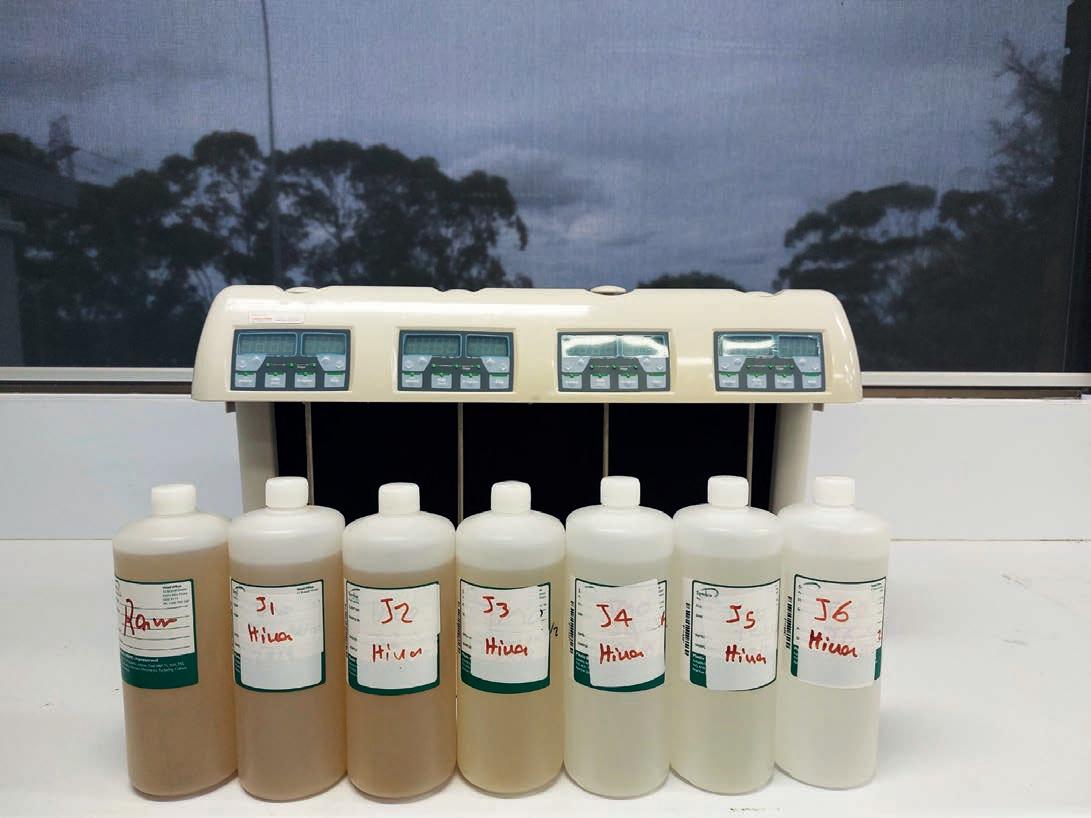
often do not like doing these tests because they are time consuming and require frequent water sampling and data analyses. The output can also be subjective based on the operator’s understandings and decision-making.”
Daraei’s Ph.D. and postdoctoral
things more straightforward for water and potentially wastewater treatment operators in determining the optimum coagulant doses for targeted treated water quality. He focussed on the development of mathematical models for real time application of a novel fluorescence

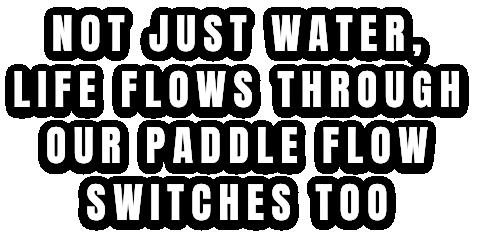
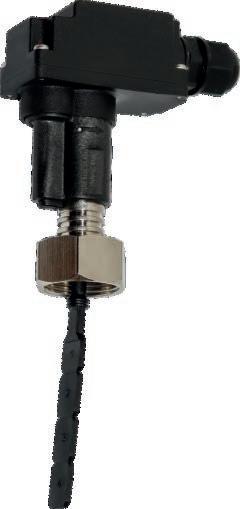

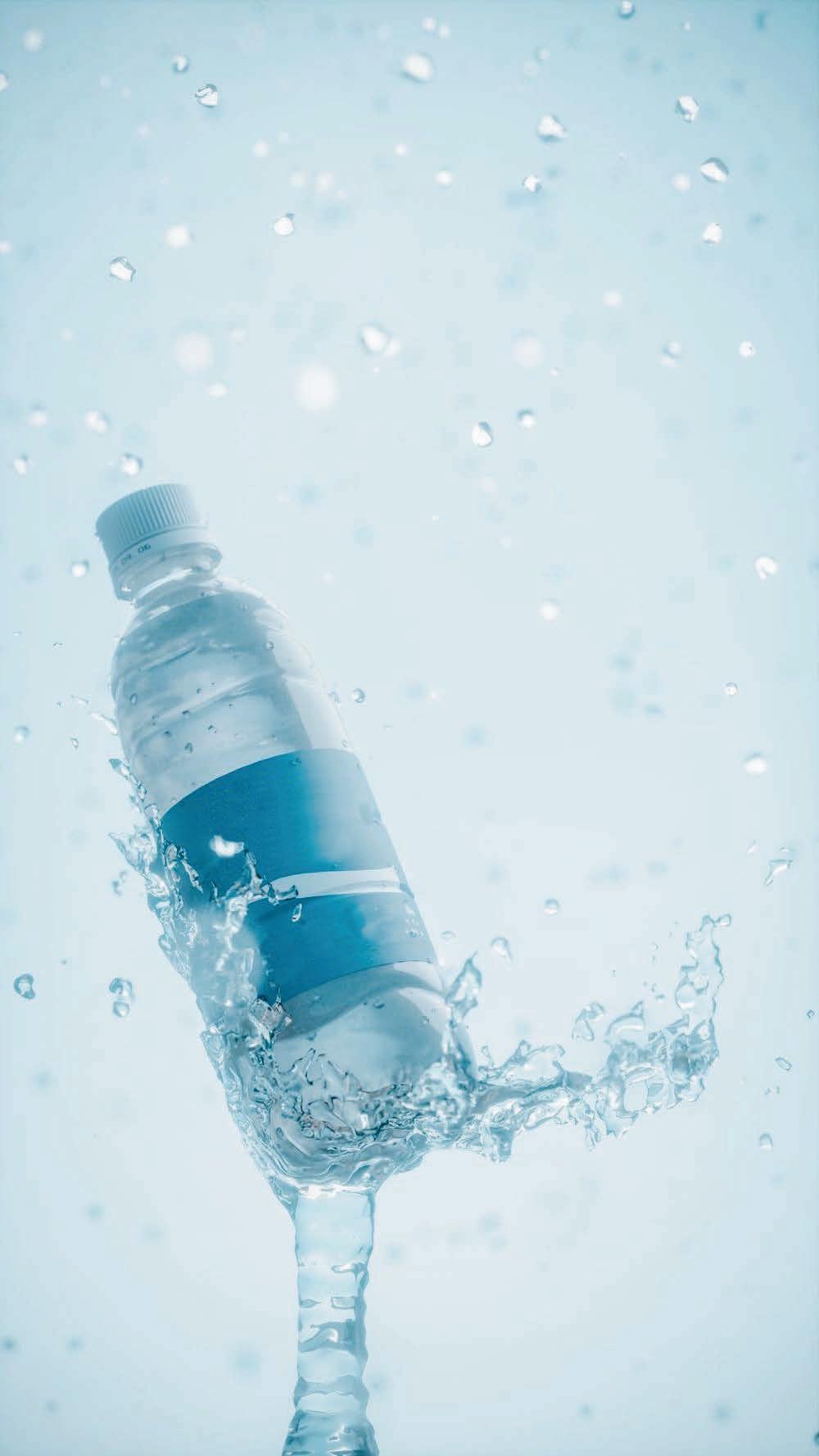


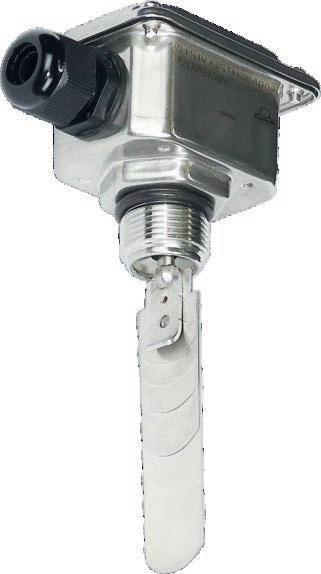
 called the EXO fDOM Smart Sensor. research showed
called the EXO fDOM Smart Sensor. research showed
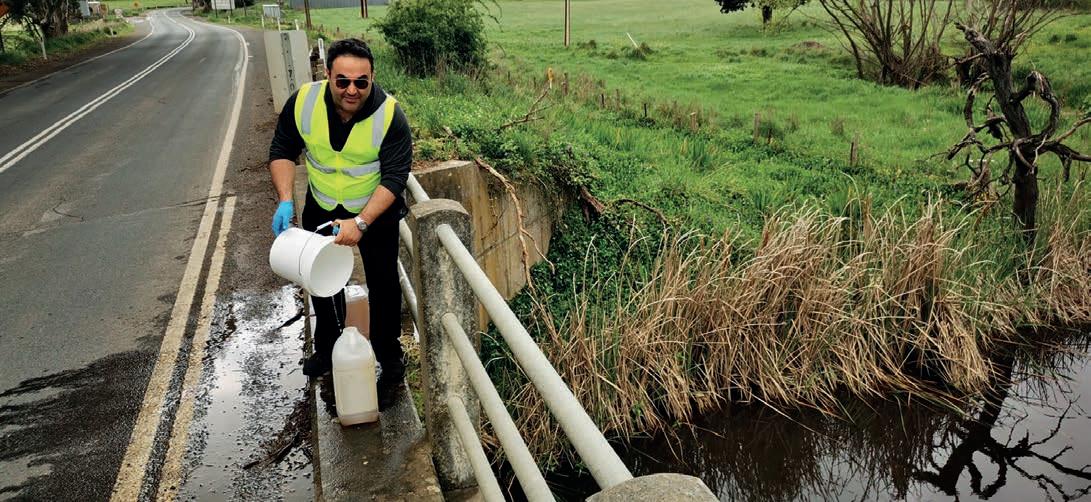
have much turbidity and organic matter related interferences for the signal. That’s not the case for water treatment plants fed by surface waters, particularly rivers and reservoirs.”
Dealing with coagulation, flocculation and settling processes
Anyone in the water and wastewater industry would be familiar with the importance of these processes.
Daraei is no stranger to them either.
“They are known as the heart of the conventional water treatment plants,” said Daraei. “Coagulants, in the right amount, allow water treatment plants to remove most particulate matter measured as turbidity, and dissolved natural organic matter. That can make the remaining stages of water treatment easier, more efficient and affordable, also removing part of the concerns around micro-organisms.”
If the dosage of coagulants or flocculants is either insufficient or even excessive, this can cause water treatment problems. Any problems or drop in efficiency can result in higher costs in water treatment plant operations, whether using a higher volume of chemicals than necessary or having to account for more treatment through not having enough.
“It is imperative to tune in the level of coagulants carefully,” he said. “They play such an important role in removing turbidity and contaminants that other stages are nowhere near as effective.”
This is why removing organic matter properly is vital. If the
some organic matter responsible for DBPFP is removed. Chlorinebased disinfectants reacting with the residual organic matter can generate disinfection by-products, some of which have been reported to be carcinogenic.
“Australia has very tight standards around levels of residual turbidity and colour as well as DBPs and chlorine levels in produced waters,” Daraei said. “It’s because Australia wants to maintain good-quality water, and at the most fundamental level, the process of using coagulants has a key role in the resulting water quality.”
Daraei has focused on influencing society and industry to translate his research outcomes into technology. However, it can be challenging to get new technology into active use.
“The first part of my research is taking my findings and developing them into viable technology,” he said. “We also need to show that the technology is suitable for industry use and is reliable. For this we needed our partner organisations to support evaluation trials and helping us scale the developments to a commercial level.”
Daraei pointed out that this can be an issue in many countries. Rules and policies determine how things can and should be commercialised. From his side, Daraei believes that his research has made significant progress and the industry partners
opportunity to test his research in a real world environment.
help in developing the technology to translate it into practical outcomes.
“Working with companies like Seqwater, Melbourne Water and Xylem has been fantastic,” Daraei said. “I have found their support and encouragement to be brilliant. I didn’t have that experience in Iran because of the separation of academia and industry. Everyone has been open to supporting me with all that was needed for the Ph.D. project. I’m looking forward to the implementation stage of the research outcomes.”
Daraei said it is a great honour to be a finalist in the Student Water Prize for the Australian Water Association (AWA). In his own words, his Ph.D. examination process was very challenging as an overseas student, and took longer than he originally planned.
“I collected a large number of water samples and did a significant volume of water quality analyses,” he said. “Many would think the rest of the project would be just modelling. However, it was extremely complicated to analyse the large data base generated. I just fought and persevered to attain for what I was working on.”
This nomination is a gift for him as it acknowledges his work over the last few years.
“It was a relief to receive this nomination,” he said. “At the end of it all, it’s great to be recognised by experts in the field.”


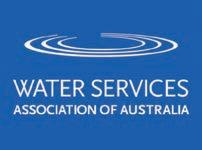
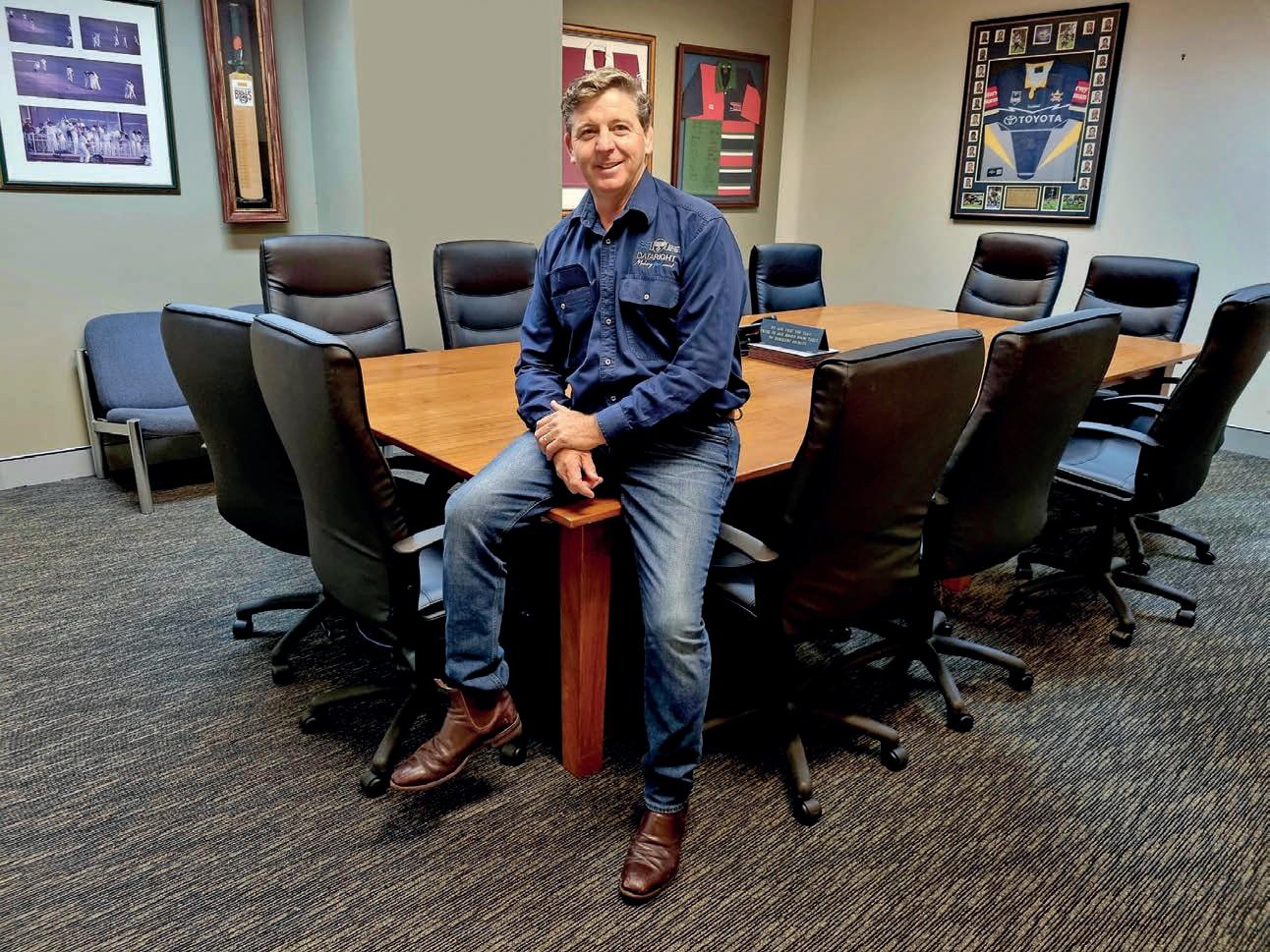
With the explosion in water utilities taking up smart water meters, those meters need to be installed and maintained. This is where companies like Data Right enter the fray.
WITH THE EXPLOSION in water utilities taking up smart water meters, those meters need to be installed and maintained. This is where companies like Data Right enter the fray.
Data Right has installed more than 120,000 automated meter readers (AMRs) around Australia. It prides itself on exceeding client expectations and always strives for 100 per cent data accuracy.
How did Data Right come about?
It’s the work of Ian Joblin, Data Right Director and Chief Executive Officer. He’s had something of a less traditional entrance into the water industry as an accountant.
“I was working with a local government that needed assistance to effectively complete their smart meter rollout, so they approached me to project manage the balance of the rollout,” said Joblin. “When completing the project, we met Taggle Systems. From there, our relationship started.”
Data Right has worked predominantly with Taggle Systems while slowly adding
local government clients who are coming directly to Data Right. Its first rollout of smart meters was for the Narrabri Shire Council in northern New South Wales. Since then, it has integrated smart water meters for 25 local governments and water utilities throughout New South Wales, Queensland, and the Northern Territory. The last twelve months have seen them complete Tamworth’s 22,000 meter rollout, stage 1 of Gladstone’s rollout in Seventeen Seventy and Agnes Waters and 9,000 meters for Townsville. They have just begun the Southern Downs 9,500 meter project and the annual meter and trade waste meter replacements for Mackay.
“We have now evolved to also offer meter network audits in preparation for meter and AMR ordering,” he said. “We also offer smart water meter maintenance programs, meter reading, project management and plumbing works associated with water meter service lines.”
In an environment where it can be challenging to attract and retain skilled tradespeople, Data Right offers local governments and
water utilities the opportunity to outsource their meter replacement and AMR maintenance programs. This ensures that existing staff within the organisation can focus on other, more crucial tasks.
For Joblin, automated meter reading is all about connectivity between a water utility and its customers as it works towards a smart city environment. He pointed out the importance of having high-quality communication between them.
“We are no longer in an environment of one-way communication between the water utility and customers in the form of a quarterly water bill,” Joblin said. “Such an approach can lead to bill shock, water wastage, and inappropriate resource allocation in attempting to manage these problems. A smart water meter system can provide customers with near real-time information about their water consumption, leaks, and overall consumption patterns. The water utility is then seen as a solution provider for its customers.”
It’s an environment centred around information sharing for the benefit of both parties. Automated meter readers eliminate the need for on-site manual meter reads, which pose a range of work health and safety risks.

Our project management skills are disciplined, personalised and adaptive. “ ”
The process difference between Data Right and other companies revolves around well-developed, auditable, disciplined processes.
“Our processes have been developed to ensure that meter installation, data capture, and data continuity are as accurate as possible,” said Joblin.
Joblin and Data Right pride themselves on consistently achieving above 99.5 per cent accuracy with in-field information gathering. This provides Data Right’s customers with confidence that their meter network data is accurate.
“We only utilise quality contractors who take the utmost pride in the quality of their workmanship,” Joblin said. “We have retained these contractors for many years, and they are a crucial part of the business. Our project management skills are disciplined, personalised and adaptive, providing customers with a guided journey through their smart metering process.”
Data Right prides itself on its operational fluidity, having no problems moving between projects and locations. It also ensures that its clients’ expectations are met and exceeded. It provides annual maintenance programs to its customers to ensure that all smart water meters are accurate and solve a range of problems that may occur.
Data Right is looking to expand further. It is looking to develop a larger customer base that utilises its smart meter rollout services and ongoing meter network maintenance programs.
“The maintenance division is an obvious area for expansion,” Joblin said. We hope to enter ongoing maintenance agreements that provide water utilities with peace
of mind around their smart meter network. By providing additional plumbing works associated with meter replacements, Data Right can continue to grow into a full endto-end solution provider for water meter networks.”
Joblin believes that there are plenty of opportunities to expand, and one of those is the agricultural sector.
“That sector has appealed to us, and we are actively working on starting this division,” he said. “There is a
Team members Travis and Glen install a smart water meter.
trend toward metering non-urban meters, so it makes sense to utilise technology and make those meters smart. We are well-placed to provide a holistic solution in that area.
There are still so many residential water meters to be upgraded to smart meters, so there are plenty of ways that Data Right can assist water utilities in achieving those goals.
For more information, visit www.dataright.com.au



Water utilities ensure that all customers, residential and commercial, have access to clean drinking water. Many utilities in Australia are looking to the future through digital transformation and the Internet of Things (IoT).
ONE OF THE challenges for water utilities is preparing for the future.
After the Millennium Drought, South East Water took its first steps towards becoming a digital utility, working towards transforming its people, processes, and technology. It now has an advanced digital network, delivering increased visibility to its customers regarding their water use so they can quickly identify potential leaks on their property. The organisation also uses network sensors, enabling a proactive approach to network leak detection that increases visibility across its network and reduces water loss.
Justin Peters is the Business and Key Account Manager at South East Water. His insight into South East Water’s digital transformation program shows how the utility is changing for the better.
“Our digital transformation is helping customers become more aware of their water usage,” Peters said. “Having digitally enabled devices means that our customers can see their detailed water usage data and receive fast alerts when there is a potential leak. This significantly helps customers better understand their water usage and facilitates quick identification of leaks. It’s also allowed us, as a utility, to better understand the demands on our network.”
Business customer complexity
Peters pointed out that residential customers tend to have a consistent diurnal water consumption pattern, with a big peak in the morning and a second peak in the afternoon
and evening. This makes it easier for water utilities to determine if something is unusual with a residential customer’s water usage. Business customers, however, cannot be compared in the same way.
“Even when we look at the businesses within the same industry, we can’t be sure of the consistency of their water usage patterns,” Peters said. “One manufacturer might operate 24 hours a day, 7 days a week. Another manufacturer may only use water during weekdays. A third may have cleaning cycles that run through the night. To add to this complexity, the nature of water usage across their site can also vary significantly. It can include inproduct, cleaning, heating/cooling, and amenities. They might all work in the same industry, but their different operations mean that water usage is unique from business to business.”
Although business customers represent only 8 per cent of South East Water’s customer base, they account for about 25 per cent of all water use.
For many small businesses, simple automated alarms are very beneficial at alerting customers to potential leaks. However, for more complex businesses, more customised leak alerts can be set based on unique water usage patterns at each specific business site. South East Water is working hard to ensure that the digital experience they provide to their customers factors in the broad range of use cases.
Empowering businesses to make decisions that help them use water
Justin Peters is South East Water’s Business and Key Account Manager, working closely with Iota.
Images: South East Water
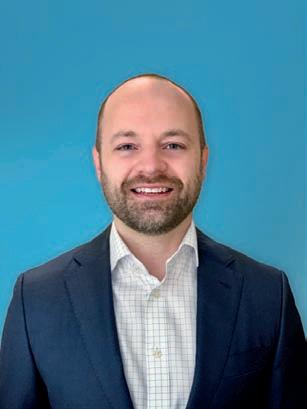
wisely is an important step towards reducing unnecessary water loss. South East Water believes it is important to engage with and support business customers in their sustainable water usage.
Technology key to sustainability
“Population projections from the Victorian Government suggest that the state’s population is expected to reach 10.3 million people by 2051,” said Peters. “That’s nearly doubling the population in less than 30 years. On that basis, we expect water usage to almost double. So, we must consider water security for our future and start sustainable practices with water now.”
With extreme weather events impacting communities, increasing the efficient use of water and reducing unnecessary water loss will be essential. Data loggers and digital water meters will remain vital tools that will support this in the future.
One of South East Water’s goals for the near future is to have more businesses digitally enabled, either with a digital meter or a data logger.
“Most of our business customers with a digital meter receive leak alerts within 24 hours of a leak,” Peters said. “This allows them to take immediate action, rather than waiting for their next bill to address the issue.”
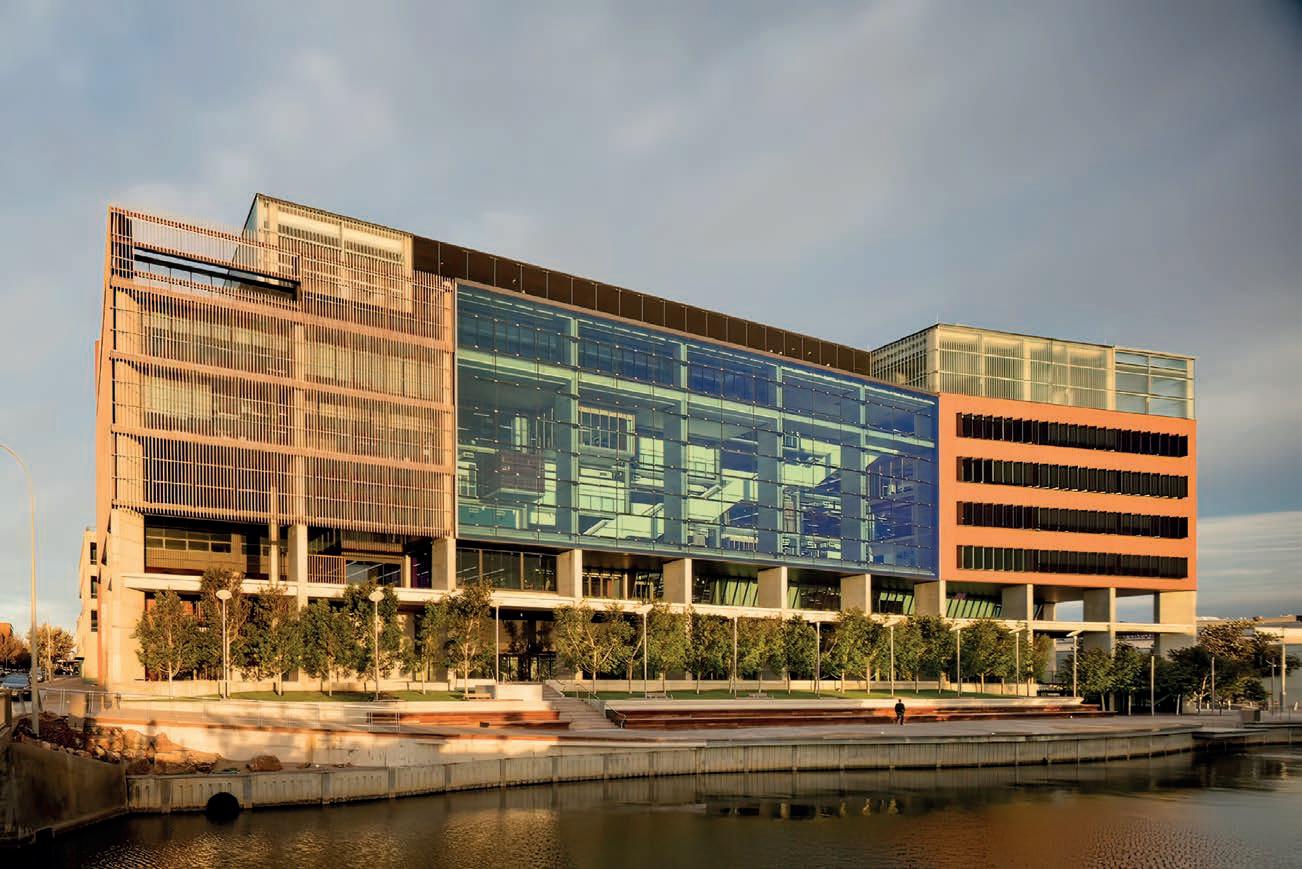
Another benefit of this digital transformation for businesses is identifying larger leaks, which could indicate that private plumbing infrastructure needs urgent repair/ replacement. Digital data can be very helpful in monitoring assets and being part of a business customer’s site water management plan or maintenance plan.
“This is how a digital transformation program can help explain certain things that commercial customers were previously unaware of or could not visualise,” said Peters. “It can influence their maintenance programs. In some cases, they may have had a leak for years they didn’t know about.”
To help customers better interpret this data, South East Water is piloting a customisable dashboard where business customers can view their water use, monitor consumption trends and identify usage anomalies such as leaks.
“The dashboard is the first step in giving businesses visibility of where water is being used and is especially valuable for large or complex businesses with many assets and

multiple sites”, Peters said.
Partnering for success
South East Water’s partnerships with water utilities and commercial customers are set to add to the 1.2 gigalitres already saved through digital metering of the residential network.
Even more water savings will soon follow with future developments of water monitoring platforms and IoT devices.
The rollout of a water monitoring platform and digital meters to customers is set to provide South East Water with learnings about how real-time insights can help commercial customers prevent water loss.
“Almost every business has its own targets to keep operating costs down, and many also have sustainability goals and initiatives embedded within their corporate strategies and long-term plans,” said Peters.
“From our perspective, working with businesses to help them better understand their water use helps them meet these goals
and contributes to long-term water security. By focusing on sustainability, business customers can be proud that they are optimising their water usage through active monitoring and insight-driven site water management. They are not only saving water on-site but also helping us, as a community, secure water for our future.”
No one likes an unexpectedly large water bill. Water monitoring platforms with leak alert functionality can help promptly notify customers of high usage and allow them to fix the leak on their property before it results in a hefty bill.
“The old saying that prevention is better than the cure certainly applies to water utilities. Rolling out these digital technologies is one way we can work with our business customers to help them become more aware of how to use water more efficiently and sustainably. By providing visualisation of water use over time, in addition to timely alerts and notifications, we can also prevent water loss and help them optimise their business operations through actionable insights.”

/ Ventia bring decades of experience working alongside municipal and industrial water and wastewater clients and their customers.
From the operation and management of bulk and retail water networks, treatment plants, pump stations, desalination and catchment assets we provide asset inspection, monitoring and operations and maintenance.

find out more.
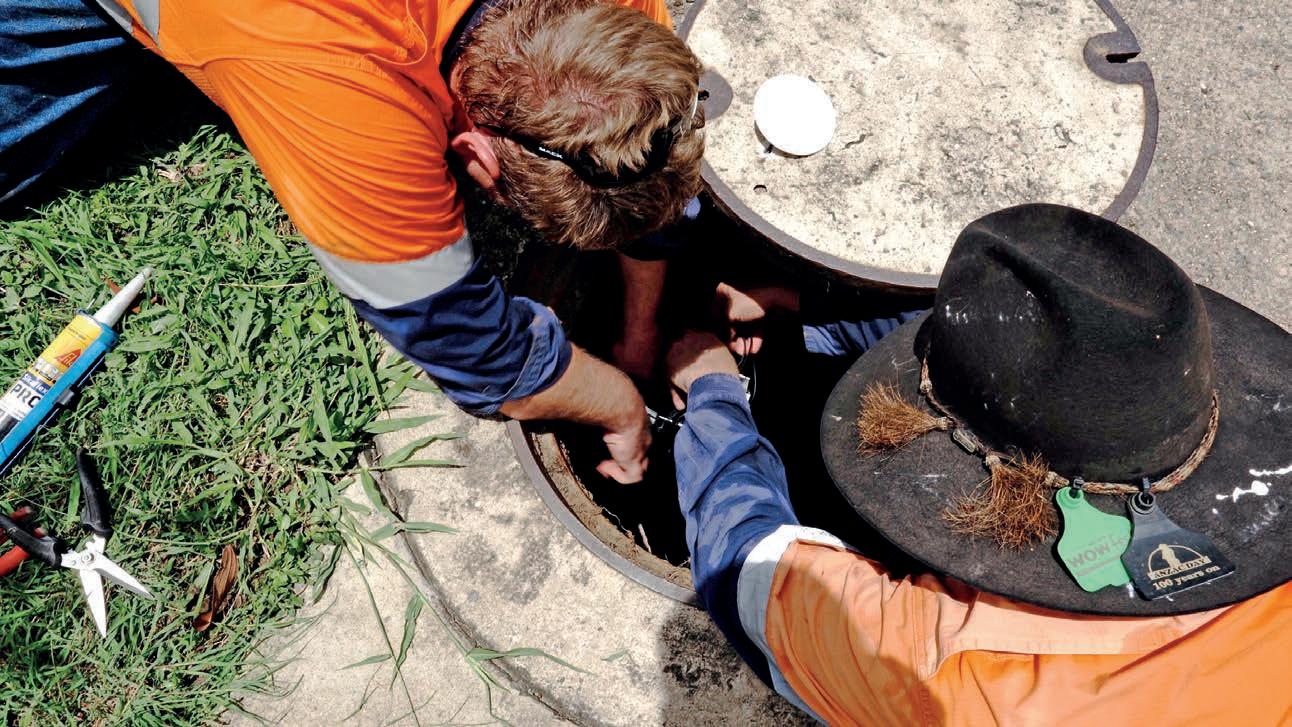
There are many different radar sensors available for the water and wastewater industry. We look at one company’s cutting-edge solutions.
KALLIPR DESIGNS AND manufactures a range of Internet of Things (IoT) solutions that allow its clients to better measure and monitor their data in an easy-to-use end-to-end package. This reduces business downtime and operating costs while improving sustainability. Its asset-to-asset communication and remote monitoring solutions cross a range of industries. This includes water management, wastewater management, water quality monitoring, and commercial metering. Kallipr can create custom packages and solutions to help customers reduce water leakage, measure water quality and monitor capacity levels.
The Townsville take on IoT Kallipr worked with the Townsville City Council to roll out Kallipr radar sensors in the council’s sewer networks. When paired with the Captis devices, these sensors help manage and monitor water flow and levels throughout the wastewater network.
Alex Sims is Kallipr’s Technical Support Lead and was instrumental in rolling out the solution for the Townsville City Council.
“The solution combined our data loggers with our radar sensors,” Sims said. “We also attached a third-party radar sensor for an AB comparison. It was a great opportunity to compare a well-known, market-leading radar sensor against our sensors. We have tied that sensor with custom
brackets, pre-wiring termination and configuration.”
Kallipr then packaged the sensors and sent them to the end-user. This allowed them to be installed as a plug-and-play solution, solving the issue of collecting components from different suppliers and trying to figure out how to get them to work together.
“We do all of that ahead of the shipment, so it makes life much easier for our end-users,” he said. “That means all they have to do is install it.”
The combination rolled out by Kallipr is suited for the Townsville City Council partly because it leverages the MODBUS RS485 communications protocol. This protocol allows Kallipr and the end-user to sample a range of parameters collected by the radar sensor.
“Kallipr can capture really granular data,” said Sims. “We can also pull data from the radar sensor itself. We also provide over-the-air configurability, which allows us to remotely change and revise the configuration parameters.”
One of the challenges for water utilities is finding the right combination of devices to achieve its goals. However, Kallipr has taken a different approach.
“What we do is solve customer challenges,” Sims said. “Kallipr has found that it has the autonomy and
is no need for sophisticated equipment to install the
flexibility to create and manufacture its own devices in Australia. In the past, we were hamstrung by dealing with suppliers overseas. That reliance on third-party sensors meant that we were dependent on supply chains, product availability, lead times, and other logistical issues.”
When considering these problems, Kallipr opted to create its own radar sensor. This meant it would have control of the components going into the sensor and autonomy over the supply chain. It also allowed Kallipr to create a unique firmware/ software layer that allows for the remediation of devices or the introduction of new features.
“All of this means that we have full control of the costs of each individual component,” he said. “We can then significantly reduce the list price of our radar sensors.”
Another aspect of the Kallipr devices is their long battery life. Sims and his colleagues at Kallipr worked diligently to find a better way to do things.
“Typically, the third-party sensors… leverage device power to wake themselves up, take a measurement and then go back to sleep,” he said. “That device charge dissipates until the next time the sensor needs to do a reading. However, that means there is a large reliance on each sensor on the master device to supply that power as and when needed.”
Kallipr has integrated the power supply into the radar sensor itself. In terms of power delivery, every radar sensor is independent of the

because the sensors are not chewing into the power demands of the master device,” said Sims. “It means our solution provides a longer battery life, often by several years. This is important for water utilities and local councils. Many of our clients would otherwise need to be more conservative with the power they are using throughout their systems.”
Radar is becoming common among solutions sought by water utilities and local councils. By designing and manufacturing its own radar sensors, Kallipr can provide a more economical solution.
The night Cyclone Kirrily rolled through Townsville, the Kallipr devices picked up a blockage or partial blockage. The data suggested that this blockage occurred at around 8 pm. It caused water levels to rise steadily over the next 4 hours until the entire three-metre riser was completely inundated.
“In typical circumstances, thresholds can be configured on the device to alarm when the water level rises after the 8 pm blockage,” said Sims. “This early warning system allows maintenance crews to be deployed to the site before an overflow event occurs. Remote monitoring was paramount during the cyclone, ensuring the system cleared itself without needing onsite maintenance calls. This reduced the risks associated with callouts in unsafe conditions.”
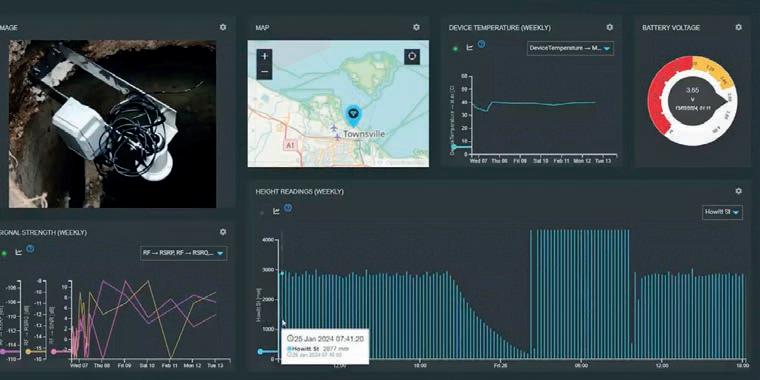
This knowledge’s advantage was that the Townsville City Council would have had an exact location to start their troubleshooting if the blockage remained. They could identify where the flood started and work backwards from there.
Kallipr has been growing from strength to strength through its range of Captis radar sensors. Sims said there has been a lot of interest across Australia.
“We’ve worked a lot with councils and water utilities who are starting to see the benefits of early adopters digitising their networks,” he said.
“There’s now a big push from the broader water industry to make these solutions as easy as possible to deploy.”
Many industries face labour and resource shortages, making it challenging for local councils to have a single manager dedicated to operational and maintenance teams. These groups would usually
brackets, ensuring easy installation.
Above: the dashboard is easy for users to understand, as shown here during Cyclone Kirrily.
be appointed to install the devices and become the product champions within their organisations.
“More and more, we are seeing that labour dry up in councils, particularly in the regions,” said Sims. “There may be just one person who’s been in the role for a short period but manages multiple divisions.”
This is why Kallipr is working to develop solutions that can be installed, implemented and managed easily while forming part of their existing network and ecosystem. The thinking is that leveraging out-ofthe-box solutions that are preterminated and configured for the receiving organisations is better for those organisations.
This is why Kallipr is working together to show that a specialised system is not always the best option. An easy-to-manage solution makes things easier for every current, potential, and future customer.
For more information, visit kallipr.com
PFAS and other forever chemicals are causing challenges for the water and wastewater industry. Ventia continues to develop innovative technology that could improve PFAS remediation.
PFAS, KNOWN AS per- and polyfluoroalkyl substances, are a diverse group of synthetically produced chemicals resistant to heat, water, and oils. Since the 1970s, PFAS has been used in firefighting foam, industrial applications, and everyday household products.
PFAS do not break down or degrade in the environment. They are soluble, mobile, and can be found in soil, surface water and groundwater.
PFAS contamination in soils and water is well documented, and laboratories have developed an accurate analysis methodology to test for low PFAS concentrations. Due to historical PFAS applications, several high-risk sites may have high PFAS concentrations in soils. Rainfall events can increase the risk of PFAS running into surrounding waterways. Waterways must be sampled during rainfall events to determine correlations between flows and PFAS contamination load.
Ventia has a specialised team studying and developing innovative technologies to remediate PFAScontaminated soil, sediment, concrete, and water.
People like Charles Grimison (Technical Director) and Mark Pickles (Manager Environmental Monitoring) at Ventia are working to improve water quality testing in this field. Both started their careers in the water and environment space and found themselves in the contaminated water field.
Challenges of sampling for PFAS
One of the biggest challenges in sampling PFAS is that there can be large volumes of contaminated soil and water with a low concentration of PFAS and small volumes with a high concentration of PFAS. Separating these soils requires different tools, partly due to the varying properties of soil but also due to the varying properties of the PFAS

Ventia’s highly experienced specialists monitor water, soil and air for all environmental parameters, delivering accurate, real-time and in-depth data on environmental conditions that its clients can depend on to make informed decisions.
Images: Ventia
compounds themselves.
“Typically, we would use two or three technologies to clean up a contaminated site… more if water is included,” said Grimison. “There is also an evolving landscape around the guidelines and criteria because it is a relatively new contaminant. We are still dealing with these changes.”
It’s important to note that there is currently only one way to properly detect PFAS in water – to get a sample and send it to a laboratory. It is much easier to detect other contaminants. Developing tools to capture a representative sample during periods of infrequent, then heavy, rain is challenging.
Detecting PFAS in the first flush
This is where Ventia’s new technology is coming into play. It provides automated PFAS sampling systems for capturing samples during rainfall events. Users can configure and control sampling programs using standard wastewater samplers and control instrumentation through a simple SMS control system. It’s part of the first flush, a phenomenon where a larger concentration or mass of contaminants is associated with the initial stages of a storm event compared to the rest of the event.
“Ventia provides networks of monitoring instrumentation,” Pickles said. “What would usually happen in the field is identifying where PFAS is, looking at the first flush event, and capturing data on the water coming through the system. That’s why we put automated instruments in the field – to accurately sample and monitor that event. We can then accurately measure the mass and concentration of the contaminants.”
It’s not just about determining how much PFAS is being detected. It is also about where it is being detected and in what concentrations. This comes from measuring a site’s
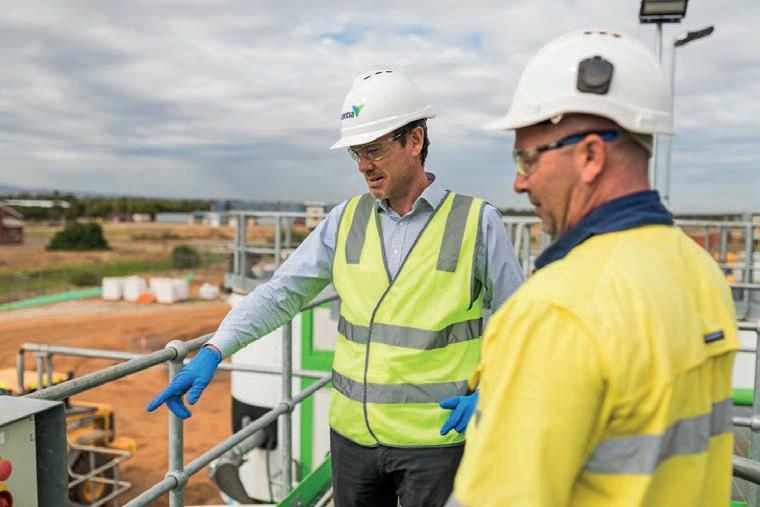
mass flux, which is the mass of a contaminant moving through a specific cross-sectional area.
“We look at the mass and the concentration,” said Grimison. “If you have five micrograms per litre of PFAS in one drain compared to 30 micrograms in another, the instinct would be to deal with the 30 milligrams first. However, understanding the concentration of PFAS and the water flow might create a different outcome. There may be a greater PFAS mass being discharged via the 5 microgram per litre drain. That’s why you must look at both measures to get a better picture.”
There’s an app for that
One of the challenges for any water utility is being able to collect and interpret data by large teams across multiple offices for several clients. That’s particularly true for any utility working in regional Australia. The focus then turns to the most efficient way to capture that data and feed it back to the customers.
About 10 years ago, Ventia started developing field apps that supported multiple field functions to capture and host data. However, the desire to improve and innovate led to creating a route optimisation web-based program to map out its sampling programs.
“This enabled us to greatly optimise our field schedules and provided a direct link between the planning and implementation phases,” Pickles said. All Ventia apps are designed to capture data quickly and efficiently.
Charles Grimison (left) currently leads Ventia’s PFAS team, which is focused on the development and delivery of PFAS remediation solutions driven through internal and external research, laboratory trials and university partnerships.
This includes Safety, Health, Environment, and Quality (SHEQ) information, field measurements, data issues, photos, and verification systems.
The Ventia teams also have access to historical datasets against which to validate new readings. The apps can notify clients immediately of any reportable observations.
“For example, if there were a potential petrol leak in a retail service station, an email would go straight to the client advising of this,” Pickles said. “The same goes for other contaminants in other locations.”
All that data is instantly captured and stored within a secure database. This allows Ventia to add additional functionality as requested by the client, who can access and download that data when needed.
Since 2012, Ventia has captured more than 170,000 measurements and 135,000 photos. This has eliminated the need for paper-based field sheets, increasing accuracy and transparency. That improved accuracy is derived from the automated validations that can occur with the field scientists still on site, so there is less need to revisit sites in a short period. This increases the sustainability outcomes, as there are fewer rollouts of staff and vehicles, along with the elimination of printing paper field sheets.
When talking about accuracy, the accuracy rate of data captured has now exceeded 98 per cent. This has come from the built-in quality checks to ensure that the right information is where it needs to be and to pick up variances where there should be none.
All of this is leading to better outcomes for clients.
“I’m focusing on a cleaner and greener footprint for the industries we work in,” Pickles said.
For more information, visit www.ventia.com
Ventia’s sampling data is instantly captured and stored within a secure database. This allows Ventia to add additional functionality as requested by the client, who can access and download that data when needed.


Data Right is Australia’s leading smart water meter installers. Specialising in:
• Installation roll out
• Project management
• Preproject evaluation, decision making and requirement audit
• Network maintenance and replacements
• Water meter reading
• Associated plumbing works
Contact us on 1300163837 for a solution to your water meter requirements. headoffice@dataright.com.au www.dataright.com.au
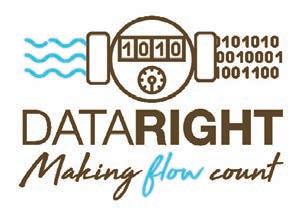

Collecting and sharing environmental data, particularly water quality, is complex. Achieving this in real time can help organisations make better decisions. Here’s how.
methodology, particularly in the face of the rapidly evolving water
“It’s usual for manual sampling to typically miss the peak events that do the damage, and the data, when you get it, is a week old,” he said. “Manual sampling processes are labour-intensive, time-consuming, and prone to human error, hindering
effective resource allocation. As we embrace technological innovation
Ion-Q+ helps WWTP operators manage potential risks of exceeding discharge
actionable data. Eco Detection’s Ion-Q+ does this by providing nutrient levels, pH, conductivity, dissolved oxygen (DO), and other water quality parameters. Having this data empowers stakeholders to take a proactive approach to managing water resources. It also safeguards public health and supports environmental sustainability goals.
“Eco Detection has put the lab in the field; no one else has done this,” said Harcourt. “Whilst probes and other types of field measurement technology exist, they don’t always work and cannot replace grab sampling and laboratory analysis to the regulator’s satisfaction. We are now being accepted by regulatory authorities in several applications as a replacement to laboratory data, thereby reducing operating costs and improving customer outcomes.”
Ion-Q+ and how it works
Harcourt points to the direct ionic
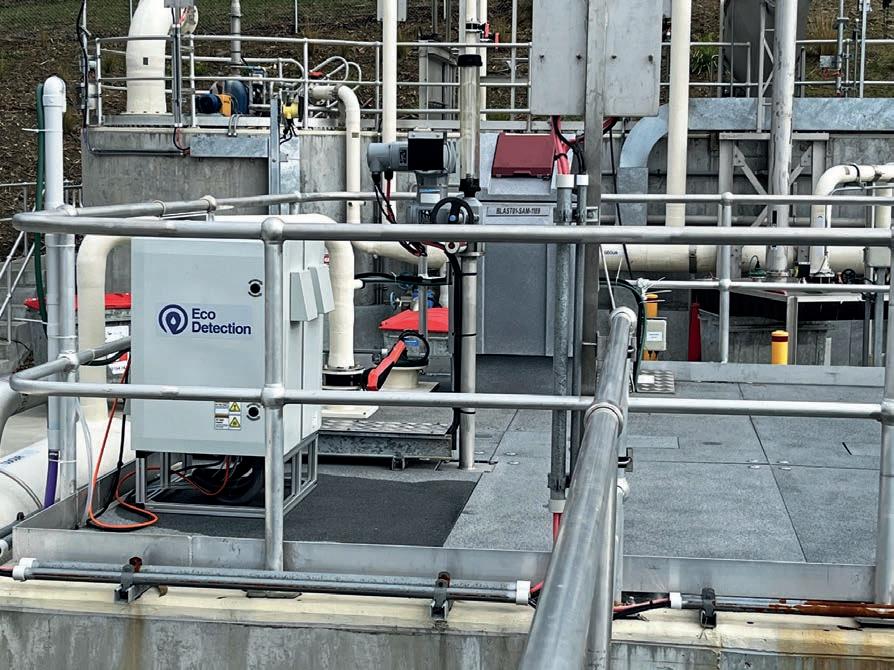

absorption or inferred measurement.
The Ion-Q+ integrates the original CZE technology, which separates target analytes injected into a capillary.
“Different ionic species travel at different speeds inside the capillary,” he said. “That is because of each ionic species’ individual physical and chemical properties. They form distinct groups as they move through the capillary. These groups pass the detector, which determines the number of ions and provides quantitative concentration measurements for ionic species.”
Accurately tuning the capillary and electrolyte chemistry has enabled Eco Detection to have highly sensitive technology. Eco Detection also provides end-toend data service for water quality measurements. It provides end users, operators, and decisionmakers with the critical information to manage their waterways and assets effectively.
“The Ion-Q+ is a fully autonomous, self-calibrated and multiparameter system,” Harcourt said. “It can operate anywhere with solar and satellite options. We offer up to 12 months of continuous operation without servicing.”
But what is it picking up? The Ion-Q+ can analyse levels of nitrite, fluoride phosphate, chloride, sulphate, carbonate, ammonium, magnesium, potassium, calcium, sodium, lithium, and ferrous iron. It can also be deployed with additional sensors for other water quality parameters, giving the system a comprehensive view of the water source.
Where is it being used?
Eco Detection’s Ion-Q+ devices are deployed with water utilities, local councils, industrial facilities, and environmental monitoring stations across Australia. For example, several devices are installed in rivers that flow into the Greater Barrier Reef. “Water utilities face the constant challenge of servicing an increasing population with ageing wastewater treatment plant (WWTP) infrastructure,” said Harcourt. “In doing so, they must continue reducing the environmental impact. The discharge of total inorganic nitrogen (TIN) and dissolved reactive phosphorous (DRP) from WWTPs into inland waterways is allowed under license from the local regulatory Environment Protection Authority (EPA).”
Ion-Q+ is a autonomous multiparameter
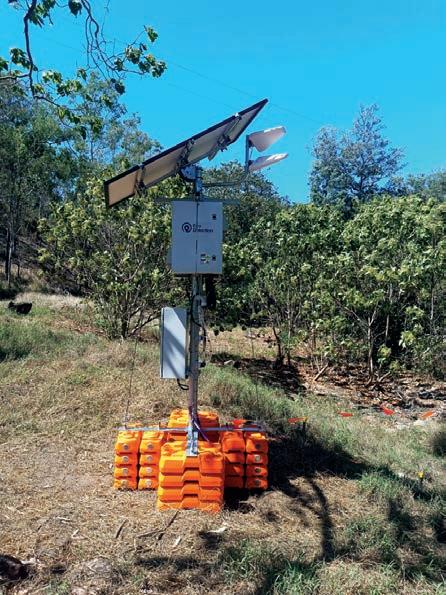
operators to take immediate action. Therefore, facility managers can actively control the inherent risks of exceeding the discharge license limits, associated penalties and, ultimately, pollution of waterways and ecosystems. Eco Detection now provides a practical field solution to monitor upstream and downstream of the WWTP discharge point, providing TIN and DRP in near real-time, with data fed directly into plant supervisory, control and data acquisition (SCADA) systems for immediate action when required.
The future for Ion-Q+ Harcourt believes that the future is positive. As a technology entrepreneur, he could not ignore the pressing challenges facing global water resources. Having witnessed the devastating impact of water-related crises has spurred him into action.
“I am fortunate to have been able to leverage technology and innovation and find a way to channel my passion for water into meaningful and tangible solutions,” he said. “In the coming years, I hope to advance Eco Detection’s technology further. We want to expand its deployment into new markets, like the United Kingdom. Ideally, we will strengthen partnerships with water utilities, regulatory agencies, and industry stakeholders.”
Harcourt and Eco Detection aim to enhance public awareness and engagement on water quality issues by driving innovation and promoting sustainable water management practices.
“We want to foster a collective commitment to preserving our most vital resource for future generations.
For more information, visit



There are many situations where seemingly inert water can be incredibly corrosive to devices. An established company provides cutting-edge devices to one of Australia’s most popular home add-ons.
JPCI IS A French company manufacturing switches in China for 25 years. It has been striving for innovation ever since its creation, and its range of patents dates back to the 1950s.
While water might seem inert, pool water can be corrosive. It’s where JPCI stepped in, developing devices to resist this corrosion.
“The swimming pool market was booming in the 1980s,” Jacques Jumeau, Group CEO said. “The popularity of heat pumps for heated swimming pools only increased consumer demand for our products. We then increased production significantly by opening a 10,000-square-metre factory in Gaoming, a district in Foshan. That’s on the western side of the Pearl River Delta and puts us in a position to work with the best young talent across China and worldwide.”
Since then, JPCI has expanded its facilities to more than 30,000 square metres and employs more than 400 people. To achieve the highest quality, it has adhered to the values of innovation, customer engagement, and continuous improvement.
JPCI has found the water industry to be an attractive sector. With vertical integration, it can develop things quickly while maintaining high quality throughout.
“In general, the water industry requires more operational controls, whether it comes to drinking water or managing the impact of corrosion on circuits in water,”
Jumeau said. “That’s why our paddle flow switches are mechanically simple, economical, and robust.
JPCI has also designed its switches to be easy to install with a fool-
In-house UL and TUV-certified laboratory ensure test reliability and quicker time-to-market developments.
Images: JPCI
proof design.”
JPCI’s testing laboratory takes up a large part of its efforts. TÜV Rheinland and UL Solutions have recognised the laboratory for creating safe, high-quality products.
“TÜV Rheinland stands for safety and quality in virtually every aspect of business and life,” Jumeau said. “The company is one of the world’s leading testing service providers, and its highly qualified experts test technical systems and products. Similarly, UL Solutions is a global leader in applied safety science. It transforms safety, security, and sustainability challenges into customer opportunities.”

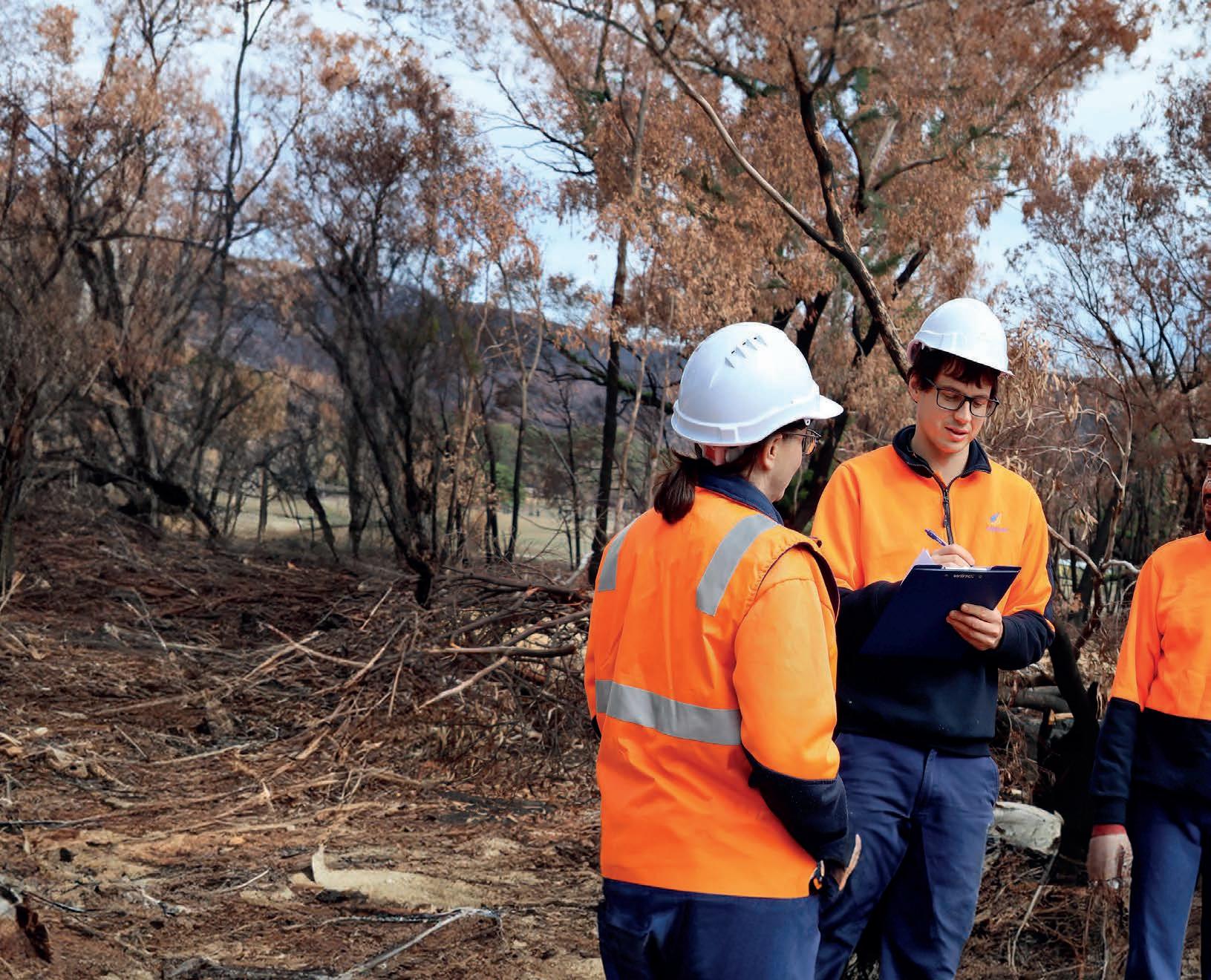

Another key brand for JPCI is Ultimheat. Ultimheat is the European subsidiary of JPCI. Its mission is to support the business development of JPCI in Europe. Ultimheat provides its customers with technical support, from the first contact through to product delivery.
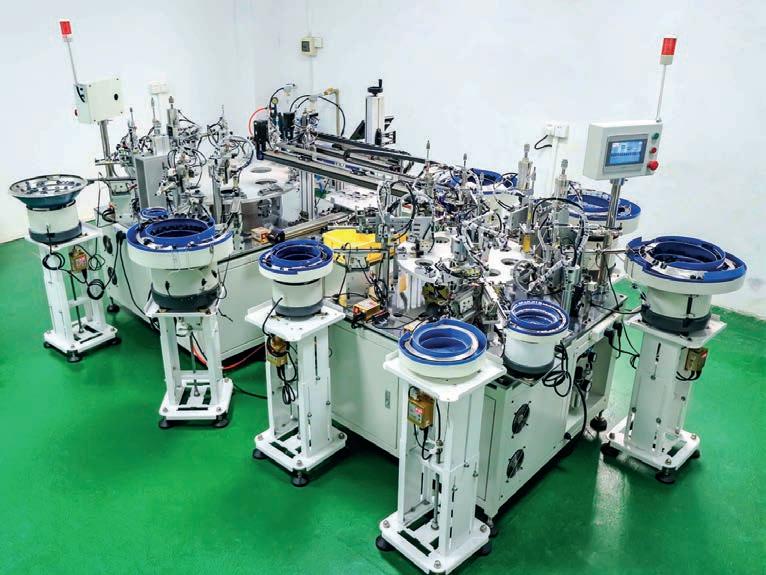


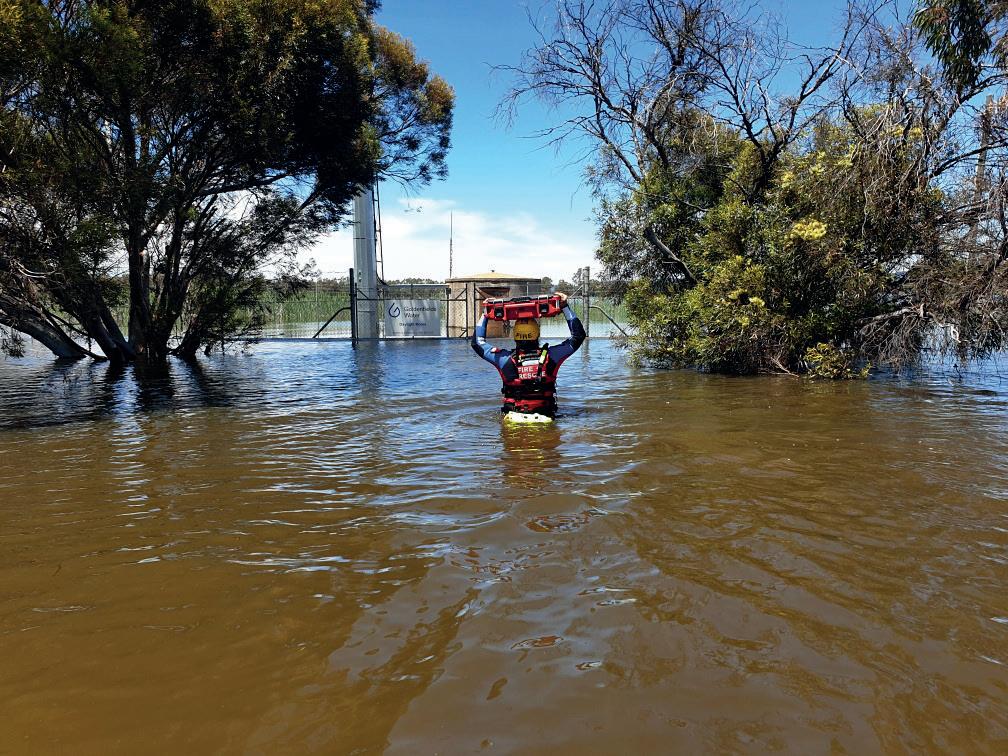
When floodwaters rise, the resilience of water infrastructure is tested. Data from digital water meters can prove valuable for making informed decisions to secure the water supply.
REGIONAL WATER UTILITIES face many challenges during flood events, and data pointing to leaks and breaks can make a real difference.
Sammy Jung has worked with Taggle Systems as Engineering Manager at Goldenfields Water and has been at the forefront of understanding data from smart water meters across the network.
In late 2022, flooding in Regional NSW put the water supply at risk when the bores that supply water to the townships of Weethalle, Tallimba and Naradhan flooded, causing an outage in that water scheme. Goldenfields Water, which manages the water supply for 46,000 customers across an area of 22,562 square kilometres, faced the extremely challenging task of maintaining the water supply.
Goldenfields Water’s first action in these areas with the flooded bores was to truck water in and implement high-level water restrictions, which limited customers to 100 litres of water per person daily. However, even with these measures in place, the reservoir levels were still dropping.
The next challenge was limiting the amount of water lost through the system due to leaks and bursts.
Taggle to the rescue
Luckily, Goldenfields Water has Taggle Systems digital water meters installed at every property, allowing the leaks to be quickly and easily identified. Goldenfields Water engineering manager Sammy Jung spoke about how the water meter data helped secure the water supply during the emergency.
“With Taggle’s equipment, we could identify specific customers who had huge leaks on their side of the meter and communicate directly with them, which was a great success in reducing losses,” Jung said. “In emergencies such as these, every drop counts.”
Taggle delivers hourly water usage data for its digital water meters and sensors. For Jung and Goldenfields Water, they could track where the water was going.
Network Leaks
“We knew we had significant leaks in both our water network and on
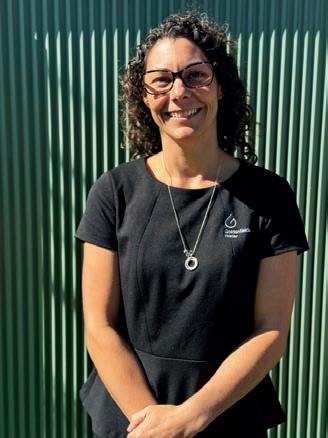
customer properties,” said Jung. “To address the network leaks, we split the scheme into smaller pieces by turning some valves off,” she said.
“We could then compare the quantity of water entering the supply network with what gets delivered to our customers and quantify how much water was being lost along the way.”
“We focused our energy first on areas with the highest losses and had staff patrol the water lines. This was extremely challenging, with over 300 kilometres of pipeline network in rural areas, but our teams quickly discovered significant bursts as part of this program,” said Jung.
Working with our customers
To address customer leaks, Jung and the team at Goldenfields Water worked through the leak report in Aqualus Water, Taggle’s meter data management software.
“We contacted individual customers starting from the largest leaks,” said Jung.
“We also contacted the highest water users to make sure they were aware of the restrictions and the consequences of using water during these times. When we spoke to them, many would say they only use water for the bare minimum requirements, as per the water restriction communications. That led to a conversation about leaks existing on their property.”
“Everyone was very appreciative of our efforts to save water and helped us find and fix the leaks. We had customers walking up to two kilometres, trying to find a leak in the pipe between the meter and their home.”
“Many of those customers could find the leaks and get them fixed, but not all could be located. Some of these customers had to have restrictors installed at their meter in the meantime, which allowed enough water to pass through to fulfil their daily requirements without wasting too much. This had a huge impact on securing our water supply,” said Jung.
“The flood emergency was extremely challenging, but we achieved incredible success in managing our water resources with the help of the meter data and the community,” she said.
What was learned?
“This was the first time Goldenfields Water had experienced such an extreme weather event in which the digital water meters managed supplies. It provided us with the
opportunity to learn a lot from the experience,” said Jung.
“One thing we learned was about the accessibility of the data to different team members,” Jung said.
“We now have more staff with system access who can benefit from the data and make informed decisions relative to their projects and tasks.”
“We also took a closer look at the Aqualus Water platform. We’ve had the system for over ten years, and there are many functions we haven’t adopted into our workflow,” said Jung.
“Goldenfields Water also uses the data for modelling. It helps them understand water consumption patterns, which are incorporated into its predictions of future water demand, population growth, and other utility information.”
“We also looked at how to analyse that data more effectively and use it to troubleshoot various problems. Sometimes, the customer tells us
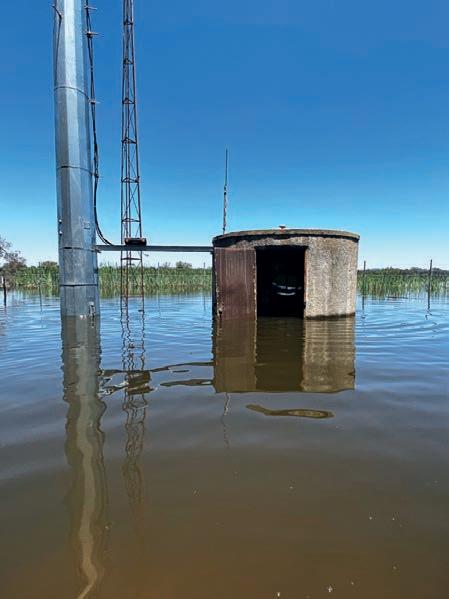
inhibiting water availability for the local area.
Image: Goldenfields Water
The Taggle Systems smart water meters are easy to install and communicate to static receivers across the water network.
Image: Taggle Systems
data to drill down potential causes or help facilitate further investigation.”
Ongoing partnership
“Goldenfields Water was an early adopter of Taggle’s technology. Our deployment was over ten years ago now,” Jung said. “Taggle has grown a lot in the time that we have worked with them,” Jung said. “We are doing our best to keep up with their technology and all the functionality we can capitalise on.”
The Goldenfields Water digital meter fleet is approaching endof-life after ten years in the field, so plans are being made for a replacement program.
Taggle has been on-site to work through the replacement program.
“It’s been a great opportunity to learn more about the latest technology, new devices and functionality,” said Jung. “We’ve had a fair bit of staff turnover since the first install, so getting that knowledge base back through the door has been valuable. It will help staff better understand the system and how we can best serve
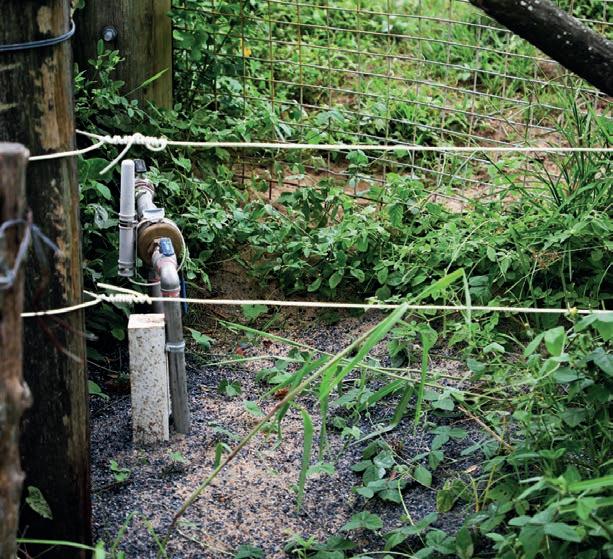
After the emergency flood event, Goldenfields Water gained many valuable insights and lessons. It willingly shared them with other Taggle customers and the wider community. Together, we are stronger as we prepare for future emergencies and use data and resources to secure
For more information, visit taggle.com and www.gwcc.nsw.gov.au
Preparing for an emergency can be worrying for any critical infrastructure. However, it is par for the course in regional Australia, so water utilities like GWMWater must be on the front foot.
WHEN WE THINK about the water industry, we often think about the water coming from the taps. In the case of an emergency, water is the last thought… until it becomes the first thought. That usually happens when water is no longer available. Such a situation is not uncommon in regional Australia, where power outages and bushfires can impact the operation of water and wastewater facilities. Grampians Wimmera Mallee Water (GWMWater) faces these issues often, especially during summer.
Nick Mumford, Executive Manager of Service Delivery, is responsible for managing it.
Mumford grew up in Karoonda, a rural part of South Australia. After completing his Engineering degree at the University of Adelaide, he spent many years working in Adelaide. However, Mumford always felt the pull of living and working in a regional area. An opportunity arose at GWMWater, which saw him move to Horsham.
“Growing up in a rural area, I grew up with water being an essential service. It is critical to people’s daily lives,” he said. “We learned that water was scarce, particularly when living off bore water and rainwater tanks. For us, water management has always been a critical issue.”
In Mumford’s eyes, the emergency management processes of an urban and regional water utility are essentially the same.
“Having said that, urban water utilities tend to have larger and more consolidated infrastructure than a
regional water utility,” he said. “This allows them to build in an extra layer of redundancy to their assets that we may not be able to achieve across our entire footprint. When there is an outage due to an emergency incident, there can be a few more challenges for us to deal with compared to an urban utility.”
One of those challenges is the distributed population and more dispersed power facilities. A regional water utility may not have fixed generators at every site to keep facilities running. It’s more likely that they will have a fleet of mobile generators that can reach specific locations. That can be tough for an organisation like GWMWater, which has a service area of about 25 per cent of the state of Victoria.
“Given we have to get emergency equipment on site, accounting
Executive Manager Service Delivery Nick Mumford. Images:

for travel creates an additional challenge,” Mumford said. “Having eyes on an emergency is essential, but that is difficult with such a large geographic area. We might know what is happening and can develop a plan based on that information. However, we need to build flexibility into the plan to account for changes in the situation.”


One of the most consistent issues facing GWMWater is bluegreen algae. The utility regularly experiences the impact of bluegreen algae, particularly where water supply is sourced from the Murray River which is susceptible to algal outbreaks.
“Another issue that we tend to deal with is impacts from storm damage which can lead to power outages,” Mumford said. “In February, we had four water treatment plants without power, 19 water pump stations, and 17 rural water pump stations without power at the same time. We were also managing bushfires, too.”
One such occurrence was the Bellfield, Pomonal, Dadswells Bridge, and Mount Stapylton bushfires that started on February 13. Storms also knocked out power to tens of thousands of people across the region.
“It was one event leading into another in the Grampians,” he said. “We were moving from a short-term event to a longer-term one. The management of these issues then rolled into the Mount Cole bushfire the following week.”
There is also the issue of floods throughout the region. Although the floods in 2022 were not as impactful on the GWMWater service area compared with other years, they are an issue that needs to be considered as part of any emergency management plan.
Preparing, dealing, and recovering Mumford also pointed out that no two incidents or major events are the same. That makes preparation more challenging. The importance of conducting lessons-learned workshops off the back of each incident helps GWMWater develop for the future, gaining insights on how assets operate through the incidents.
“One of the challenges we have as a regional water corporation is resources,” said Mumford. “It’s also worth noting that the recovery phase can be much longer than people may expect. It takes a long time to deal with recovery whilst also managing business as usual (BAU) activity at the same time. It can weigh people down over time, and once it is out of the media cycle, people forget that this is something that is still taking place.”
GWMWater is assessing the impacts of the latest bushfires in the region. Due to the risk of fire debris, collaboration with the local catchment management authorities is required.
“The first significant rainfall event will require very tight management,” Mumford said. “Ideally, we will have silt barriers and other infrastructure in place to minimise the volume of debris washed into our storages. Dealing with all of that could take six months or more, so it’s a longer-term challenge for water corporations to consider.”

Goals for the future of emergency management
Ideally, Mumford would prefer to have no more emergencies to manage. However, he knows of the realities of life and hopes for improved infrastructure for regional water utilities.
“[We] are challenged far more by the dispersed power network, and it tends to be a bit more vulnerable on the edges,” he said. “There are discussions around creating microgrid solutions to increase resilience.”
Mumford was strident in his view that increasing resilience across infrastructure in the region is important. This area is improving across Victoria, with recent government funding designed to repair what has been damaged and increase resilience in those areas.
“Climate change trends are likely to create more problems for the region. We are going to experience more drought, storm, and flood events. These all lead to an increase in emergency incidents that the organisation will need to have plans in place to manage and ensure our people are trained to respond to.”
For more information, visit www.gwmwater.org.au
The development of the bioenergy space as part of creating a circular economy is seeing research into turning waste into energy. SUEZ Australia and New Zealand is part of that transition.
WASTEWATER TREATMENT PLANTS
(WWTPs) provide opportunities for completing a circular economy for wastewater. Around the world, SUEZ is working with water utilities, local councils, and industrial water users to help convert waste into energy, thus closing the loop in a circular economy.
With rising energy prices and the need to reduce our activities’ carbon footprint, SUEZ is innovating to transform non-recyclable waste and sewage sludge into local, renewable energy that supports the ecological transition in local areas. SUEZ is also exploring technologies for capturing, storing, and using carbon dioxide, which will help achieve carbon neutrality.
People like Zdravka Doquang, Innovation Officer at SUEZ, are leading the charge in developing biofactories. She has been working in the water and wastewater industries for more than 20 years.
“When we think about bioenergy in the wastewater treatment space, we think of bioenergy as the production of biogas or a biosolid with a sufficient calorific power to be used as fuel for energy recovery,” Doquang said. “This represents the first brick of the Biofactory and the circular economy concept. SUEZ has been working on this for more than 15 years.”
Challenges around bioenergy
There are many challenges associated with bioenergy projects. The primary one is to maximise the production of biogas. This requires directing as much carbon as possible to the digestor by optimising
the primary treatments with enhanced settling.
“The bioenergy production process results in the capacity to combine several treatment steps smartly,” she said. “To optimise the biogas production method, we need to optimise the digestion process. Different reactors and configurations are possible and have been developed by SUEZ. These processes have subsequently been implemented in different projects worldwide.”
Anaerobic digestion (AD) generates positive externalities, but its profitability depends on the evolution of the biomethane feed-in tariff in the coming years. Developing a profitable AD will depend highly on complementary revenues (e.g., higher biogas production, digestate recovery, carbon dioxide recovery,
Rachael Nuttall is the Head of Major Projects at SUEZ Australia and New Zealand.
Images: SUEZ

hydrogen production, green certificates, VFAs production) and CAPEX/OPEX optimisation.
Zdravka Doquang is the Innovation Officer as the Director of Programs and Intellectual Property.
Rachael Nuttall, the Head of Major Projects Development & Sales, SUEZ Australia & New Zealand, believes in using biomethane as a green gas source.
“Biomethane reinjection into the existing framework is an emerging practice in Australia and is currently
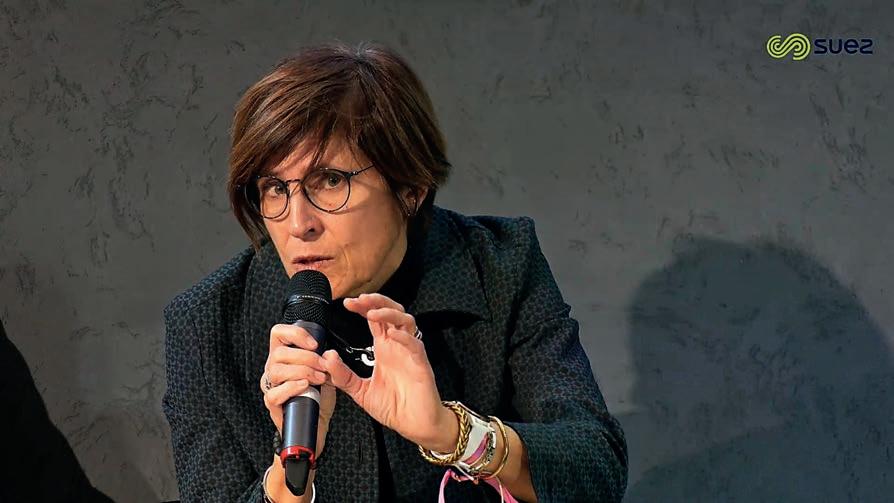

being trialled,” Nuttall said. “In Europe, we see biomethane schemes everywhere. It’s even at the level of local councils and farmers creating biomethane with their digesters. We are looking forward to being able to deliver biomethane projects in Australia.”
As SUEZ has expanded its influence into different bioenergy projects, there is always a lot to learn.
“Each and every business case is site-specific, and there is no onesize-fits-all treatment line,” said Doquang. “There are different factors to account for issues such as WWTP characteristics, sewage effluent classifications, local regulations, local demands, and opportunities for bioenergy use.”
Bioenergy can be used for electricity generation, heating, biomethane for injection into the grid, and a range of other opportunities.
“For example, one of the Australian water recycling plants has a two-stage mesophilic anaerobic digestor (MAD) operating at 37°C,” Doquang said. “This allows SUEZ to produce up to nine per cent more biogas compared to a single-stage MAD. Furthermore, the two-stage configuration allows biological hydrolysis optimisation. We’ve put this in place in Nice (France) and Okhla (India) to tackle a range of land footprint constraints. This helps the facility fit into the urban landscape.”
There’s also the option of operating the hydrolysis at a higher temperature, ideally above 140°C. With the right equipment, SUEZ has seen a further 20 per cent more biogas at projects in Mapocho (Chile), Panama and Dijon (France).
“To transform sludge into biosolid with high calorific value, we need to increase the sludge dryness with thermal drying or ultra-dewatering to create bio-coal,” said Doquang. That dewatering process is critical to maximising energy production. Whether it is dewatered on-site or pre-dried is a site-specific decision.
“Finally, to produce green electricity from sludge incineration, SUEZ implements either an Organic Rankine Cycle (ORC) technology or a vapour turbine.”
In partnership with SA Water, SUEZ recently ran its inaugural Innovation Day in Australia, having held it in other parts of the world in previous years. A focus was on the implementation of biofactories.
“The key takeaway from the Innovation Day was that a biofactory exists within an ecosystem,” said Stephanie Clarke, the V.P. for Growth & Innovation, SUEZ Australia and New Zealand. “When viewed through this lens, we recognise it’s environmental, economic, and social impacts. SUEZ is looking to create value from the incoming wastewater at the plant. . To maximise the
potential for reuse, we delved into various considerations during the biofactory workshop, beginning with site specificity. Apart from just available space and existing processes, we also needed to consider proximity to communities, and potential users and markets for the resources.”
SUEZ has a variety of technologies to implement for different projects and is always looking for different organisations to partner with. This collaborative approach is fundamental to our accumulated expertise in the field.
“We have technology for treatment plants, resource recovery, and wasteto-energy, but how do we work together with our clients to maximise the impact, given the location?” asked Clarke. “If we think about it holistically, it can be an effective way to address the problem.”
SUEZ will continue to work and invest in renewable energy and resource generation projects and the reduction of carbon dioxide emissions.
“Ideally, we want to implement breakthrough and game-changing technologies allowing biomass conversion to biomethane. That way, we can achieve even higher green gas production and, ultimately, close the loop for a circular economy,” said Clarke.
For more information, visit www.suez.com/en
Interflow founder Harold ‘Bill’ Weaver instilled a passion for learning and development within his business. Since then, the HJ Weaver Development Program has enabled people to develop their future careers.
AFTER HIS FIRST six months as an intern with Interflow, promising young engineer Matt Cremona was offered a place in a program that would introduce him to all parts of the business.
“It was all about experience and opportunity,” Cremona, now Delivery Manager at Interflow, said. “I was given the opportunity to rotate around different divisions within the organisation for six months to a year each. I spent some time with operations, asset creation, repairs and maintenance, product development, and tendering.”
Cremona said his most valuable assets were the relationships he developed with people in various parts of the business during that time. His strong connections throughout the business have helped his career ever since.
“Having those relationships meant that when I was given opportunities in other divisions, I could rely on those relationships to help me in my new roles,” he said.
That was 13 years ago. Interflow’s approach was built on Bill’s passion for developing his people to be their best and formalised more recently as the H J Weaver Development Program.
Education assistance
“The program is about supporting and developing people over the years by creating a business environment that encourages, enables, and supports learning,” said Fiona Warnock, Interflow’s People and Capability Business Partner.
“It’s looking not only at the entry level. It’s also about our existing team members. One gentleman in his late
Interflow’s HJ Weaver Development program helps people grow as individuals while supporting organisational outcomes. Images: Interflow
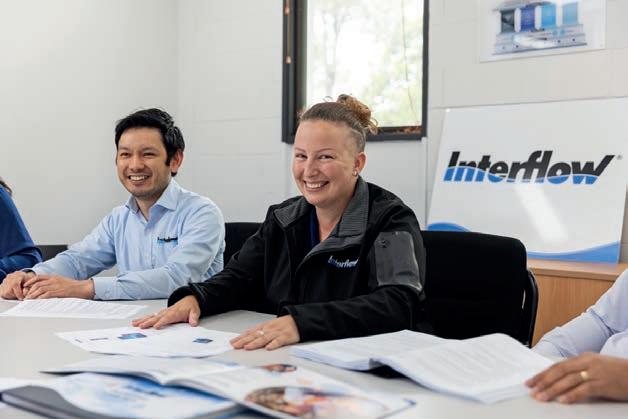
30s or early 40s was a supervisor in the field and now wants to do a mature-age heavy vehicle mechanic apprenticeship. So, we’re supporting him in completing a four-year apprenticeship through TAFE.”
Warnock said the program is more like an education assistance policy than a pure graduate program. It consists of two streams that promote learning and development at every level.
One is for the business’s interns, undergraduates, and graduates.
The other focuses on existing team members who want to develop or change their careers. Chosen education programs are eligible for funding, including fees, textbooks, and union fees. For the graduate, that can represent an investment of more than $30,000 in their professional education.
“Many businesses offer rotations into various departments or programs,” Warnock said. “But this financial support for education
programs, coaching, rotations, mentoring and other development opportunities are a real value add for our people.”
In this employment environment, Warnock said, it’s vital that businesses planning for growth also put internal talent development structures in place to ensure that future growth can be supported.
“It’s no secret that there are great challenges in recruitment,” she said.
“You can’t always find someone who has all the necessary skills. We want to develop people and have a pipeline of talent that will help enable our growth trajectory. At the same time, people realise they are a vital part of that growth story. It makes them want to stay with us when they realise they’re valued, nurtured, and developed.”
How the Program works
The most important steps in the evolution of the HJ Weaver Development Program have been
analysing what types and levels of talent the business will require over the next five to eight years and creating a talent map that informs the business of what it has in place now.
Then, a framework was built around how the program works, ensuring clear channels for people to request, report on, and record progress within specific educational programs.
“I have aimed to provide rigour and a structure around how it works,” Warnock said. “We first had to understand what the business needs and what we have in place.”
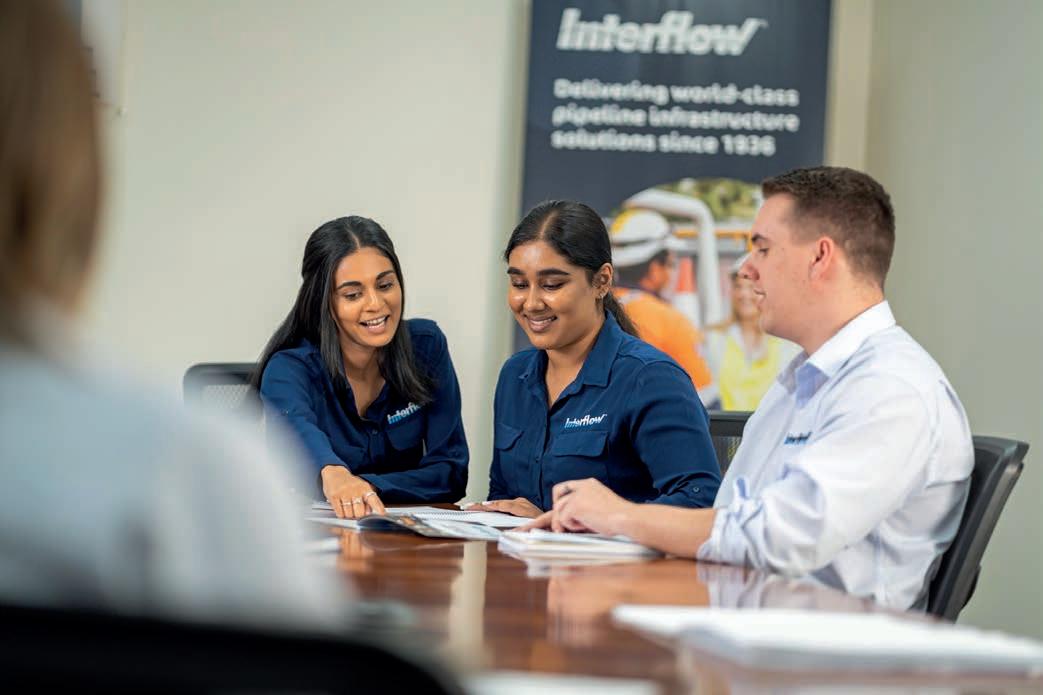
The next step comes from midyear and annual performance reviews, during which a development plan is discussed. Development opportunities identified during those reviews are then run by the individual’s line manager and the Executive General Manager.
“It also needs to be in line with the skills needed for the future of the business. But if it’s beneficial to the person and the business, then we’ll look at it,” Warnock said.
Why development is worth the investment
There is longevity at Interflow in terms of average employment periods. Part of this is explained by the business demonstrably valuing its people and putting its money where its mouth is.
“It does create a personal touch, a sense of investment in the individual,” Warnock said. “Education can be compelling in a person’s life. I have
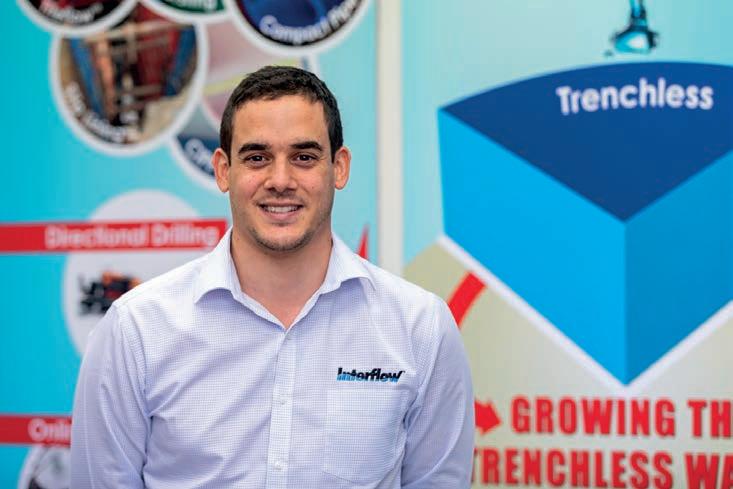
Matt Cremona is now a Delivery Manager at Interflow, having started as an intern.
a 23-year-old son, so I feel strongly about this.”
The program made a measurable difference in Cremona’s life.
“It felt pretty special,” he said. “I was able to set myself up in terms of career and development.”
He recalls that many other university graduates he’d gone to university with were struggling to find careers or job opportunities while he was being developed through the program.
“But I had that security,” Cremona said. “As I graduated, I was also exposed to different avenues, divisions, and relationships. This has helped throughout my entire career so far. Every time I stepped up, like when I became a Project Manager, I understood all the background and why it was so important.”
Cremona is now using what he’s learned to support and develop his team at Interflow.
“That information has helped me succeed,” he said. “It has given me security and confidence in my ability. I have the confidence to know what I’m saying is right and back my decisions.”
For more information, visit www.interflow.com.au
The water and wastewater treatment industry has many moving parts. Motion wants to become the leader in bearings, power transmission, hose and fittings, fluid power, and industrial products.
began over a century ago. It has since supplied bearings, industrial drives, motors, lifting, sealing, and fluid power solutions, as well as engineering services. With an unparalleled selection of products, expertise, and branches nationwide, the company is living out its promise to provide Australian industrial businesses with ‘more choices, more solutions’.
“Over the past few decades, Motion has shifted its focus from being a supplier of componentry to being a full solutions provider,” said Ryan Kendrigan, Executive General Manager of Engineering Services at Motion Australia. “We made this decision through our relationships with customers and learning their needs. To truly service our customers and give them tailored solutions, we felt we needed to add more value across the product portfolio.”
Broadly, Motion’s businesses can be grouped into three key areas –Industrial Solutions, Fluid Power and Engineering Services. As Executive General Manager for Industrial Solutions, Nick Kerwin says the consolidation of the company’s core businesses has only had positive implications for customers.
“We’ve worked with many of our bearing and power transmission suppliers for decades and have built on a wealth of expertise both in partnership with suppliers and in our team,” he said. “Being able to go to industrial businesses with a holistic offering – that incorporates everything from traditional rotating componentry to hydraulics,
hoses and fittings to bespoke engineering services, training, and even energy efficiency reviews – is hugely beneficial.”
All three business lines touch on the water and wastewater industry. Motion is moving into these business lines under the leadership of people like Leon Stefanec (National Business Development Manager for Food and Beverage), Grant Gray (General Manager—National Sales), and Graham Marple (Business Manager of Strategic Projects).
“Industrial Solutions is more of our traditional line in that it deals with bearings, power transmission and industrial supplies,” said Stefanec. “Fluid power is more around lubrication, industrial hose fittings, valves, and pumps. Finally, engineering and services focus on manufacturing, repair, design, and on-site installation services.”
“Our water customers are now seeking a more long-term solutionsbased outcome, reducing the impacts around downtime and improving ongoing long-term reliability,” said Gray. “Through our years of experience, we can demonstrate the key principles of engineering success that deliver both longevity and sustainability.”
The water and wastewater industries are unique because almost every client Motion works with is a government-owned entity or government-contracted operator. With all the assets owned by governments of various stripes, and managed by contractors or
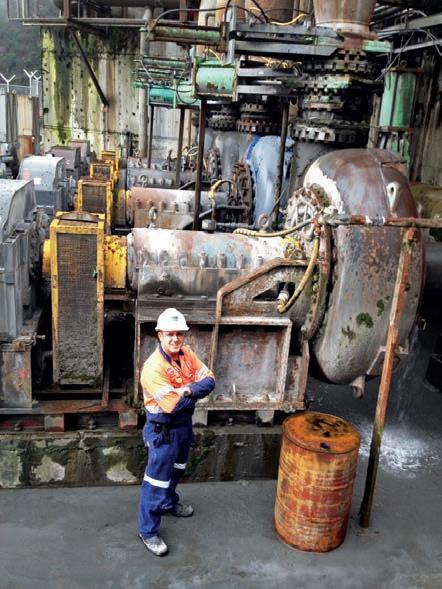 Marple is the Business Manager of Strategic Projects at Motion Australia.
Marple is the Business Manager of Strategic Projects at Motion Australia.
Images: Motion Australia
subcontractors, finding the right person in the right department to achieve organisational goals can be challenging.
“That’s why it is essential to form relationships with the contractors and subcontractors,” Stefanec said.
“With contractors and subcontractors coming in and out of projects around tenders, we need to move quickly to work with the successful tenderers to pitch our products and services.”
“Our water customers are seeking partnerships rather than a transactional vendor relationship, with partners who can work collaboratively and respond to their delivery demands and expectations,” said Gray.
“For example, we were working onsite with a multinational client in western Queensland,” Marple said. “That multinational was operating a water treatment plant for a multinational energy
producer. That company needed to treat a significant amount of seawater, which is a byproduct of gas extraction. It’s one of those areas where the producer sees the seawater as a waste product that must be treated cost-effectively. Motion is contracted across two remote sites to conduct maintenance activities that improve uptime on their rotary assets. We are entering the seventh year of this contract, which is a testament to the value we add to both predictive and preventative maintenance services. Further to the site services, we also complement any necessary offsite repairs with our array of specialised service centres.
One of the other aspects is cost. Government departments and contractors are often restricted by tight budgets, and that is in part because they are responsible for the proper use of taxpayer money. This can affect any business working with such entities in multiple ways.
“(These companies) need reliability in their plan,” Marple said. “It’s why they need to walk that fine line between productivity and fiscal responsibility.”
“With an increasing population and subsequent increases in demand, the need to provide a more reliable and consistent delivery is critical,” said Gray. “We understand the need for efficient and reliable asset delivery.
Motion excels in providing efficient machinery to improve productivity without creating too much financial strain on existing budgets. This is where the range of drivers and motors comes into play.
“One thing that we do for our clients is energy audits,” Marple said. “It might not be the sexiest thing in wastewater plants, but it contributes to better wastewater management.
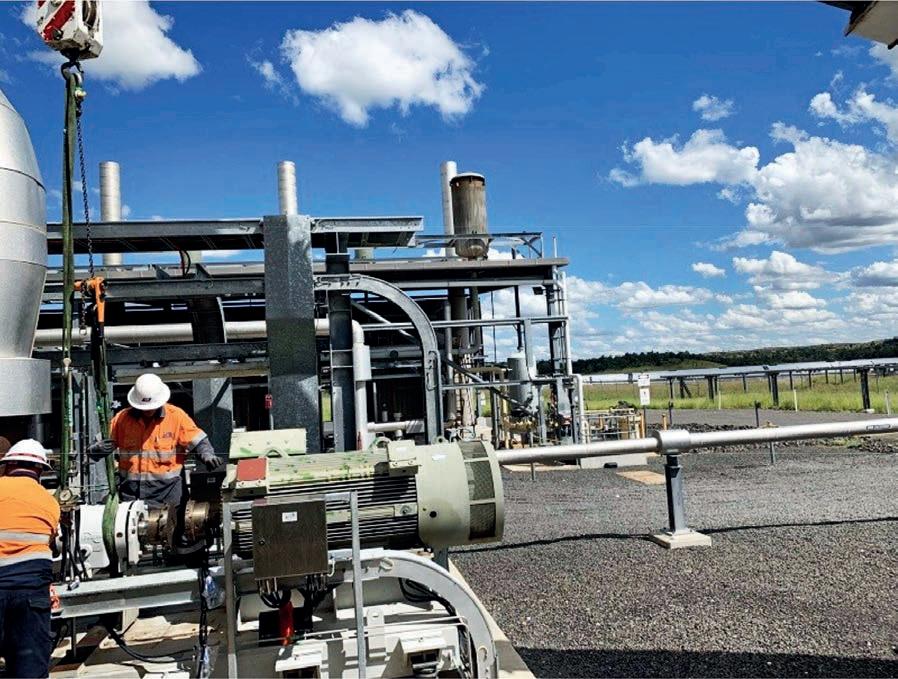
The plants will be more financially stable if we provide more efficient machinery. That’s why we work with them to provide the most efficient drives, electric motors, and belt drives. All that leads to reduced power consumption for the same work.”
That’s why Motion positions itself as a trusted advisor to its customers. It has conducted many customer surveys and has found that its customers come to them because it offers the right advice for individual problems. One aspect of this is providing high-quality products from well-respected brands.
“From a technical standpoint, we can change designs and be nimble,” said Stefanec. “That is unique for our market. We have invested a lot of money into power transmission products. Some brands we work with have been in Australia since the 1920s.”
Having those high-quality brands to distribute supports Motion’s work in the wastewater industry. It has worked with some brands for many years to develop new products with longer life spans than other products in the market today.
“It’s why we have retained the business of these brands for so long,” Stefanec said. “We’ve worked with our partner brands to develop solutions. That also applies to the government departments, who tend to be very loyal to the products and brands initially designed into a project.”
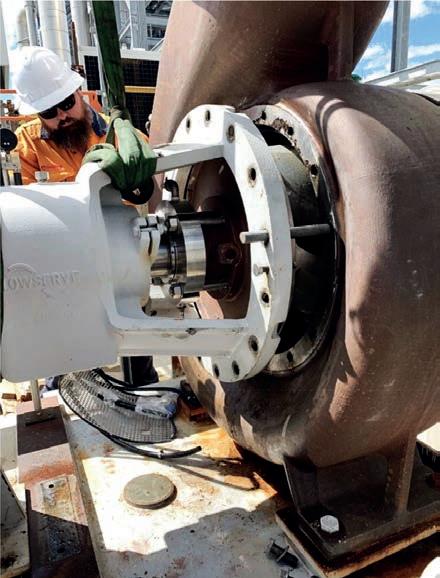
fundamental aspect of Motion Australia’s work.
become the market leader.
“We are working to become the leading provider of engineering solutions and products to the wastewater industry,” Stefanec said. “Motion has made some pretty big statements about where the company wants to be in the future. However, it’s not just marketing. We have a plan behind every statement and want to be the market leader in the wastewater industry.”
“Our purpose is to keep the world moving,” said Marple. “It might be a simple catchphrase, but it is what we want to communicate to our customers. That is what most of our customers want. They want to keep producing and maintaining their equipment to keep them moving, productive, and profitable.”
For more information, visit www.motion.com.au
Building resilience against water scarcity, future compliance changes, and balancing energy demand for industrial manufacturers is a challenge. Selecting appropriate wastewater treatment processes can supplement or address this issue.
BIOLOGICAL TREATMENT
PROCESSES offer industrial customers a pathway to exploit the hidden energy potential of highstrength wastewater. It can also be implemented to reuse treated water to reduce reliance on potable water.
As Hydroflux knows, this shift towards sustainable wastewater management practices highlights the importance of selecting the most suitable treatment process tailored to specific industrial applications. Amid a wealth of information and technological advancements, there is a critical question: ‘which process or processes are best suited for any specific application?’ There is no one-size-fits-all answer to this question due to the multitude of options available. They are all contingent upon various factors and numerous variations within a similar framework.
Anaerobic treatment is hailed as a sustainable process with several advantages. These include the conversion of organics into valuable biogas and low power consumption. However, there may be better choices for scenarios characterised by high-fat content, high levels of effluent variability, or relatively low organic loads.
Moreover, anaerobic processes often fall short of achieving the necessary discharge quality particularly in regard to nutrients,
necessitating downstream aerobic polishing.
Nevertheless, anaerobic treatment excels when addressing the high organic loads encountered in numerous manufacturing processes. As such, high-rate anaerobic systems are suited for compact installations, making them ideal for suburban factories.
If an anaerobic system is not an appropriate solution, users need to review the adoption of an aerobic process. Key determinants influencing the design of aerobic systems encompass the use of existing infrastructure, available space, and the required effluent quality. Even following this initial assessment, a multitude of possibilities remain.
Aerobic treatment processes can be broadly categorised into four main types: conventional activated sludge (AS), sequential biological reactors (SBR), membrane biological reactors (MBR), and mixed bed biological reactors (MBBR).
MBBR systems share a conceptual lineage with fixed film reactors originating from the early development stages of trickling filter technology, which dates back over a century.
All of these processes can be employed to treat wastewater from various types of manufacturing facilities. It can include nitrification
Any business that needs to manage its wastewater needs to think about how to best minimise the impact on the local environment.
Image: Hydrofluxand denitrification stages. However, due to recent technological advancements and improved manufacturing costs, MBBR is often favoured for its adaptability to effluent quality variations and compact footprint. On the other hand, MBR is preferred when a highquality discharge is necessary.
The MBR utilises ultrafiltration modules to separate the biomass from the treated water phase. It is a preferred choice when reuse schemes are being considered. Treatment in ultrafiltration membranes is usually implemented as a first or even final stage of treatment before reuse. The membranes can achieve high suspended solids removal and partial disinfection.
Another aerobic innovative variation, known as the Organica process, seamlessly integrates conventional wastewater treatment technology with a botanical ecosystem. Organica utilises plant roots that grow into the effluent, fostering the growth of beneficial bacteria and living organisms. Its design, reminiscent of a greenhouse or garden, not only enhances the functionality of wastewater treatment plants but also elevates their aesthetic appeal.
For more information, visit www.hydroflux.com.au.

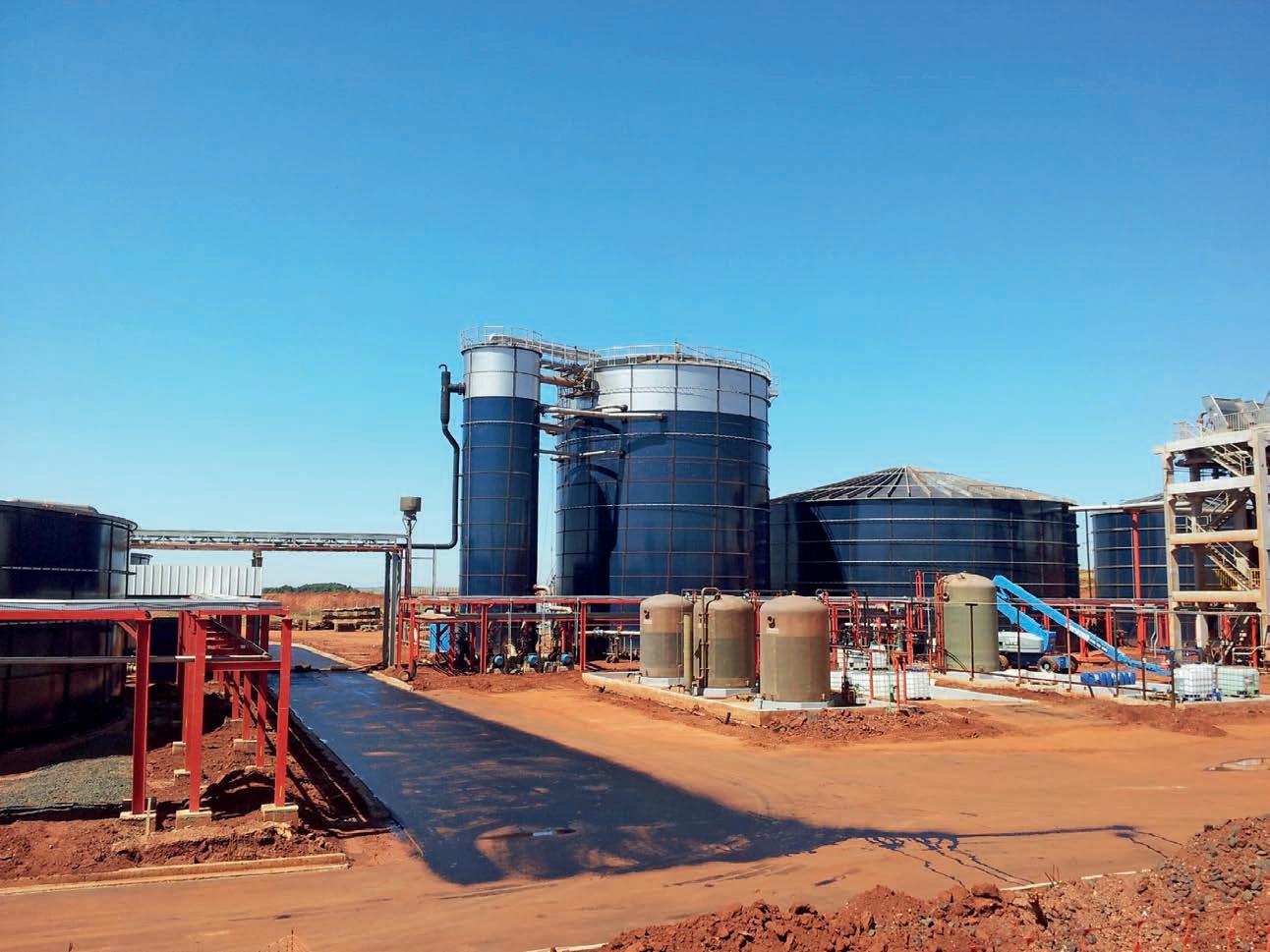



Thurs 20 June, 2024
WOMEN IN INDUSTRY NOMINATIONS ARE NOW OPEN. Now is your chance to nominate an industry leader who you believe is advocating for positive change and deserves to be recognised.
The Women in Industry Awards recognise outstanding women leaders from across Australia’s industrials sector.
There are many challenges facing wastewater plants and industrial wastewater managers. How can the operators of these facilities increase operational efficiency?
WASTEWATER PLANTS, MINES, and manufacturing industries face complex challenges. Older plants need to be upgraded to achieve efficiency targets. At the same time, plants are looking for ways to lower operating costs. Operators are also looking to improve the plant’s productivity, including enhancing energy efficiency, operational efficiency, and resource utilisation.
There is also an increased focus on reusing wastewater wherever possible. This is particularly the case when looking at water scarcity. More countries are facing the same challenge when it comes to the availability of water for both potable and non-potable purposes.
This is where Bonfiglioli steps in to support the water and wastewater industries. It is a family-run Italian company with a global presence. Bonfiglioli’s three business units, Discrete Manufacturing & Process Industries, Motion & Robotics, and Mobility & Wind Industries, embody all the expertise and experience needed to support its customers’ growth.
Understanding the wastewater industry
Harry Singh is the National Sector Manager for Bonfiglioli Australia. He’s been working for Bonfiglioli for more than 13 years and has an insight into how the company can help wastewater plants become more productive. The wastewater treatment sector in Australia faces many challenges.
“The cost of living is one of the big issues,” Singh said. “The increase in energy prices is hurting many
wastewater plants. It’s also critical that these facilities reduce the impact of maintenance and downtime on their facilities, as that is a period where they are not working on waste, which costs them money. Finally, they have to work tirelessly to ensure there are no accidents and as little contamination of waste streams as possible.”
Gear motors and gearboxes are crucial in improving wastewater treatment plants’ overall efficiency and performance. They work constantly to ensure that materials are moved where needed.
“It is essential that the gear motor selection is accurate,” he said. “The right gear motor is based on the operational needs and size of the plant. Plant managers want gear
Having the right combination of gears and motors can increase productivity and reduce energy costs.
motors with the highest possible efficiency, as it reduces running costs through using less energy.”
The gear motors should also have the correct bearings and gear life.
The goal is to have the longest possible life for the gear motor system, which reduces its long-term replacement cost. That’s why several factors need to be considered when selecting a gearbox and gear motor solution.
What is important?
“Understanding the power demands and output torque is critical,” Singh said. “Getting that relationship right is key to increasing the facility’s efficiency. Wastewater plant managers also need to consider the gear motor system’s service factor and the bearings’ life.”
Another aspect is having the proper oil viscosity. That is because it can minimise friction and mitigate wear and tear on the system. This is why the oil level indicator is needed, as


latest technology can improve the efficiency of wastewater treatment facilities. Bonfiglioli offers a range of accessories that can help operators understand the internal operations of the drive system.
range of motors that can be implemented in a range of different wastewater applications.
provided the right instrumentation to achieve this goal while adding vibration analysis. This has become the standard package for this client, who has now saved a lot of labour and money.”
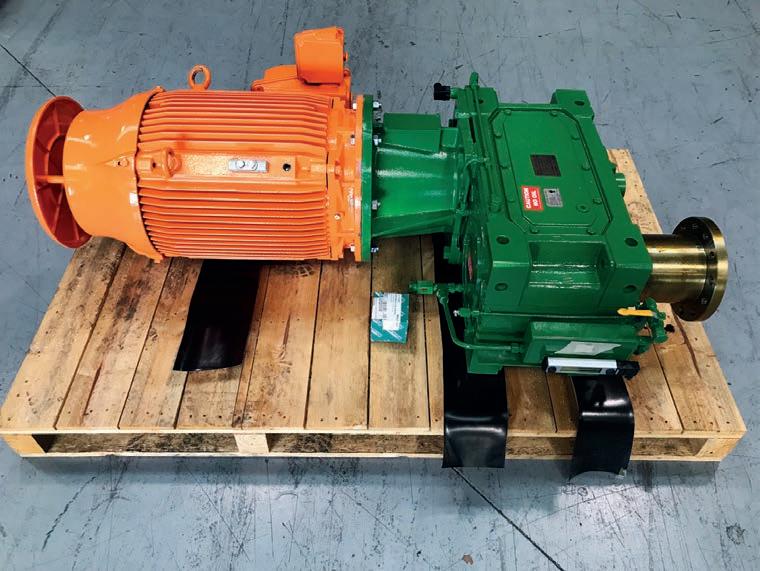
specialists need to understand the plant’s operations, and the operators must appreciate that getting the right gearmotor is fundamental to improving the plant’s efficiency and productivity.
“Bonfiglioli has a range of equipment and accessories that can be added to our drive systems,” Singh said.
“They can be used remotely or from a control room, which means operators do not need to get close to the equipment.”
These features provide protection and vital readings. These readings can include load, vibration, temperature, and oil levels, among many other essential readings.
“The more the protective features are used, the better the outcomes for the wastewater treatment plant. That’s particularly the case when it comes to efficiencies and cost savings.”
For more information, visit www.bonfiglioli.com/australia/en
One company in the centraliser and spacer system sector continues to make a difference in the water and wastewater industry.
DECADES, REPAIRING aging
water infrastructure has been costly and disruptive. Traditional methods often require extensive excavation, leading to traffic congestion, environmental impact, and lengthy project timelines. The use of trenchless technology as an accepted and standard method in the industry means that many of the issues are alleviated. kwik-ZIP provides an innovative solution that supports trenchless technology, which provides another benefit to this installation method.
kwik-ZIP spacers are engineered from a robust, low-friction thermoplastic blend. They create a precise gap between the casing and the carrier pipe during the slip-lining process, ensuring smooth insertion and protecting the new carrier pipe from damage. Designed to be compatible with all types of pipe material, kwik-ZIP’s HD and HDX/HDXT spacer system series can also be used on and in corrugated pipe installations.
In Australia, kwik-ZIP’s HDXT and HDX Series spacers have been successfully appraised by the Water Services Association of Australia (WSAA), and both products have been approved as compliant by WSAA. The WSA PS-324 Product Specification prescribes casings spacer requirements for correctly protecting carrier pipes when installed inside casings.
Simple and efficient.
kwik-ZIP has a straightforward and efficient installation process. Unlike traditional methods, the spacers and centralisers require no special tools,
thus reducing labour costs and project timelines.
kwik-ZIP maintains a focus on price effectiveness, simplicity, and rapid on-site assembly to ensure that its centraliser and casing spacer systems deliver cost, time, and operational advantages to its enduser customers.
Recognised around Australia kwik-ZIP has been implemented in a range of projects across Australia. It’s not restricted to urban areas, with regional Australian water utilities seeking to use the kwik-ZIP spacers and centralisers.
The work of kwik-ZIP has ensured that its products are used consistently across the country.
One feature noted is the weight the spacers and centralisers can handle. This comes from its unique load-sharing runner system design, which maximises spacer weightbearing capacity and reduces point loading. kwik-ZIP spacers and centralisers perform to a high standard, satisfying the needs of many utilities.
Trenchless technology allows for installation under a range of environments, including live tram tracks, train crossings, major roads and highways.
kwik-ZIP has a “load sharing runner” system that delivers a suspension and dampening effect. This reduces the transfer of potentially damaging vibration and movement from the outer casing to the carrier pipe. This will benefit any project’s high-traffic crossings where ongoing external vibration could affect the installation.

kwik-ZIP spacers installed on 1067millimetre mild steel cement lined Steelmains Sintakote®. Image: kwik-ZIP
Of international renown kwik-ZIP has worked with companies in many industries including the water industry across the globe when installing its spacers and centralisers. Kwik-ZIP products are regularly used in New Zealand, the United Kingdom, the Middle East, France, and many other countries. Kwik-ZIP also continues to be well supported by contractors and distributors in the United States and the Americas in a wide range of industries. Feedback from contractors has been that the spacers and centralisers were easy to install. They worked as they were supposed to, and none of the clients experienced any installation or maintenance issues.
For more information, visit kwikzip.com
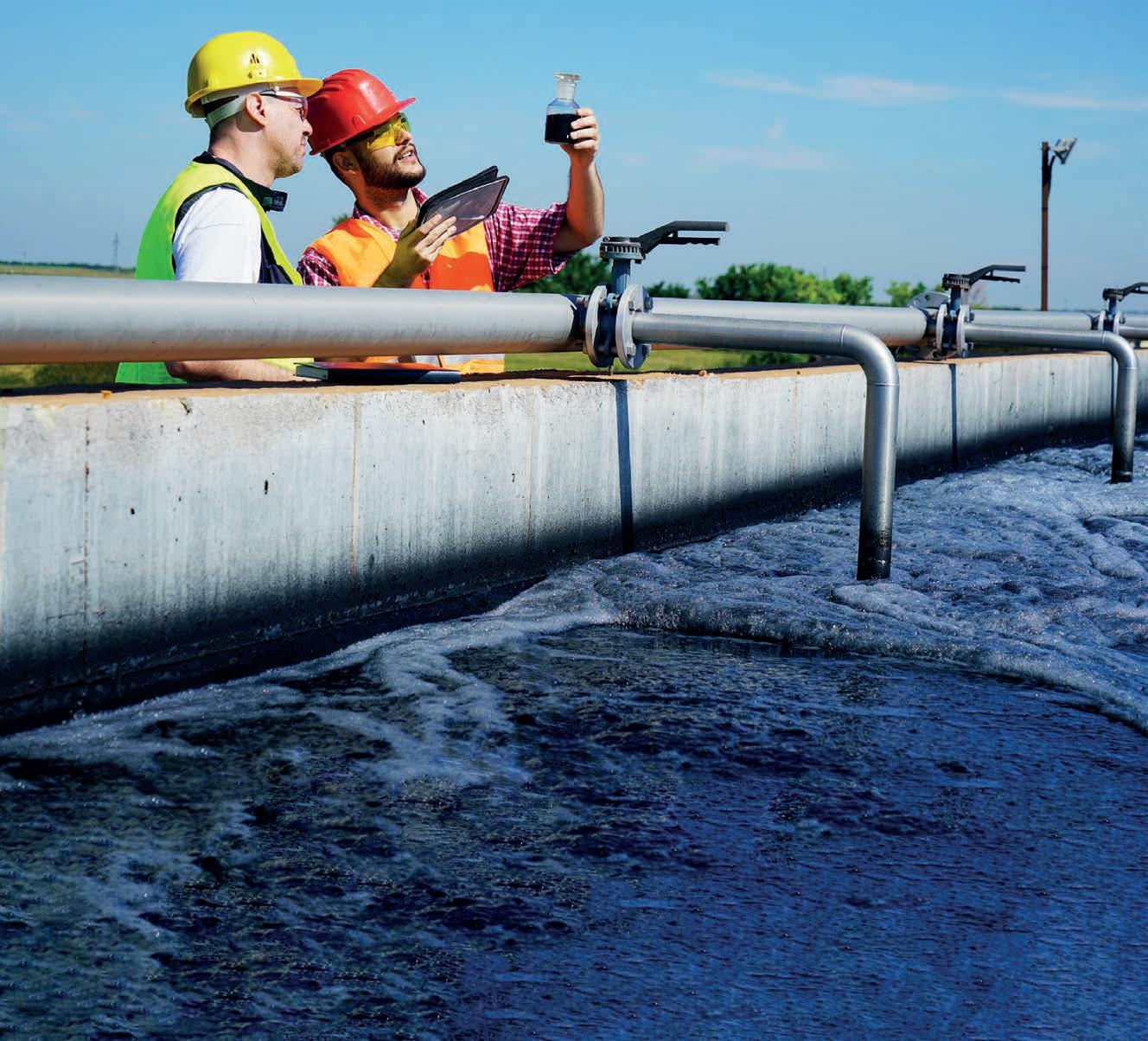


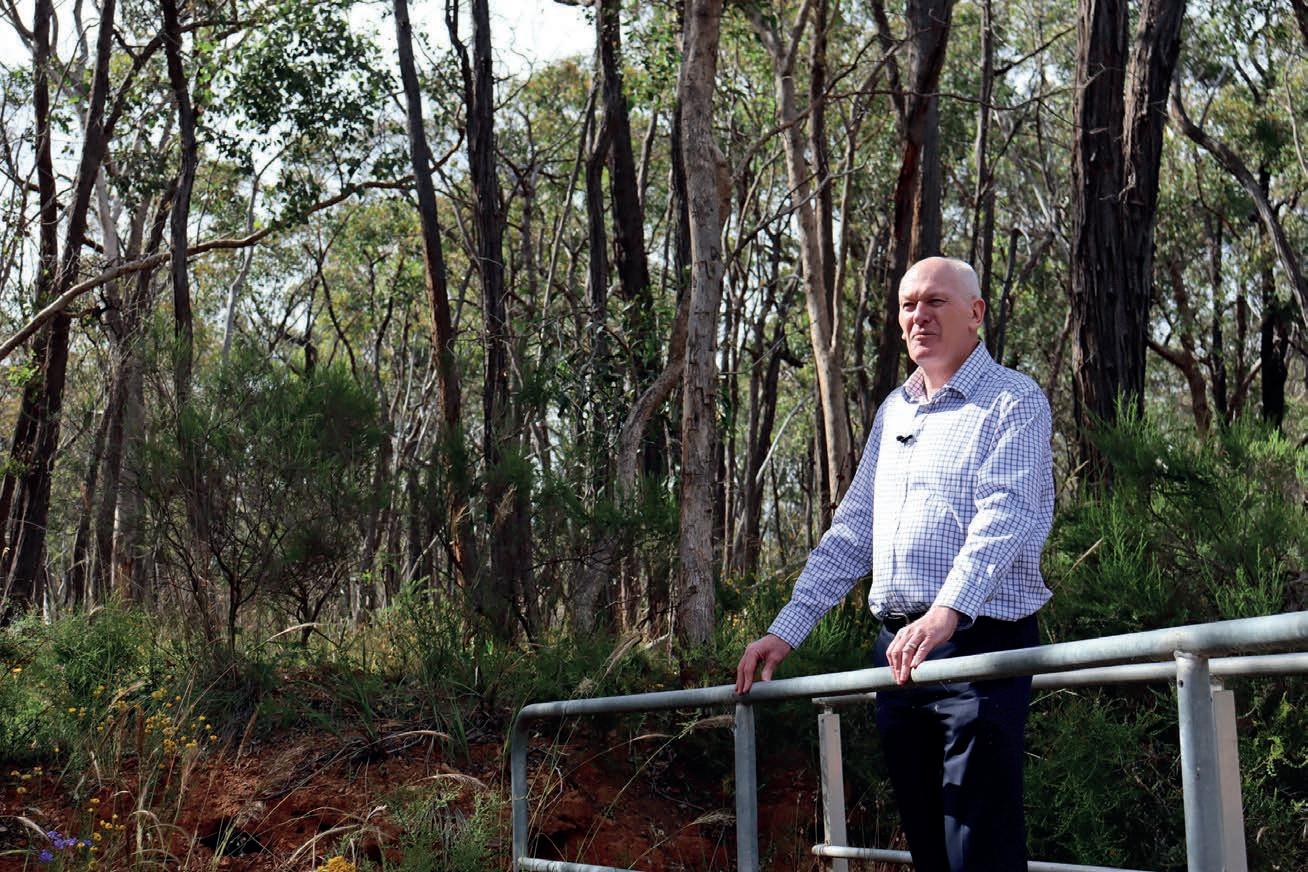
Victorian water corporations are working to quickly respond and adapt to changes presented by our warming and drying climate, which in turn, affects raw water quality that is received at water treatment plants.
AS OUR WATER is processed and treated to provide safe, high-quality drinking water for communities, there is a continual process of learning to adapt to changing water quality. That’s why water quality testing has never been more important.
Central Victorian water utility Coliban Water is embracing this change and seeking to identify emerging issues early. Senior Water Quality and Regulatory Advisor David Sheehan provides his insights on how the water industry can continue to improve water quality testing.
“I’ve been in the water industry for about 40 years,” Sheehan said. “I started with Sydney Water four weeks into my undergraduate degree and stayed for about 17 years. I moved to the Department of Health in Victoria, in the water regulation field, before moving out to Coliban Water.”
Sheehan has a clear passion for water quality testing. He pointed out that there is a strong ‘public good’ element to the work that he and the rest of the water industry do.
“Our purpose is to deliver water and waste water services for community needs - now and into the future,” said Sheehan.
Importance and challenges
Water quality testing is vital in managing and understanding human health and environmental risks. It
Coliban Water Senior Water Quality and Regulatory Advisor David Sheehan. Images: Coliban Water
The end result of water quality testing is assurance that the drinking water being supplied is water that you can trust.
provides data that can help identify potential problems, verify that water utilities have provided safe drinking water to their communities, and provide appropriate alerts when water quality changes.
“If testing is carried out over a long period, it can be used to identify long-term trends,” said Sheehan. “It helps us build a picture of potential issues in a particular geographical area or town. It can also provide an assurance that, for example, drinking water is safe to consume.”
Most water quality tests measure a small volume of water at a specific
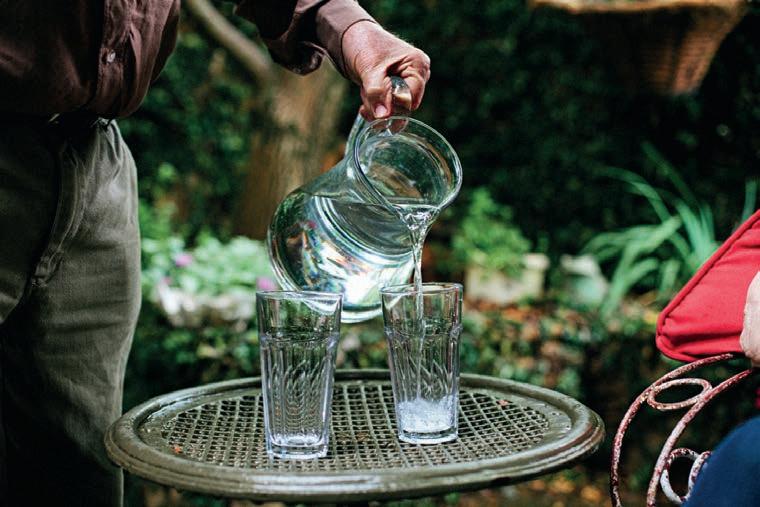

time, with a limited number of parameters measured. However, water quality can change rapidly for a range of reasons. As such, testing for all potential contaminants is not always possible.
“That’s why it is important to know what the individual results of water quality testing mean,” he said. “This is not just in terms of risk and safety, but also what the results can’t tell you.”
Ensuring meaningful testing results requires samples to be collected, transported, and stored correctly. Samples should also be analysed promptly using appropriate methods. A good laboratory cannot compensate for a poorly collected or stored sample.
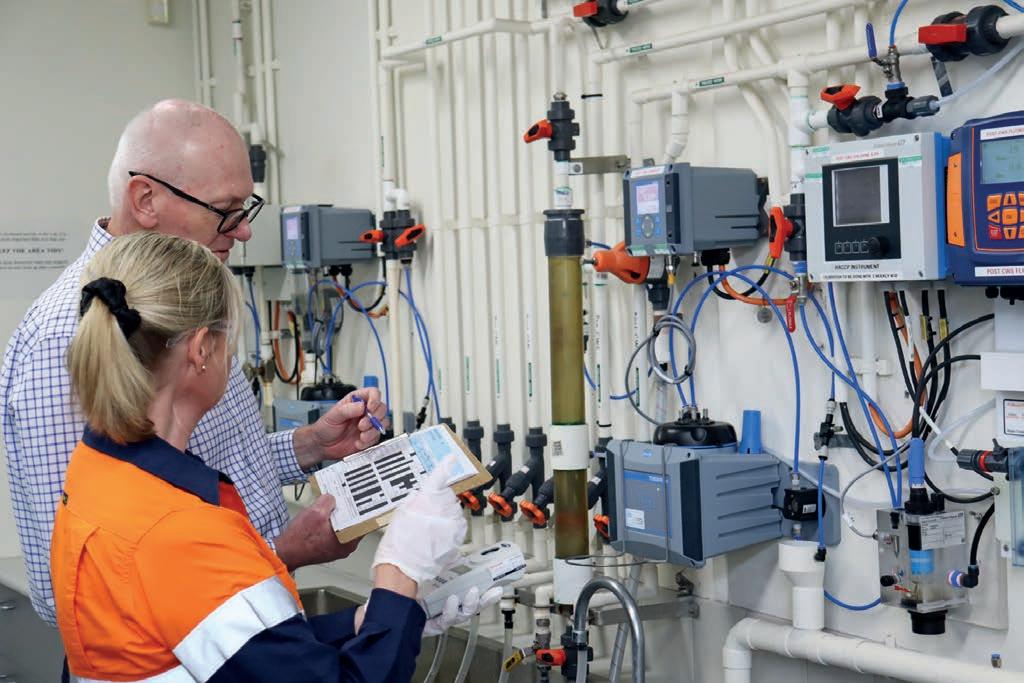
Lastly, water quality testing does not prevent issues from arising. In most cases, results from testing are available five days after collection. This is why a proactive, risk-based approach to managing drinking water quality has been adopted. Under this arrangement, water quality testing is more commonly used as a verification step to build on the proactive approach to water quality management.
Extreme weather events, such as the Victorian floods in October 2022, can lead to poor raw water quality and the potential presence of a different range of contaminants. Varying weather events influence the type of contaminants that may be present and their concentration. Identifying new contaminants might help the water industry design new or upgraded treatment processes to manage poor-quality raw water and ensure its safety as drinking water.
“As an industry, we are working to better understand what contaminants we might find,” Sheehan said. “It is important to note
the presence of a contaminant does not automatically mean there is a health risk,” Sheehan said. “Some contaminants may be present at a level below what may adversely impact human or ecological health.
“I’ve often said that stable weather is great for us, as it’s relatively easy from a treatment perspective. We generally know what will happen and can set up our facilities accordingly.”
Extreme weather events and rapidly changing conditions can prove more challenging. Poor raw water quality means that water treatment plants have to work harder than normal to keep up with demand, which means that they can take longer to treat drinking water.
As testing techniques improve, and detection limits get lower, more potential contaminants will be able to be found in water.
“The easy example is the recent floods along the Murray River,” he said. “In recent years, more intense and persistent blooms of cyanobacteria, also known as bluegreen algae, have been found in the Murray River and its tributaries. We then have to interpret that and try to work out what has changed.”
“There is a project underway with Water Research Australia (WaterRA) that is looking at ways to improve
Water
Water Quality and Regulatory Advisor David Sheehan and Senior Water Quality Specialist Sallyanne Bartlett.
water quality analysis in response to extreme events,” said Sheehan. “It’s important to look at the issues and capabilities in an extreme weather event, which relate directly to the safety of drinking water.”
The future is optimistic for water utilities and their continual improvement of water quality testing. Water utilities will continue to undertake water quality monitoring programs. These programs help refine risk assessments and determine the need for treatment upgrades or other risk management strategies.
“In the coming years, water quality parameters and contaminants will likely be able to be measured in almost real-time,” said Sheehan.
“There are many systems already in the market which offer aspects of this.
“Real-time testing will still be bound by limitations and challenges but, if done reliably, it could supplement other measurements of water quality, and other risk management tools, to ensure human and ecological health is protected.”
For more information, visit coliban.com.au
The Water Industry Operations Association of Australia (WIOA) is the peak body for operations within the water industry. Dean Barnett is its Chief Executive Officer talks to Inside Water about the associsation and its place in the water landscape.
“WIOA’S BANDWIDTH IS the operations sector within the water industry on a national basis,” said Dean Barnett. “It includes field operators, who are the front line for the industry. This encompasses the network operators, treatment plant operators, general manager of operations, and everybody in between, including the external support such as suppliers and consultants.”
Barnett is the CEO of the Water Industry Operations Association of Australia (WIOA). He pointed out that WIOA values the water industry consultants and suppliers who support the industry and share their experience and latest innovative technology to form part of the WIOA community. He encourages anyone who engages with the operations sector to become a member.
There has been a subtle change to WIOA in the past few months. Previously, it was the Water Industry Operators Association, but now it’s about the operations.
“It’s a significant change for us in the sense that we were heavily focused on field operations,” Barnett said. “I guess the transition to operations has allowed us to increase our bandwidth. We don’t want to lose focus on the operators, as they are the frontline employees delivering vital services to their communities. This change has allowed us to go to the General Manager of Operations and have more strategic discussions.”
WIOA is picking up a comprehensive selection of people
within operations centres by increasing its capacity to take on relevant members. That includes data scientists and laboratory technicians, among others.
It’s not the only change that has taken place at WIOA. Barnett has been with the organisation for just over a year and has been in charge as CEO for eight months. In that time, he has relished the expanded membership engagement and its outcomes.
“We’ve been working hard within the board on a strategic plan,” said Barnett. “We conducted a member survey to better understand their vision of WIOA. In doing that, we discovered some consistent themes. That will help us deliver the 2024-25 strategic plan for WIOA.”
Dean Barnett is the Chief Executive Officer (CEO) of the Water Industry Operations Association of Australia (WIOA). Images: WIOA

WIOA’s Network Operator Development Program (NODP) Class of 2023 at the 2024 Victorian Conference.
As part of this engagement, he has enjoyed the increased feedback from members at WIOA events. A number of members, delegates, exhibitors, and sponsors have said they would appreciate the opportunity to modernise our events.
“I feel that the Association is a bit more engaged,” he said. “We’re getting a lot of feedback and becoming more active, and that’s helping us steer the direction of the next evolution of WIOA.”
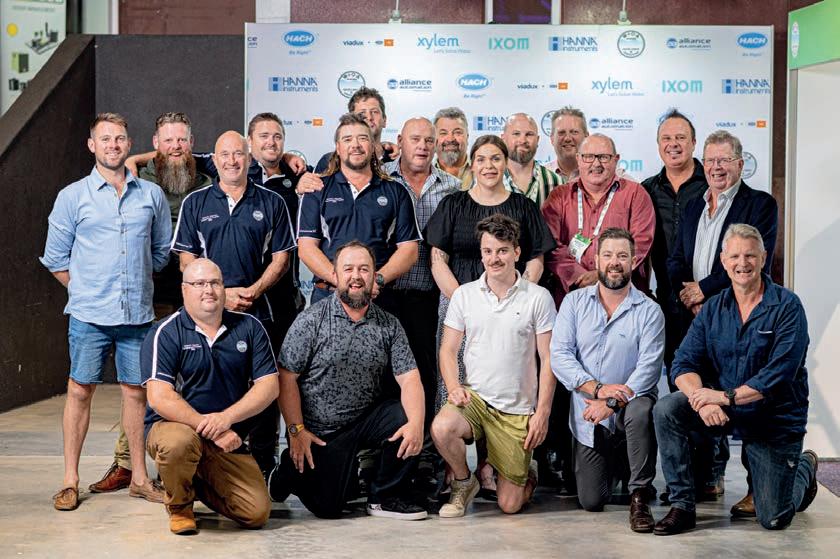

IDIOTS are big winners
While many people would object to being called an idiot, that’s not necessarily the case for WIOA members. The IDIOTS (Inducted as Delegates of the Inextricably Obstructed Tap Society) award was introduced to recognise individuals’ services to the Association. The award is designed to complement Life Membership, the Association’s most prestigious honour. It is presented to an individual in recognition of their commitment to the vision and philosophies of the Association and the active promotion of WIOA through distinguished service to the Association.
“It’s all about recognition and alignment to the goals of WIOA,” Barnett said. “We’re fortunate to have a lot of individuals who have shown their long-term passion for WIOA and continue to contribute to the delivery of our vision and mission. We like to recognise them in the lightest of ways. It sounds a bit quirky, but it’s highly prestigious
within WIOA. I guess it’s a show of gratitude to those who have contributed so much.”
calendar expanding
WIOA is noted for having annual conferences and exhibitions in Victoria, New South Wales, and Queensland. After several years of successful events, Barnett believes this is an opportunity to refresh its events calendar.
“When I look at the conferences, I have to acknowledge the number of people involved,” Barnett said. “We all come together at these events that represent a networking opportunity, a prospect to learn about new technology and share learning. Ideally, we can do that on a grander scale as time progresses.”
It’s not just the big events. Barnett looks forward to the smaller events because they are more intimate and provide more opportunities for longer discussions.
“We are very excited to be holding our first event in Western Australia
Each WIOA conference provides a unique opportunity for networking and collaboration.
for the first time in a long time,” he said. “As such, we are planning for an interest day in Western Australia. We are also looking into the Northern Territory to see how we can support them.”
What’s coming for WIOA
In the coming years, Barnett wants to increase the level of engagement with its membership base.
“WIOA is getting bigger than any one individual,” he said.
“However, I’m looking at it more from a process point of view. If we are increasing our engagement, it means that there are more avenues for feedback. That feedback from the wider WIOA community will help us steer the next evolution of WIOA. That will help keep us relevant and current about the issues and the support the operation sector will need nationwide.”
For more information, visit wioa.org.au
Wastewater treatment plants are designed to treat water before it is discharged into waterways. Pollutants and contaminants complicate this process, so understanding emerging contaminants is vital for the urban water sector.
WHETHER WE LIKE it or not, wastewater treatment plants (WWTPs) are an essential gateway between the community and the environment. Wastewater treatment plants accept, manage, and treat water on behalf of the community on its journey to the broader environment. In recent times, the focus for WWTP effluent has expanded away from managing the familiar nutrient and microbiological contaminants to include the more challenging contaminants of emerging concern (CEC).
It is known that many contaminants, including CEC, enter wastewater from industrial sources, such as trade waste. Trade waste can include wastewater from a diverse set of industries, ranging from food manufacturing to chemical manufacturing to metalworking to waste management (including landfill leachate). The list goes on. However, this is only part of the story.
Many CECs enter sewers as the result of normal human activities: preparation and cooking of food, bathing, laundry, managing our health with medications and supplements, exercise, and leisure activities to name a few. For many of these contaminants, human activity results in a constant flux of contaminants to wastewater. That these contaminants are derived from domestic sources does not change WWTP operators’ obligation to manage the contaminants. Scheduling specific chemicals on the Industrial Chemicals Environmental Management Standard (IChEMS) is registered
under Australia’s obligations under the Stockholm Convention. It seems likely to result in more chemicals being prohibited in Australia (unless specifically exempt) and thus prohibited from being released into the environment. There is concern that water utilities will then effectively be responsible for releasing prohibited chemicals into the environment.
The Queensland Water Directorate (qldwater) and its members – the state’s water and sewerage service providers – are tackling the problem of CEC in treated wastewater from two directions.
Source control
Contaminants in wastewater are diverse. Everything we eat, drink, medicate our bodies with, wash off our bodies, wash off our clothes, and use to clean our homes makes its way into the sewer. Because of this, wastewater is a cocktail of chemicals.
Wastewater treatment plants are designed to remove nutrients and pathogens, but they are not effective at destroying some contaminants. This includes some chemicals, such as PFAS and its precursors. These are especially topical now because of the release of a Draft PFAS National Environment Management Plan (NEMP) 3.0, which included proposed limits for PFAS in biosolids for the first time. Biosolids are what remains of microorganisms after the digestion of organic matter during wastewater treatment. They are a valuable fertiliser and soil improver for agriculture.
About half of the PFAS that ends up in biosolids and treated wastewater comes from domestic sources because it is present in many everyday products, from food packaging to cosmetics and textiles. Another example is galaxolide, a fragrance compound used in everything from cleaning products to cosmetics. The recent Review of the NSW Biosolids Guidelines proposed limits for galaxolide in There is a range of potential contaminants of emerging concern from everyday household chemicals.
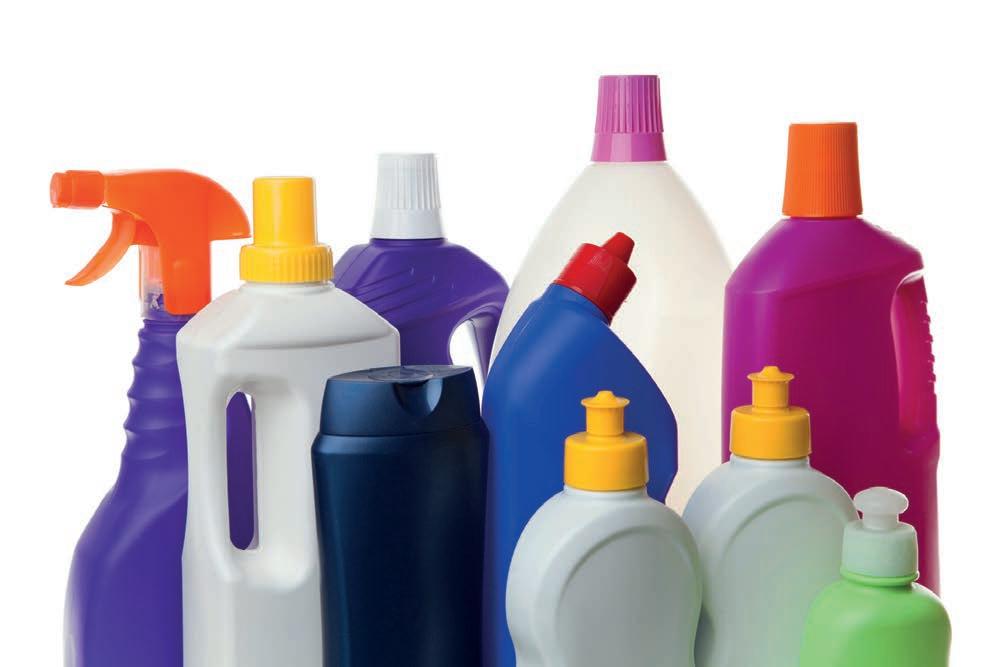
Image:Helder Almeida/ shutterstock.com


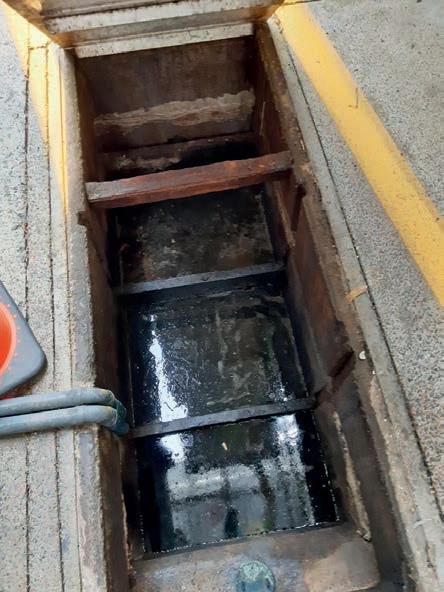
biosolids for the first time for a chemical exclusively sourced from domestic wastewater.
This means that the most effective method for many contaminants may be to control the chemicals at the source, such as eliminating the contaminant from products used in the community.
With this in mind, the qldwater Consortium for Research and Advocacy on Contaminants has developed the Chemical Concoctions website. This website seeks to educate the public about the hidden sources of contaminants in their homes. It also gives people information about their choices as consumers to reduce the amount that makes it into wastewater.
Top: The use of biosolids in the agriculture industry requires the elimination of almost all contaminants. Image: Arkwood Organic Recycling
Above: Collecting trade waste for recycling and reuse needs the right equipment. Image: Urban Utilities
The other source of CEC in wastewater is trade waste. Trade waste discharges to sewers are typically managed through trade waste agreements with the local water and sewerage service provider. The agreements usually specify limits for common sewage parameters (including biological oxygen demand (BOD), ammonia, grease, and pH). These are typically determined by the impact a discharger’s wastewater stream will have on a wastewater treatment plant.
However, many trade waste sites are also known contributors of untreatable chemicals. For example, landfill leachate is commonly accepted as a trade waste stream. They can be high in pesticides, hydrocarbons, flame retardants, and PFAS. These sites are expected to have high levels of BOD, ammonia, nitrogen, and phosphorous. Landfill leachate is an obvious source of CEC via trade waste, but many CEC are unknowingly discharged in trade waste and can affect the quality of the treated wastewater. If trade waste sources
can be identified, there may be opportunities to substitute for or otherwise reduce problematic chemicals. This can prevent the release of contaminants that pose the greatest environmental risk.
With this in mind, a “Cheat Sheet” has been developed to support the sewerage service providers, employees, and customers in making informed decisions on reducing the impact of emerging contaminants, especially for trade waste. Data was sourced from the WaterRA Emerging Chemicals Database for National Awareness (Echidna) database to view the most common pollutants in wastewater and their risk based on a mix of bioaccumulation, persistence, and toxicity rankings.
The data has been refined to include chemical usage and focus on a mix of the most common and/ or potentially hazardous. Further data for the presence, types, and sources of contaminants pinpoint industries of concern to focus on.
For more information about Chemical Concoctions, visit: chemicalconcoctions.org
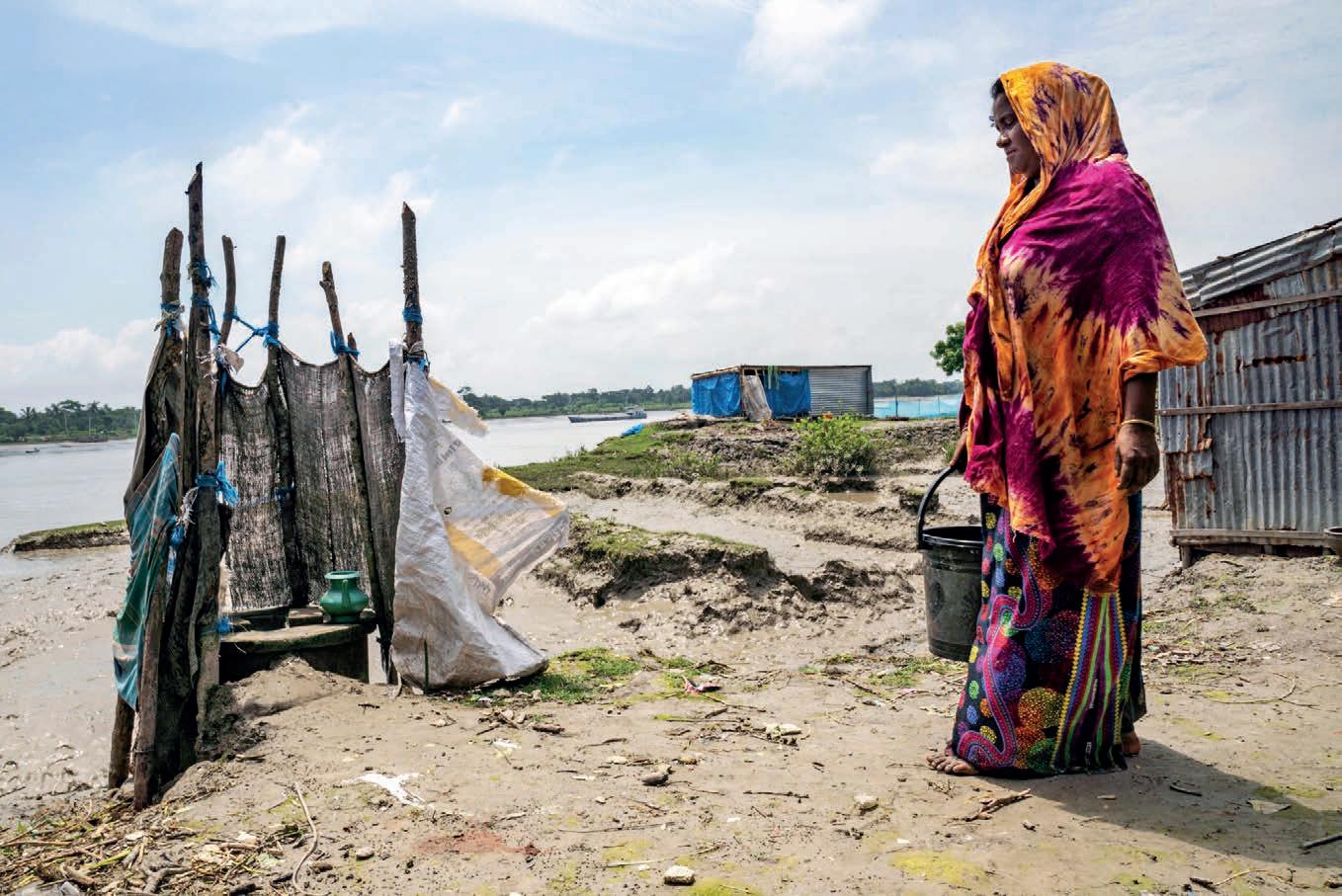
There are millions of people around the world who live without clean water close to home. Over 1.7 billion people do not have decent toilets. WaterAid Australia is one organisation seeking to change that.
IN A WORLD where access to clean water is a fundamental human right, millions still struggle to secure this basic need. Every day, countless individuals, particularly in developing countries, face the reality of contaminated water sources and inadequate sanitation facilities. This lack of access has devastating consequences, impacting health, education, and overall well-being.
Organisations like WaterAid Australia are working to provide everyone, everywhere, with clean water, decent toilets, and good hygiene. Under the leadership of Tom Muller, its Chief Executive Officer, WaterAid Australia is working with local partners in the region to help those communities.
“I’ve always worked in international development,” said Muller. “While it’s not a traditional path into the water industry, I’ve always loved working on development challenges. There is no greater challenge
to me than water, sanitation, and hygiene.”
WaterAid Australia forms part of the international not-for-profit organisation, WaterAid. The Australian branch was set up in 2004 as a collaboration between the water industry and the international aid sector. They have supported projects in Bangladesh, Ethiopia, Ghana, India, Malawi, Nepal, Mozambique, and Tanzania with funding from the Australian Government.
“We implemented our first projects in the eastern highlands of Papua New Guinea,” he said. “Since then, we’ve focused on working in Timor Leste, Papua New Guinea, and Cambodia.”
The United Nations has a range of Sustainable Development Goals (SDGs). SDG 6 is dedicated to water. It seeks to ensure safe drinking water and sanitation for all and focuses on the sustainable
Jamila is carrying water to use after going to the toilet on the banks of the river Rupsha. There are no water and hygiene facilities. Tidewaters overflow this area regularly and the recent super cyclone Amphan destroyed most of the riverside toilets. As it is a coastal region, as well as the start of the Sundarbans (mangrove forest), a climate-induced natural disaster like a cyclone, river erosion, floods, tidal surges, and sea-level rises bring big challenges to maintaining proper hygiene. Bangladesh.
Image: WaterAid/DRIK/Habibul Haque
management of water resources, wastewater, and ecosystems. At the same time, SDG 6 acknowledges the importance of an enabling environment.
“One of the things I love about water and the Sustainable Development Goals is that SDG 6 connects us all globally,” Muller said. “The SDGs tie us all together as we think about the local and global challenges we all face in the water space. Water stories are a fantastic way in which people can talk about the challenges and find solutions.”
Water stories are universal in that any community has stories about water, whether it is Lismore or Lautém, Phnom Penh or Port Moresby.
“At the moment, different places are facing different climate challenges,


little water,” he said. “These issues will be exacerbated and accelerated, regardless of the country. That’s the common challenge and story facing people around the world.”
The water industry faces many challenges, and international aid programs focusing on SDG 6 are trying to solve their own. Muller believes that the challenges are multifaceted.
“We need to find the political will and commitment to invest in sustainable water, sanitation, and hygiene,” he said. There are also huge challenges around urbanisation and informal settlements. In the latter case, we must ensure there are strategies in place to connect informal settlements to utilities and not exclude them from access to water from utilities.”
This is on top of the existing regulatory environments and climate change challenges. A big part of that challenge is the last mile. While commonly thought about for package and postal delivery, the same can be said for the water and wastewater industries. It’s not good enough to build a wastewater treatment plant if people are still openly defecating in the street.
“How do we work with communities to effectively distribute functioning
Goncalves collects water from a hole she has dug out. She uses pebbles to filter the water in this hole. TimorLeste.
Image: WaterAid/ Tariq Hawari
“It’s well known that open defecation leads to diarrhoea and other health issues. That kills nearly 800 children a day. That’s why the challenge globally is ensuring that the people who don’t currently have access to basic water and sanitation do get access to it within the timeframe of the SDGs. That’s just over five years away.”
WaterAid Australia has long partnered with the Australian water industry and sees the need to build solidarity across the sector.
“We’re lucky that there’s so much support for WaterAid from the Australian water industry and companies that work with utilities,” said Muller. “It’s grounded in that common understanding of the human experience of having too much or too little water. The sector’s commitment to making a difference helps us make a difference in Australia, Timor Leste, Cambodia, and Papua New Guinea.”
Since WaterAid Australia’s establishment, it has helped 5.7 million people in about 14 countries get access to clean drinking water, appropriate sanitation, and hygiene programs. It has upgraded 511 schools and supported 37 districts in multiple countries to end open defecation.
through the fundraising they do for us,” he said. “There are also ambassadors in every state who are championing the cause. WaterAid Australia has also collaborated with different companies with unique skill sets. One example is when we drew on the hydrological expertise of one private sector company for a project in Papua New Guinea. We’ve tapped into the water industry’s knowledge base, and the passion and understanding the industry has for these issues.”
WaterAid is working with many other organisations to reach an additional 400 million people with sustainable and safe water, sanitation, and hygiene (WASH) services worldwide by 2030. As an organisation, it wants to help more people. Muller pointed out that about 70 per cent of the Timor Leste population lives in rural areas.
“That means there is still a huge need for basic water, sanitation, and hygiene,” Muller said. It’s also about lifting people up the WASH ladder to a safer environment. We aim to help catalyse rapid change and quickly increase the number of people accessing safely managed water and sanitation.”
For more information, visit www.wateraid.org/au
To finish each issue, we aim to look at the lighter side of water and water-related issues. If you’ve seen an amusing story, let us know so we can consider it for the next issue.

Water is a different shape?
For as long as I am sure most of our readers can recall, the water molecule comprises just two hydrogen atoms and one oxygen atom. It was drilled into us at school and led to the amusing dihydrogen monoxide prank that exists to this day, where water is a “dangerous chemical” that could do irreparable damage to humans.
However, that may no longer be the case. Research from the University of Cambridge has suggested that every textbook model may need to be redrawn. The team found that the water molecules at the surface of salt water are organised differently than we previously thought.
Every aspect of our environment is influenced, in part, by the important reactions that take place between water molecules and the air. For example, evaporating ocean water is vital in understanding its role in atmosphere chemistry and climate science. Understanding these reactions is vital for trying to mitigate the impact of climate change. This comes about because of the distribution of ions where air and
water come together, potentially impacting atmospheric processes. However, a precise understanding of the microscopic reactions at this level has been a source of academic and scientific debate. A paper from the University of Cambridge and the Max Plank Institute of Polymer Research (Germany) showed that water molecules at this point are organised differently from what was traditionally understood.
How was this determined?
The researchers wanted to study how individual water molecules are influenced by ion distribution at the point where air and water meet. In the past, this has been achieved with vibrational sum-frequency generation (VSFG). This laser radiation technique allows scientists to directly measure molecular vibrations at these interfaces. The problem with that method was that it could only capture the strength of the signals. While this might seem like useful data, researchers needed to know whether the signals were positively or negatively charged. A positively charged ion is a cation, and a negatively charged ion is an anion. This is essential information when
While this is what we have long thought the water molecule looks like, this may no longer be the case.
Image: artegorov3@ gmail/stock.adobe.com
looking at molecular structures and reactions.
The team overcame these challenges by studying different electrolyte solutions using a sophisticated form of VSFG called heterodyne-detected (HD)-VSFG. They then developed advanced computer models to simulate the interfaces in different scenarios. The researchers found that cations and anions are depleted from the water/air interface. In simple electrolytes, these charged ions can have water oriented in both up and down orientations.
This is the opposite of every textbook model ever. For those who progressed far in their chemistry classes, we were taught that ions form an electrical double layer, with water molecules only oriented in one direction. So why does this matter? There is enormous potential to apply this finding in batteries and energy storage.
The paper was titled Surface stratification determines the interfacial water structure of simple electrolyte solutions It was published in Nature Chemistry at the beginning of 2024.

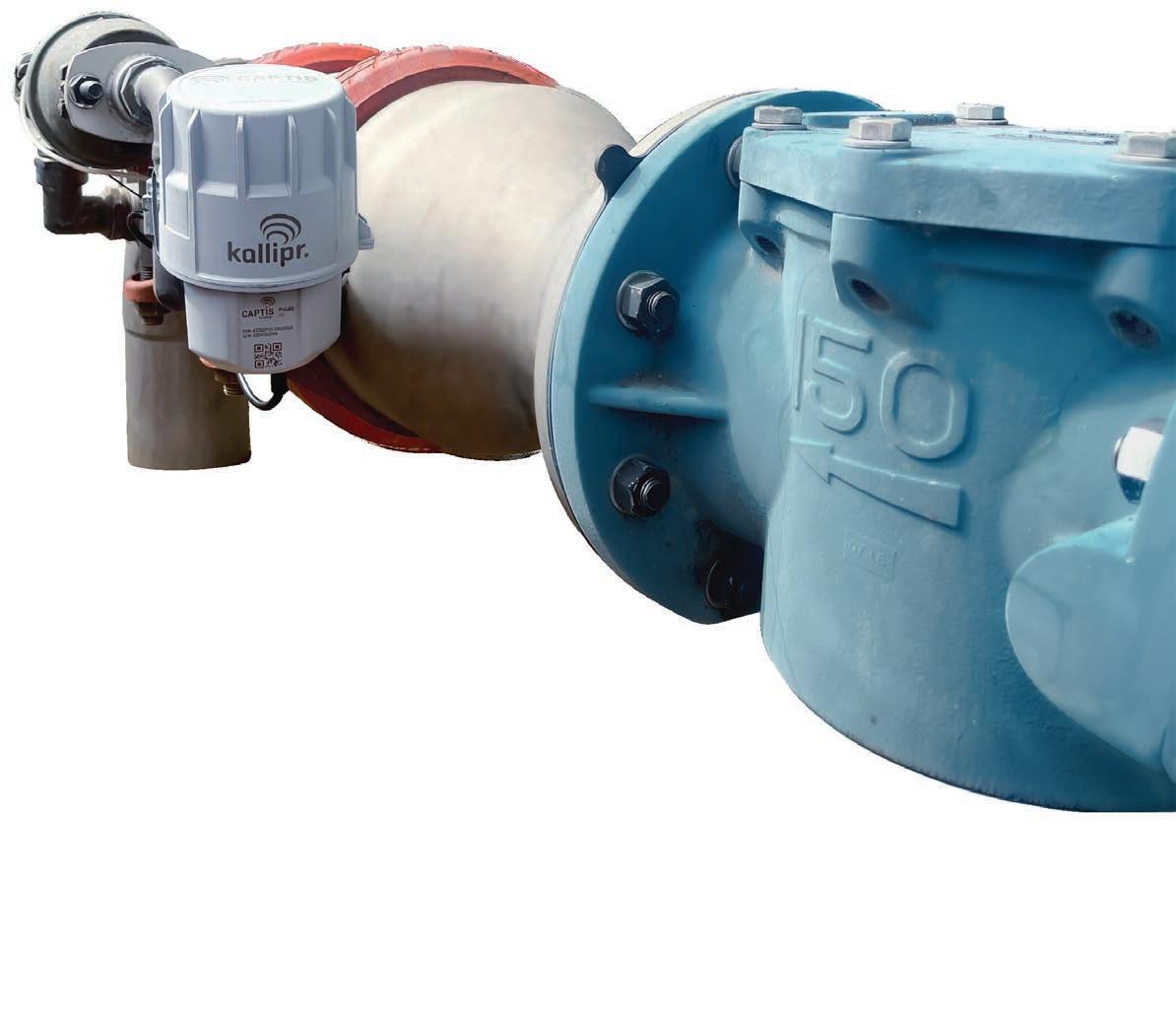
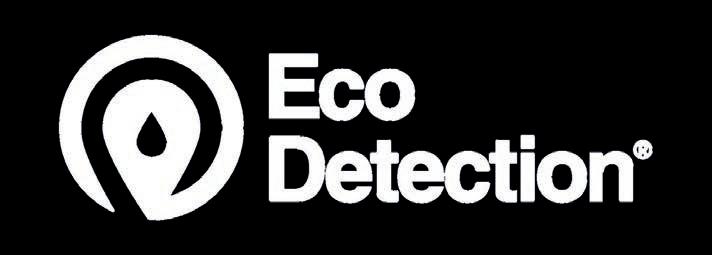
Upgrade your monitoring game with Eco Detection Ion-Q+. Experience real-time, cost-effective compliance without compromise. Say goodbye to expensive traditional methods and hello to reliability, enriched data, and up to 60% savings over three years. Each multiparameter analysis calibrated against an internal standard ensures accuracy, while direct ionic measurement eliminates spectral absorption or inferred measurement errors. With no biofouling and no drift, trust in consistent results. Enjoy up to 12 months of continuous operation without servicing, and with solar and satellite options, operate anywhere effortlessly.
Choose

